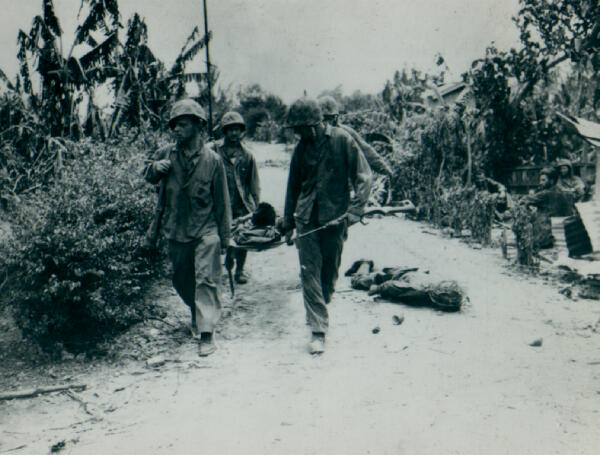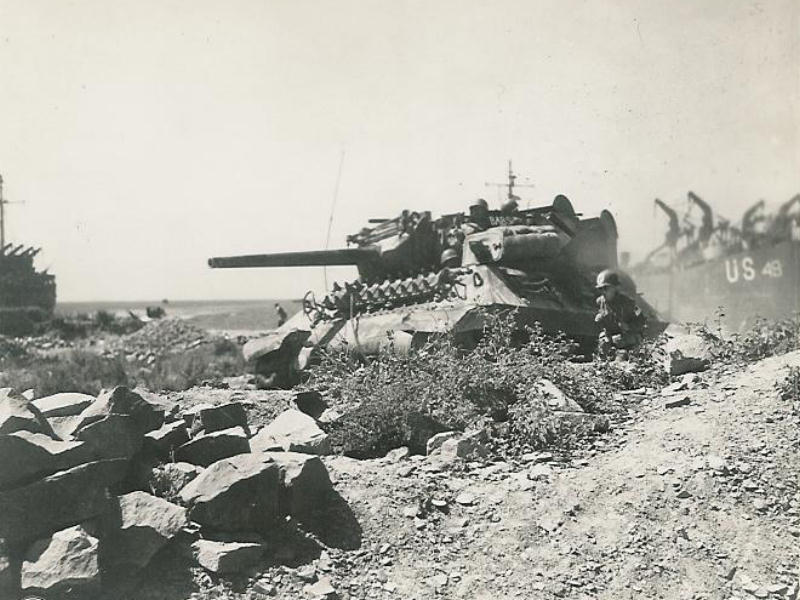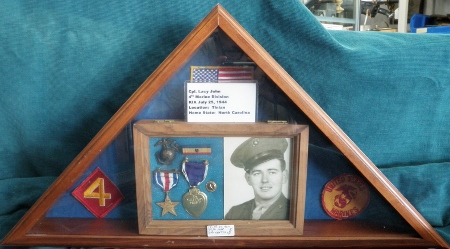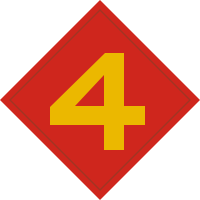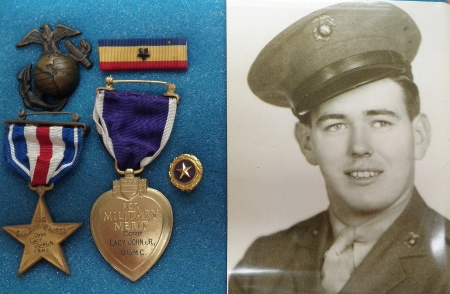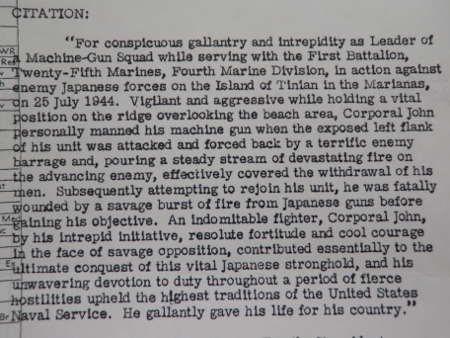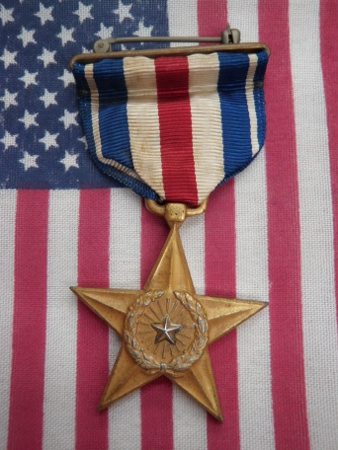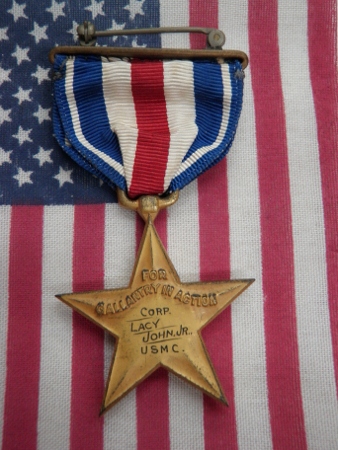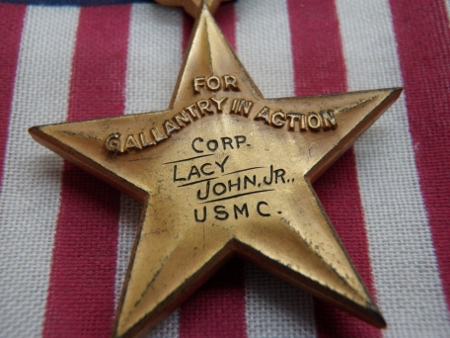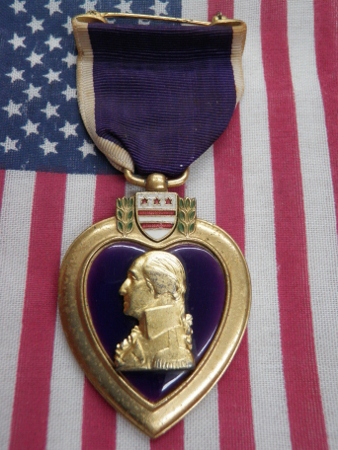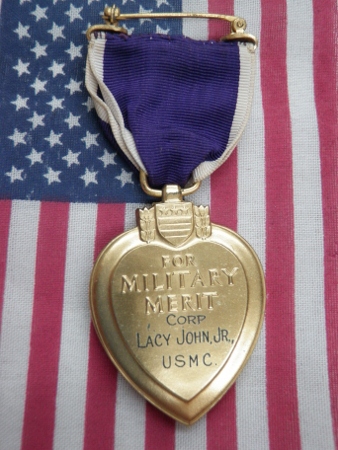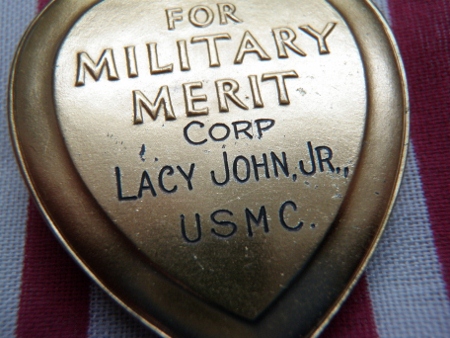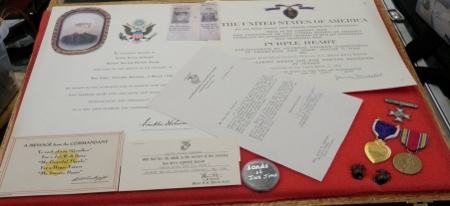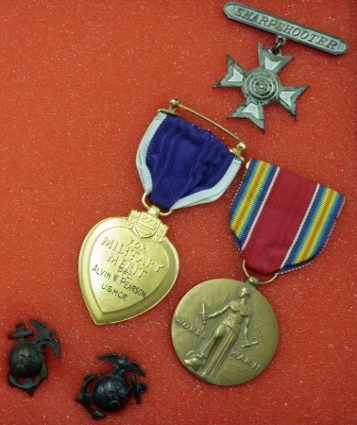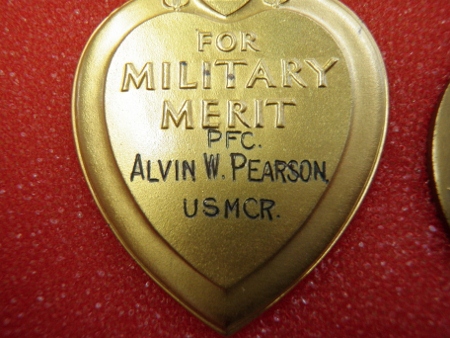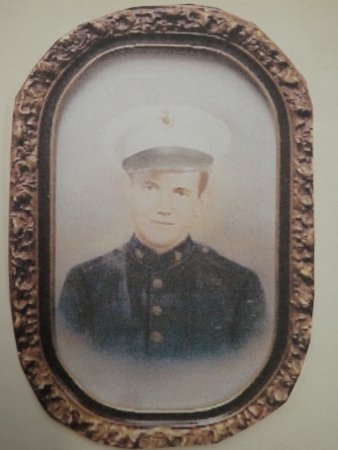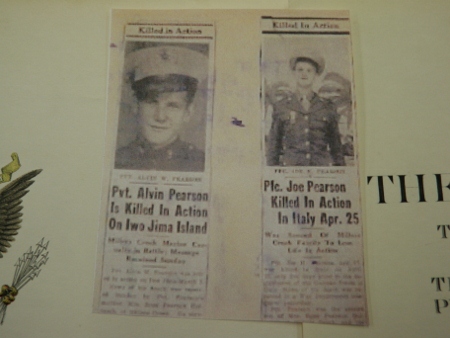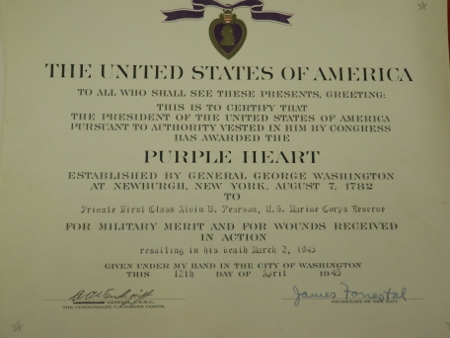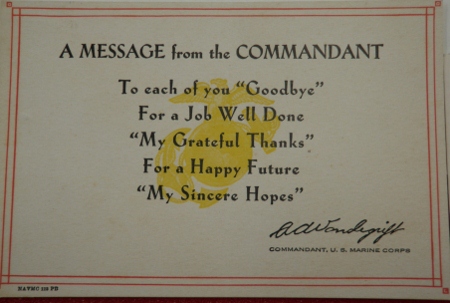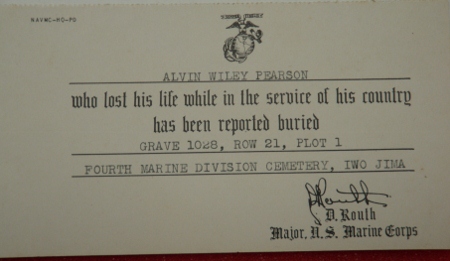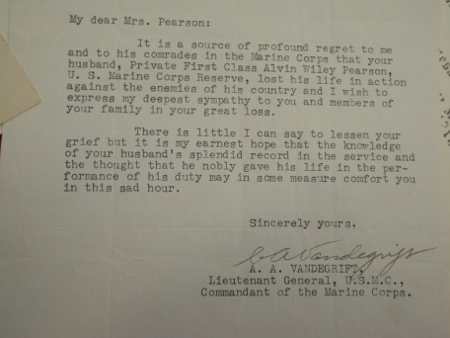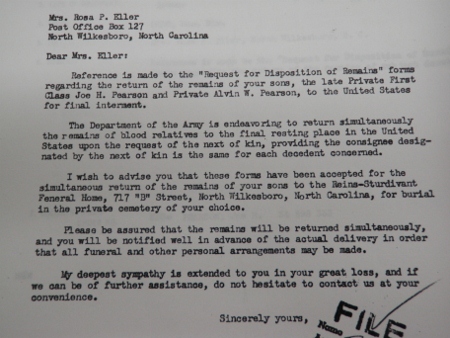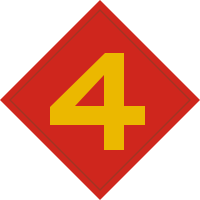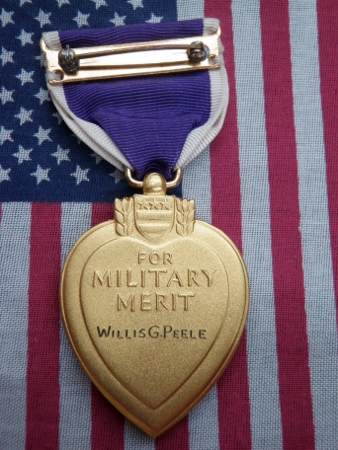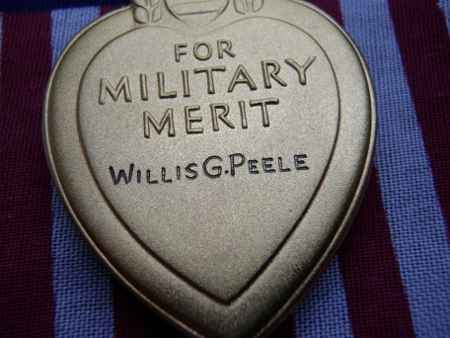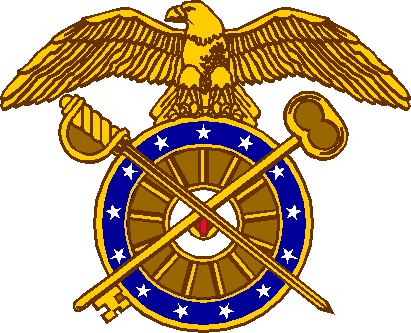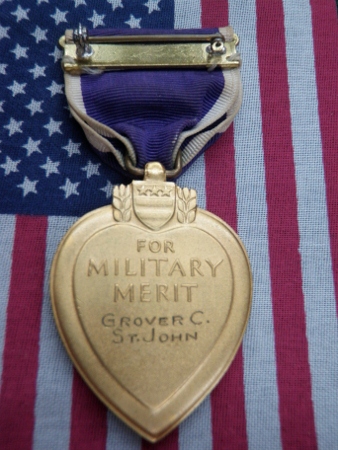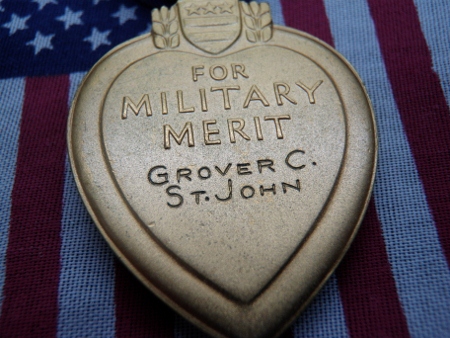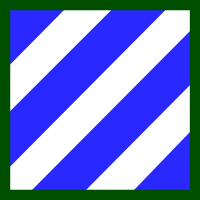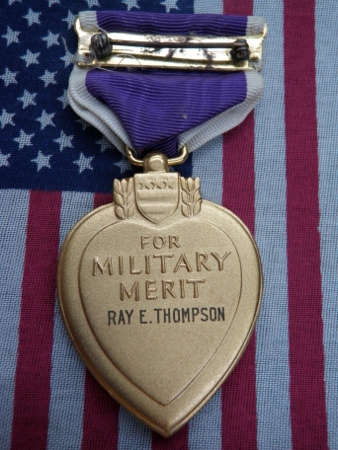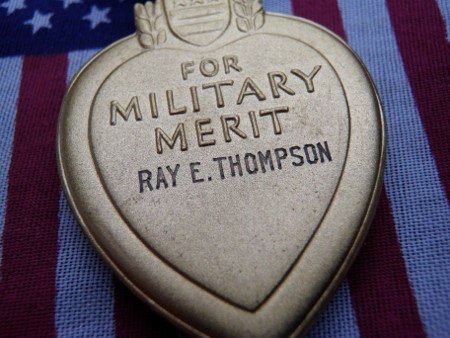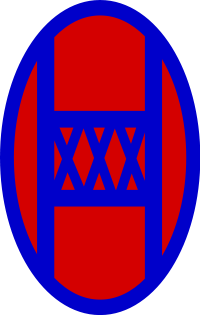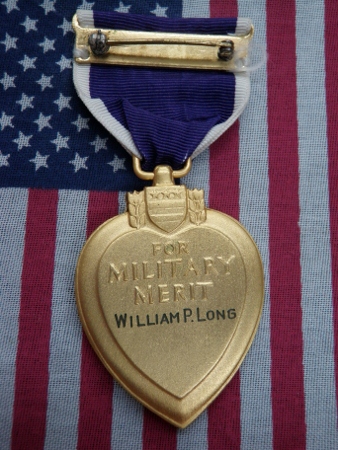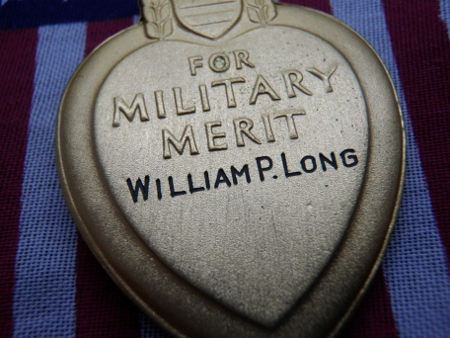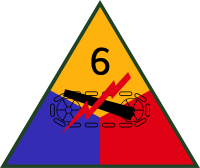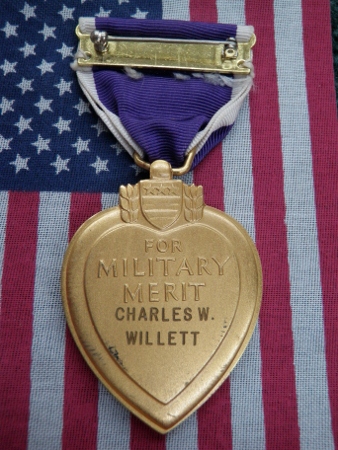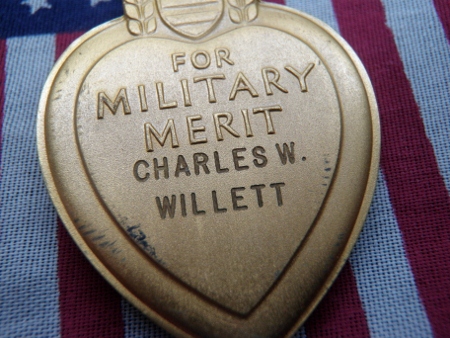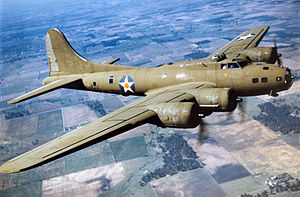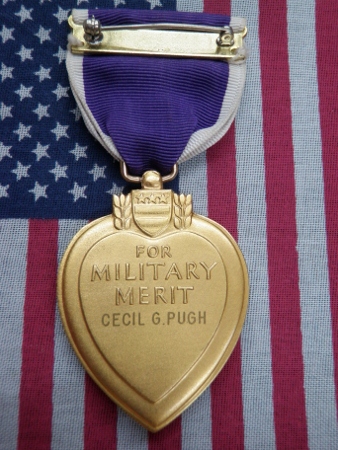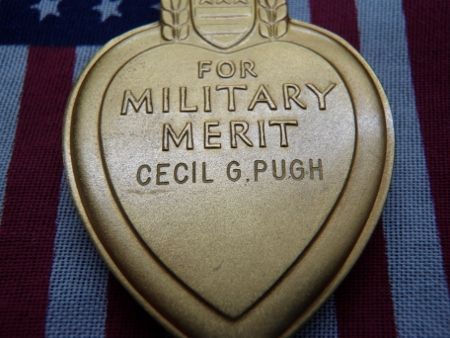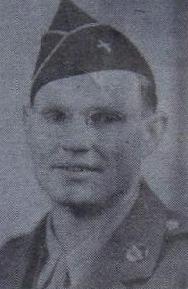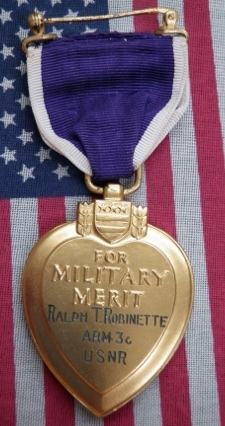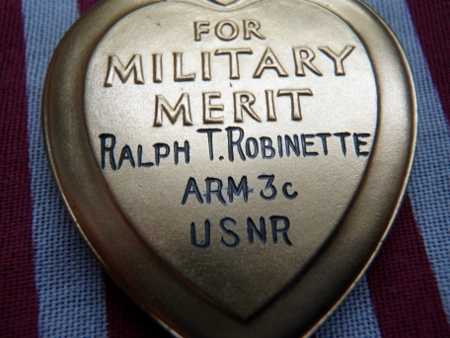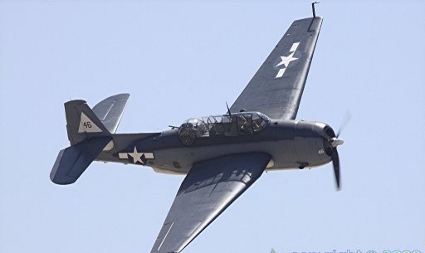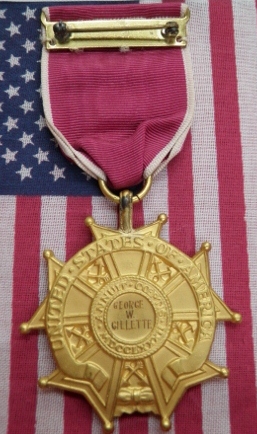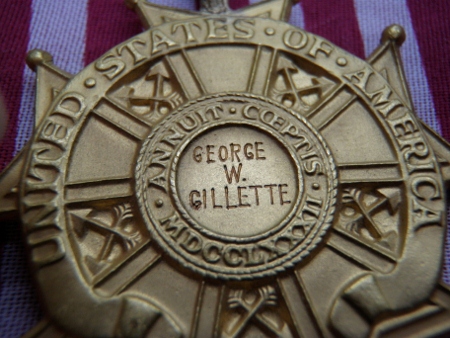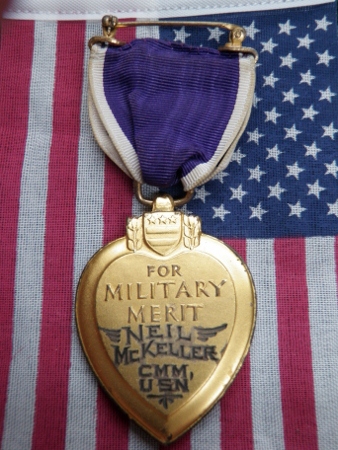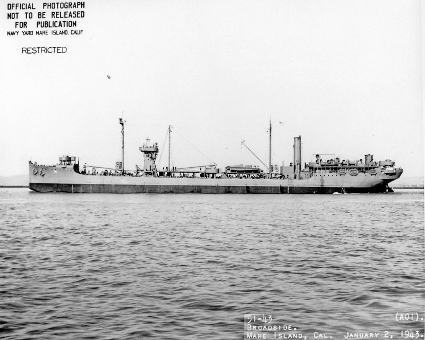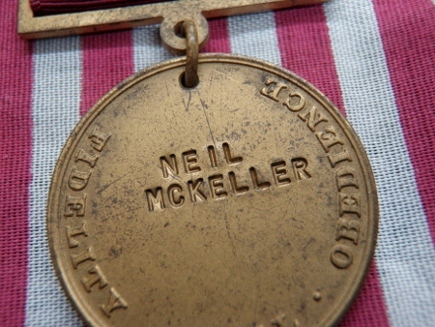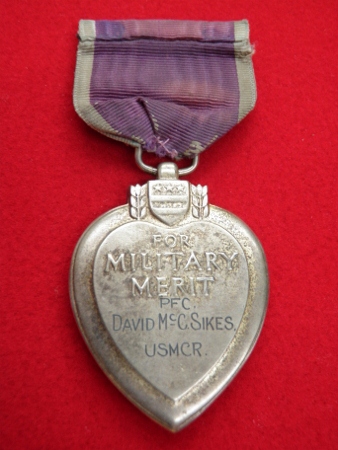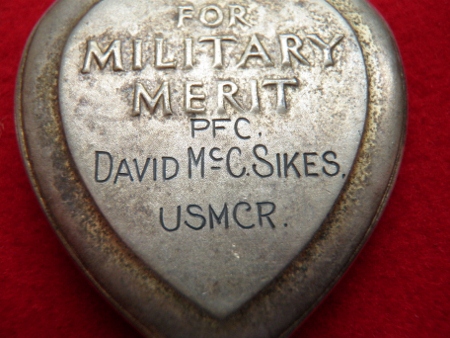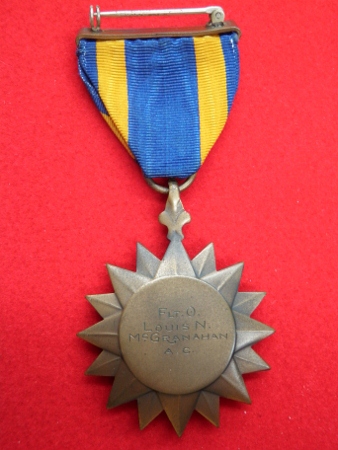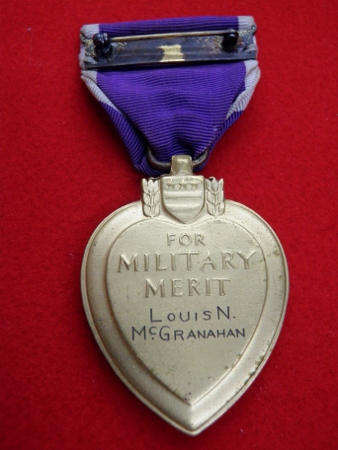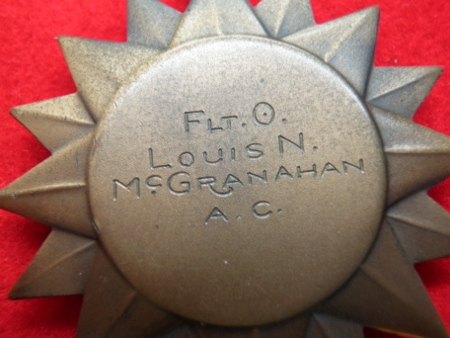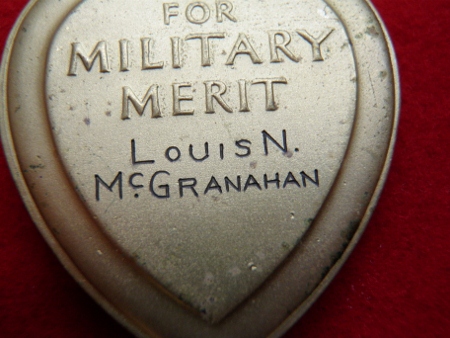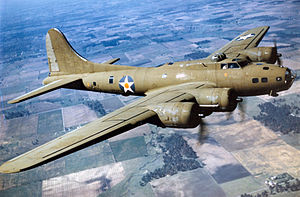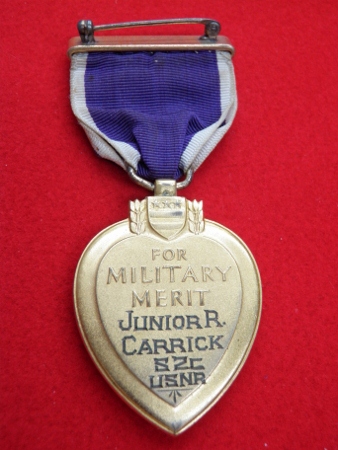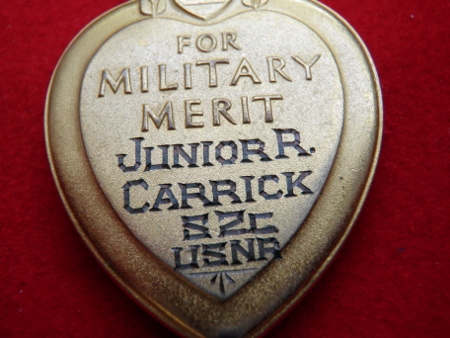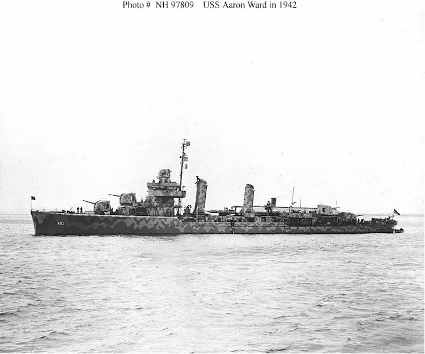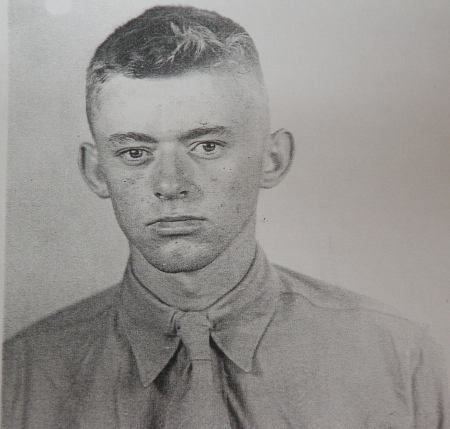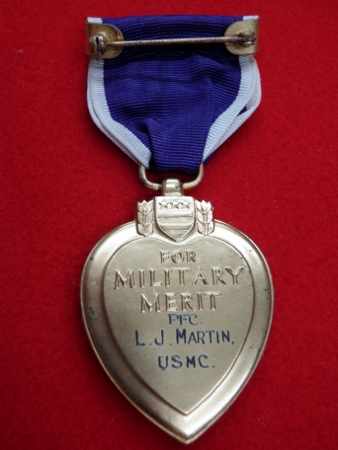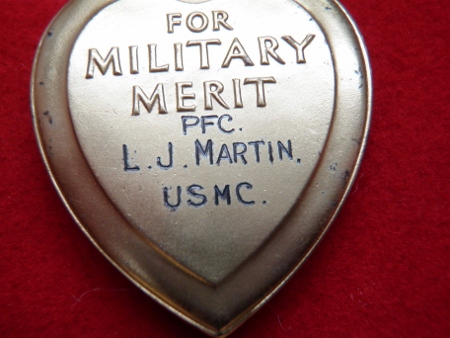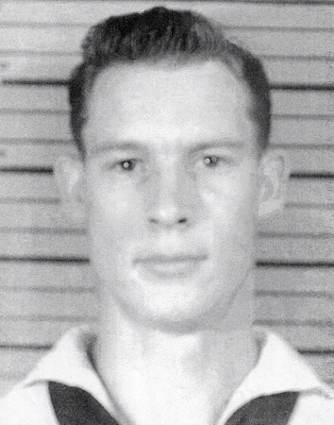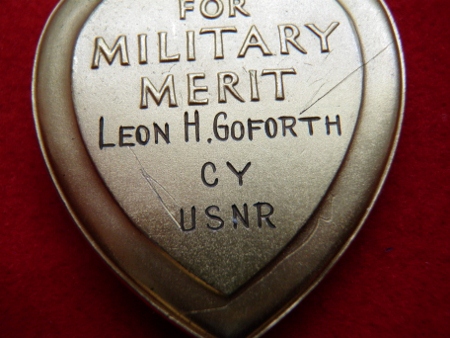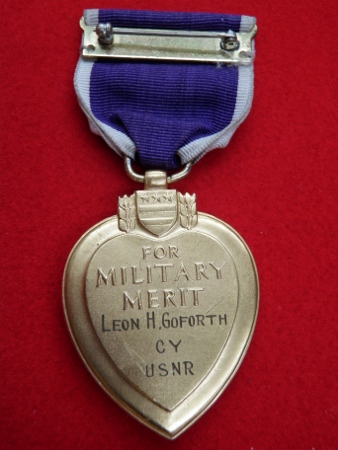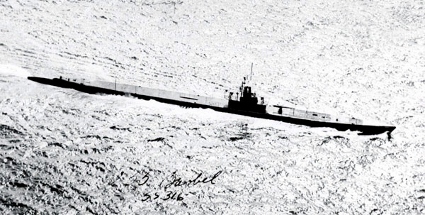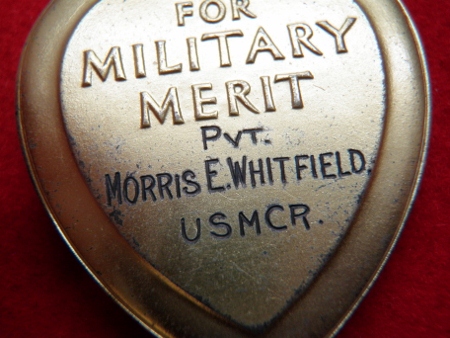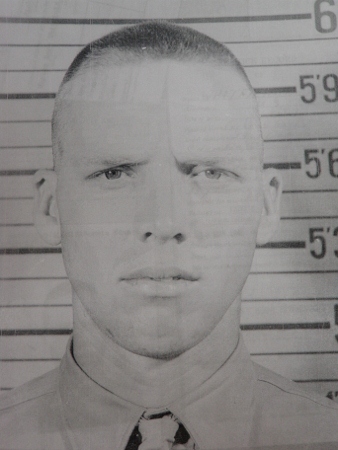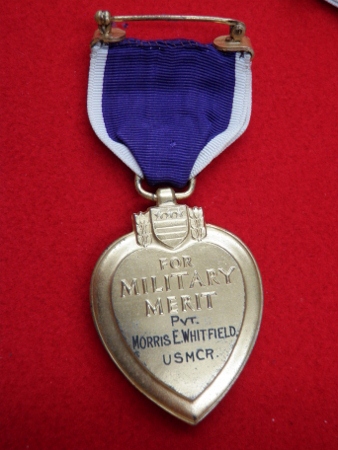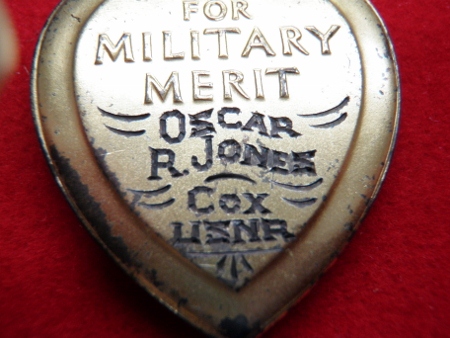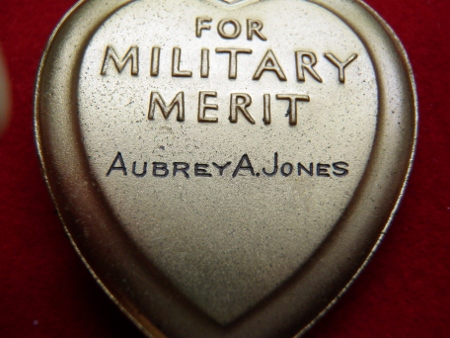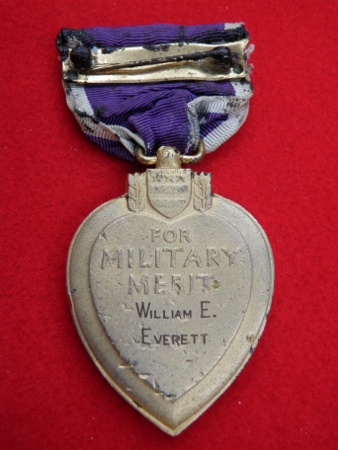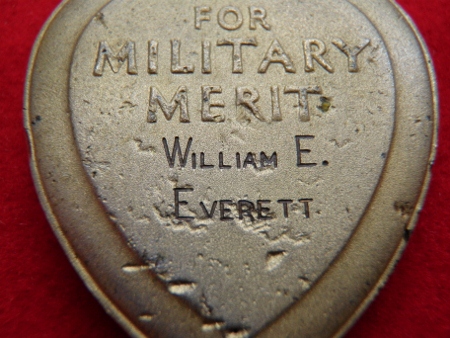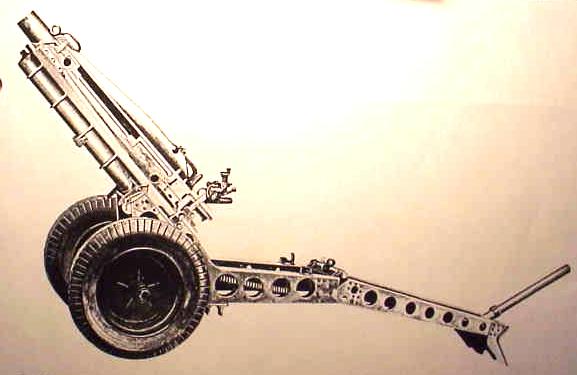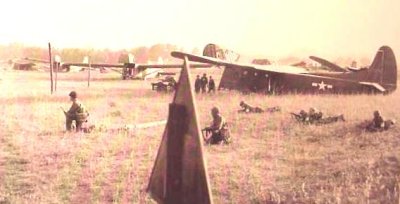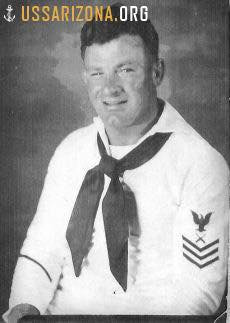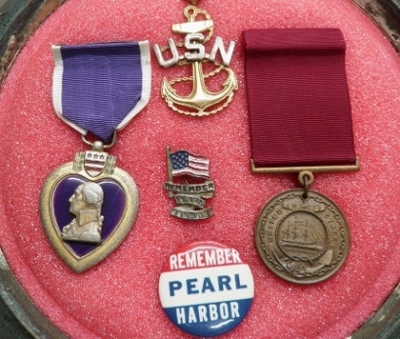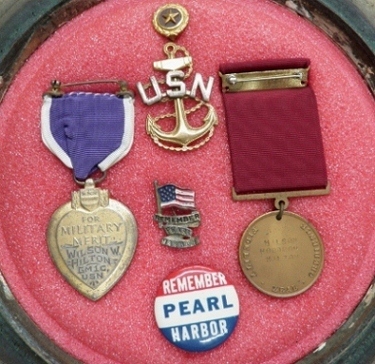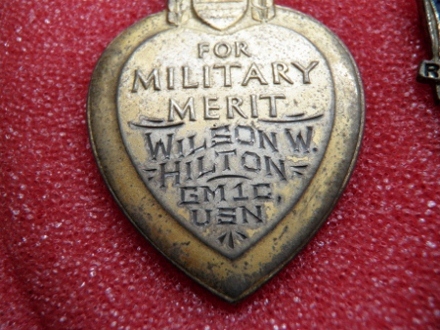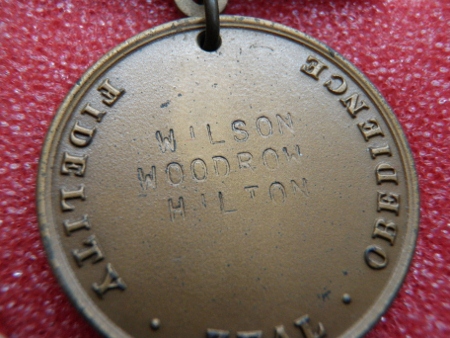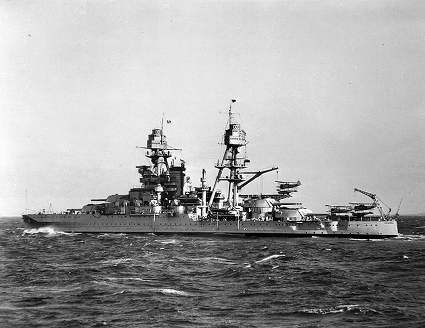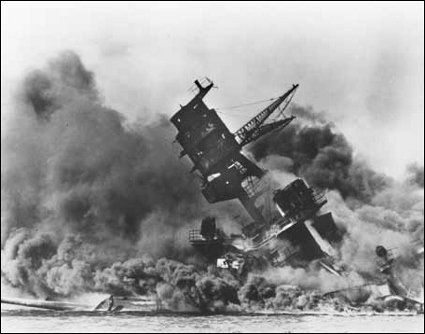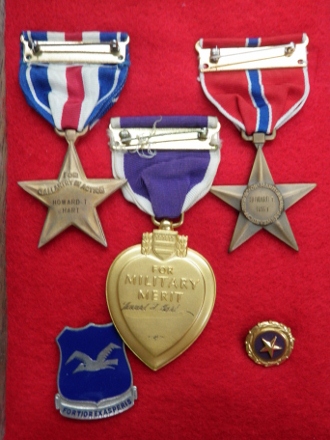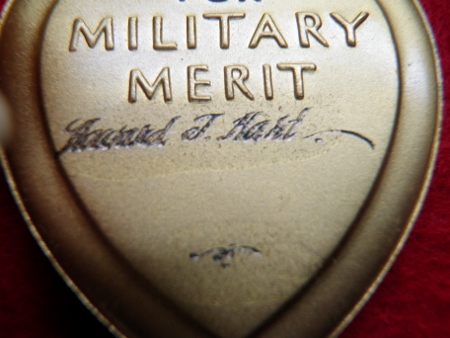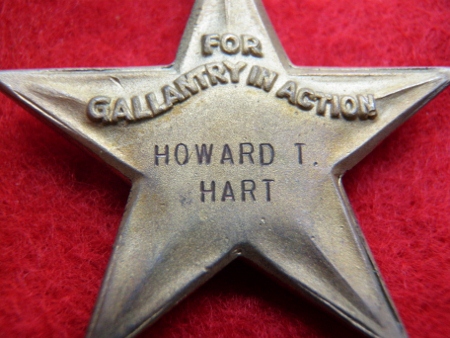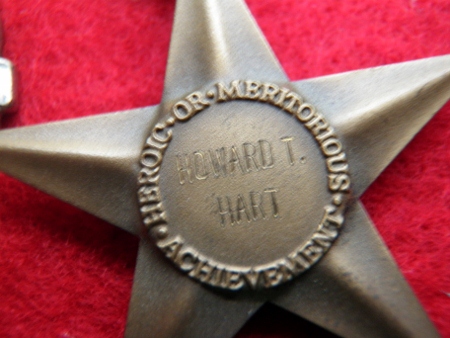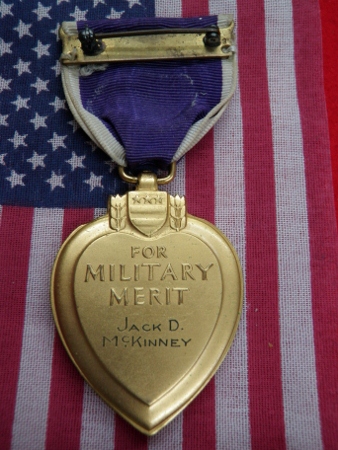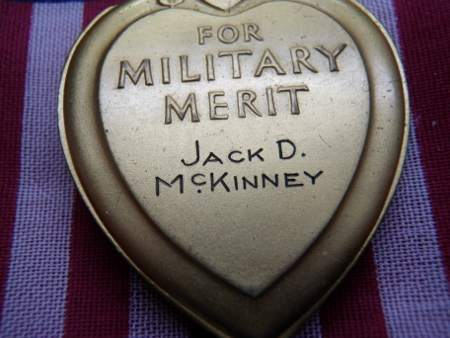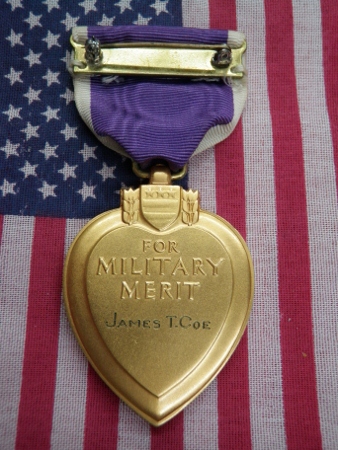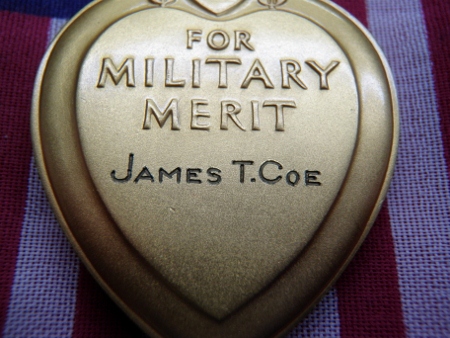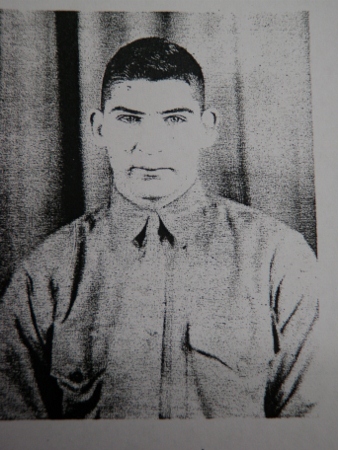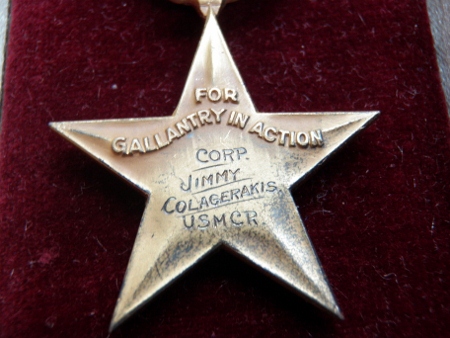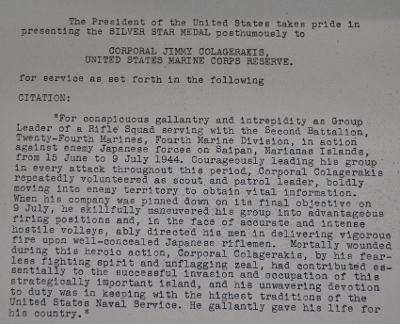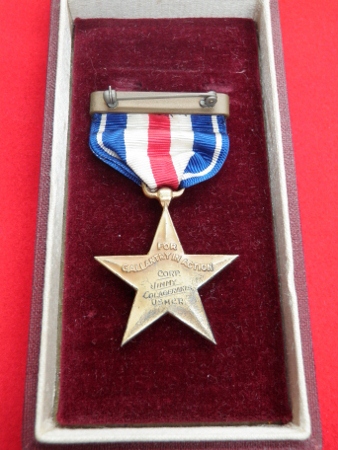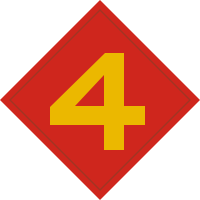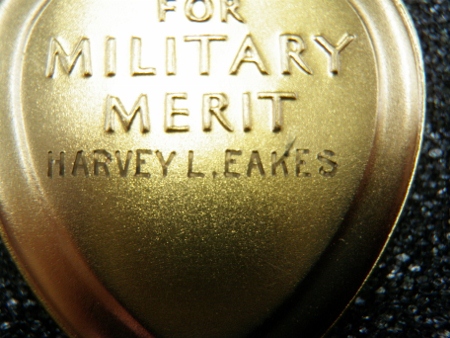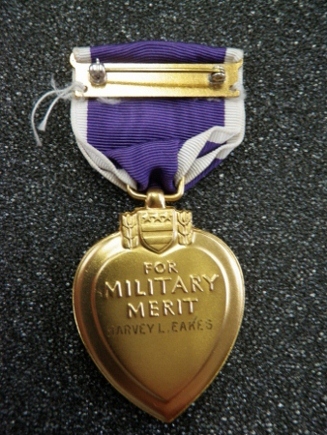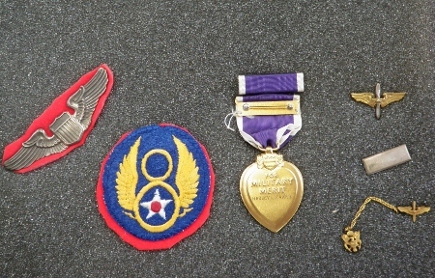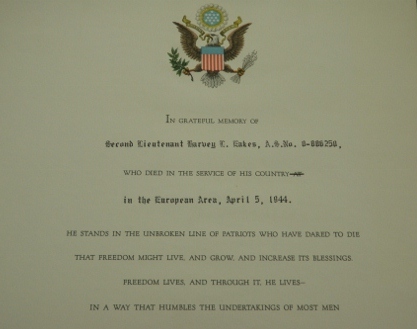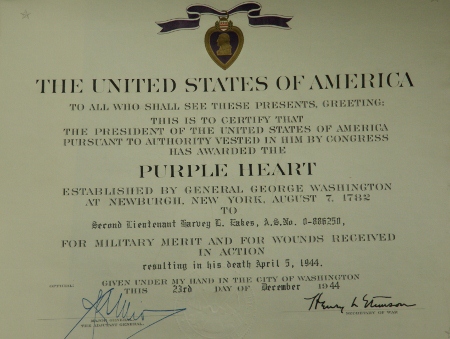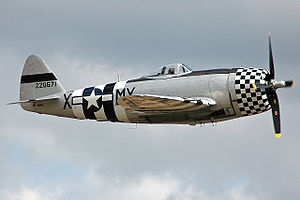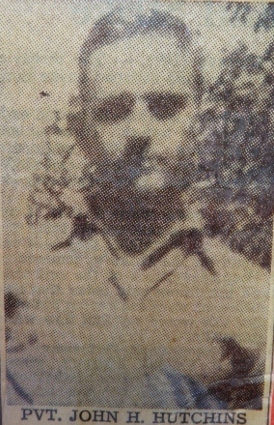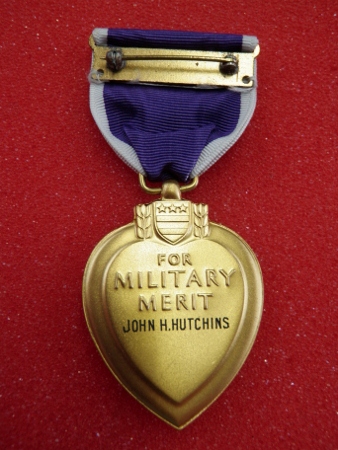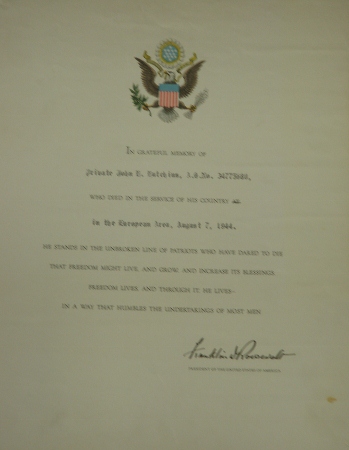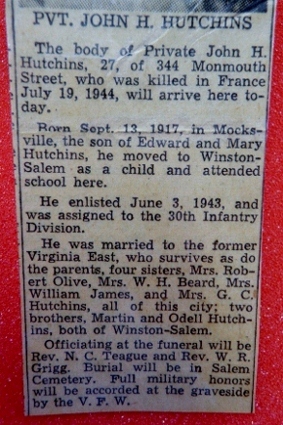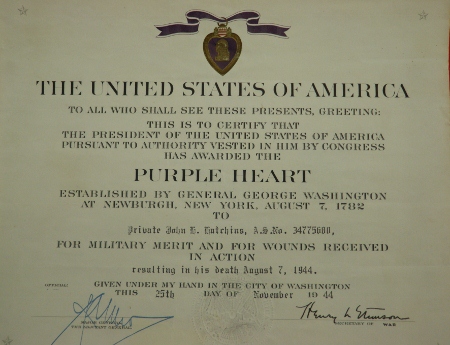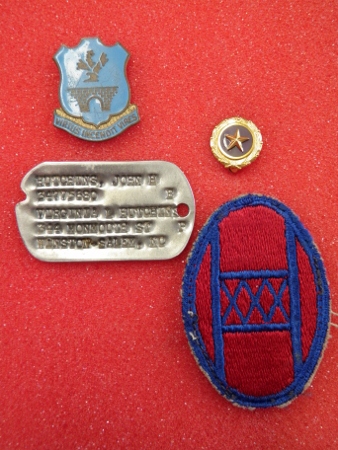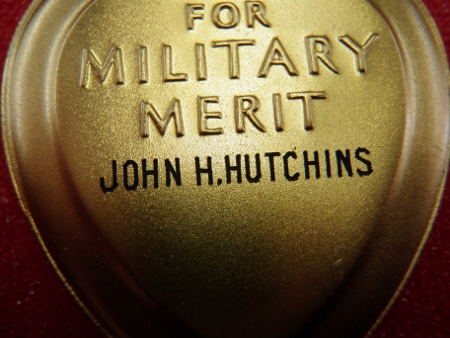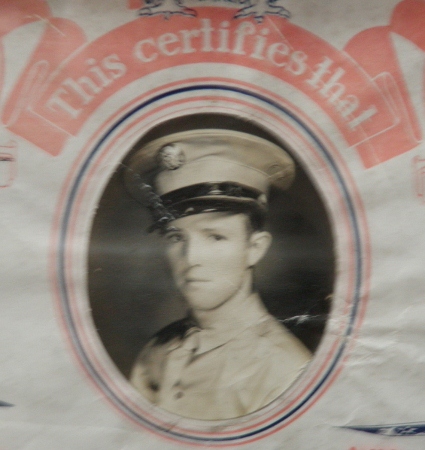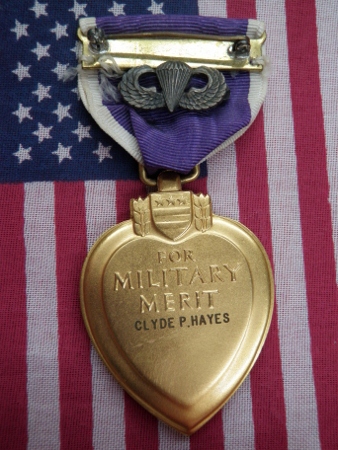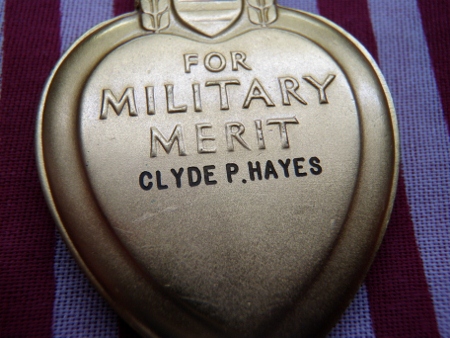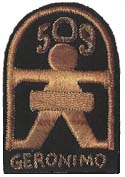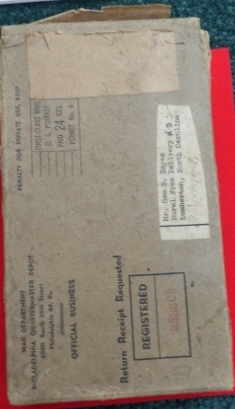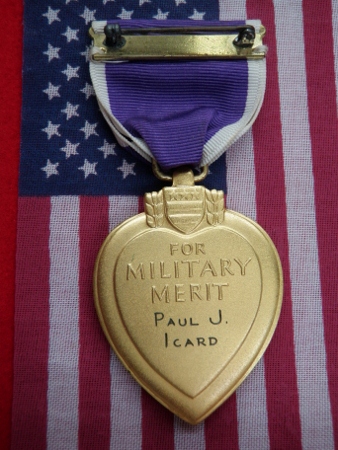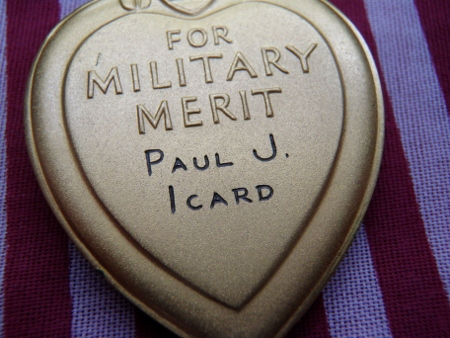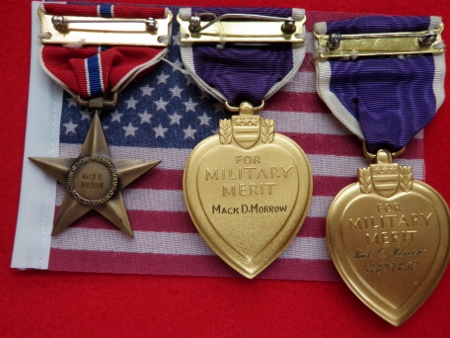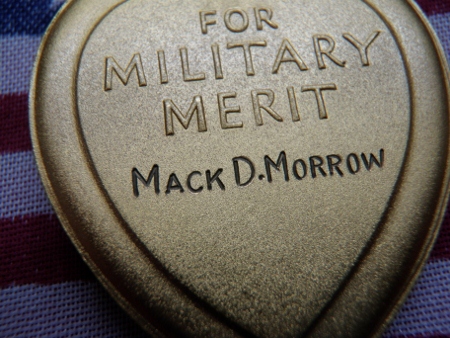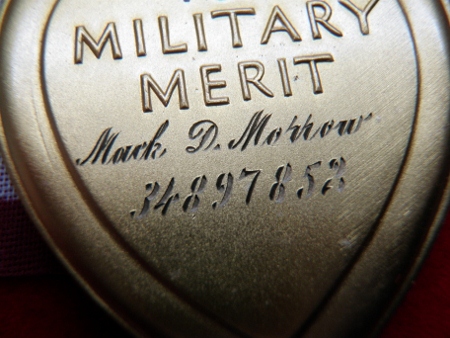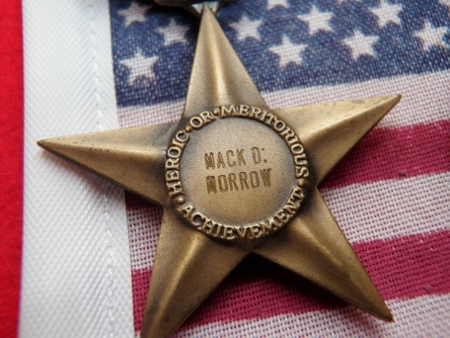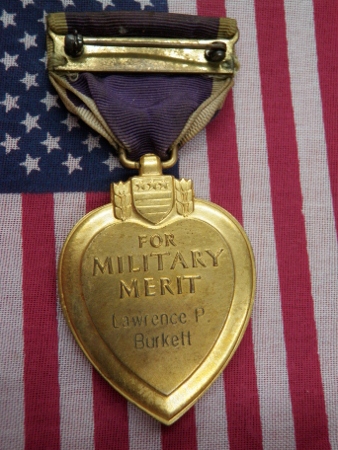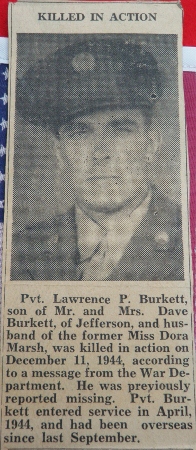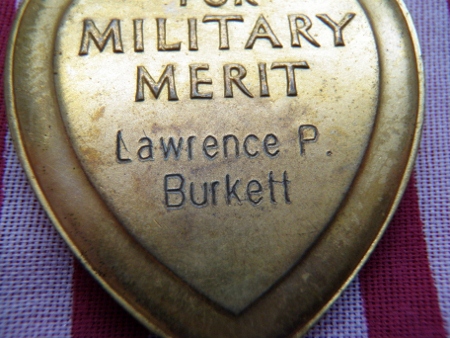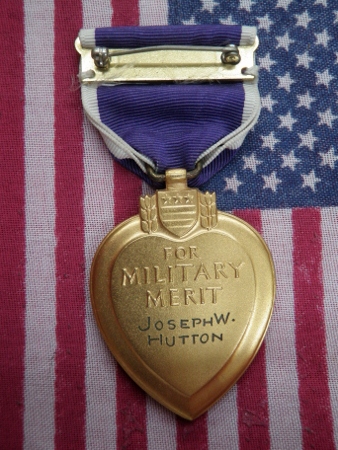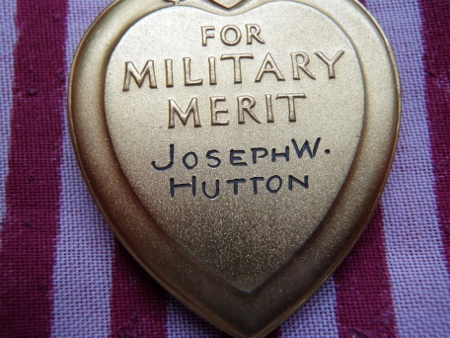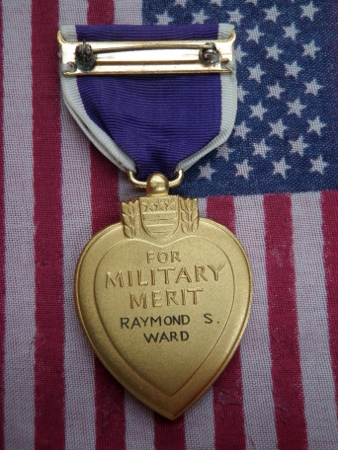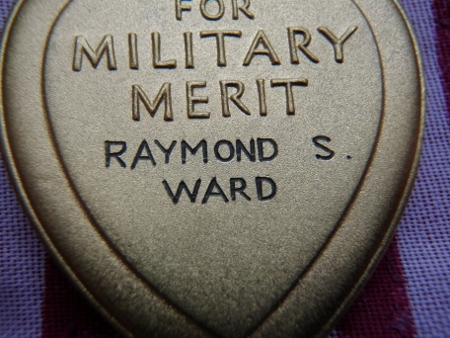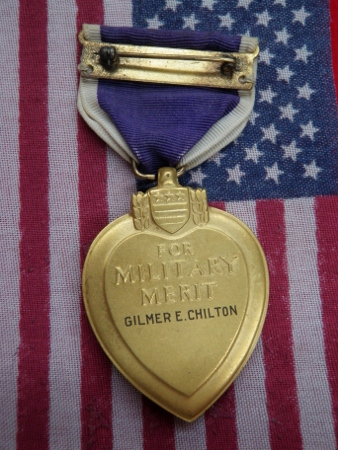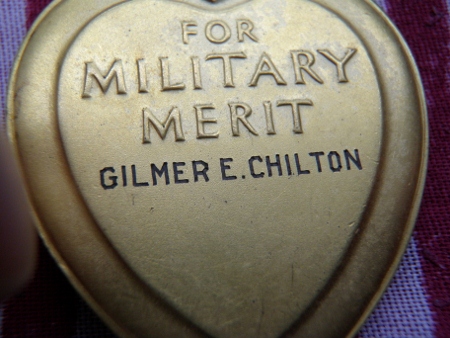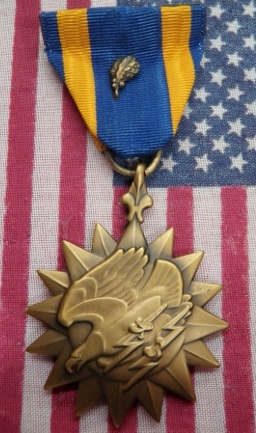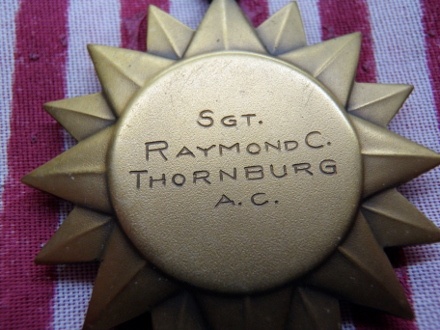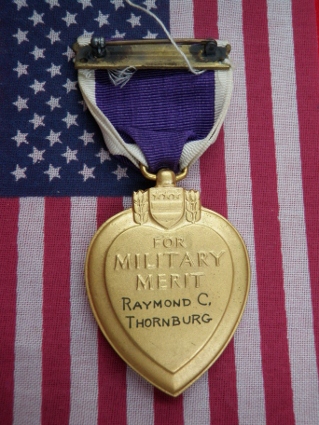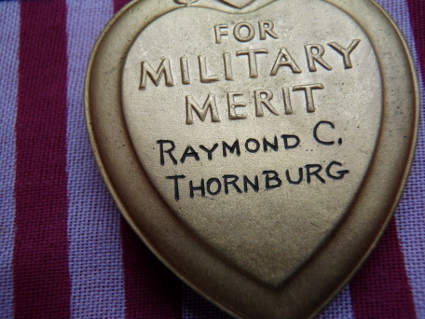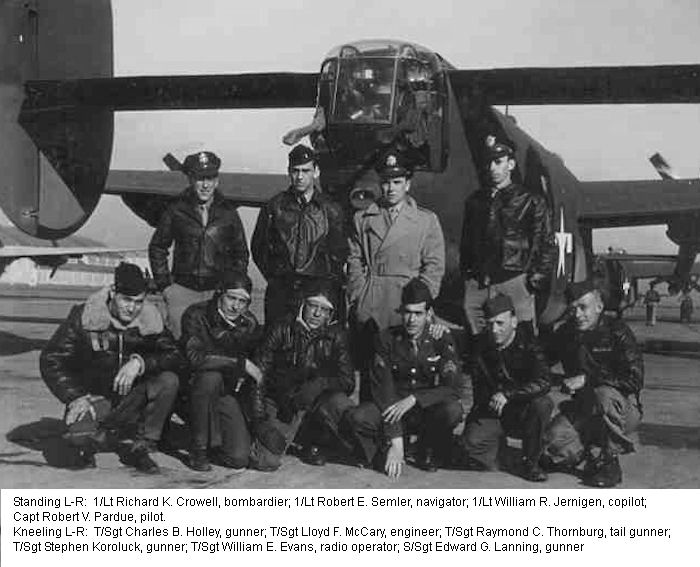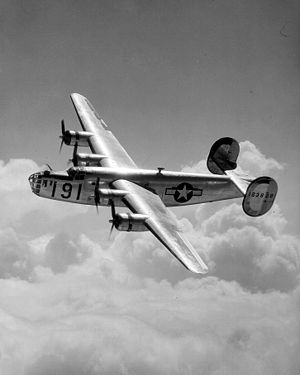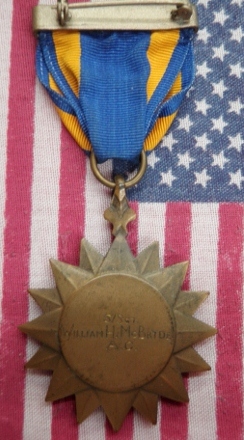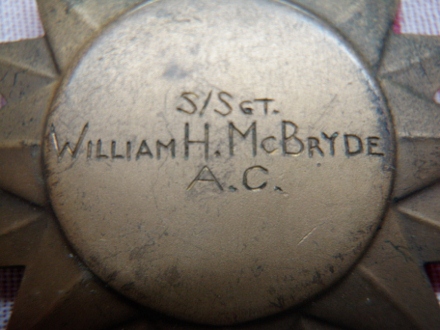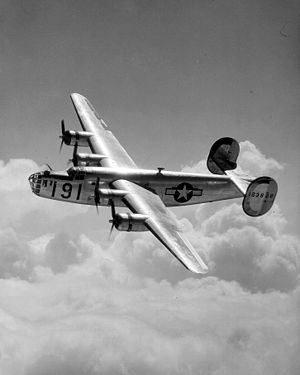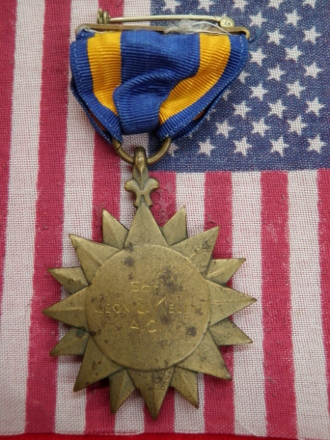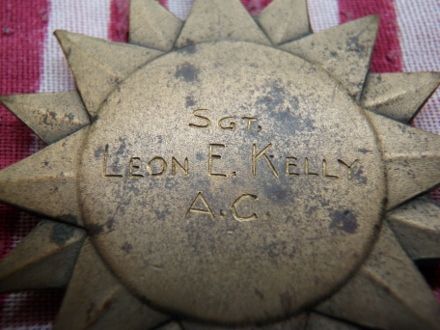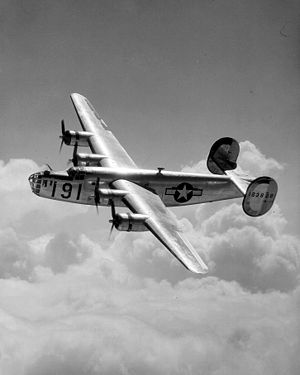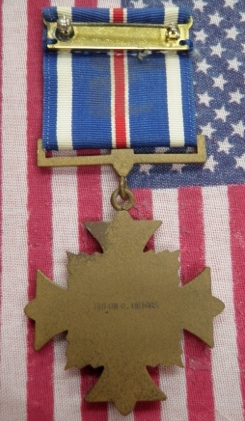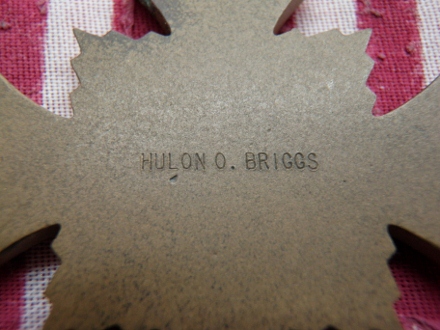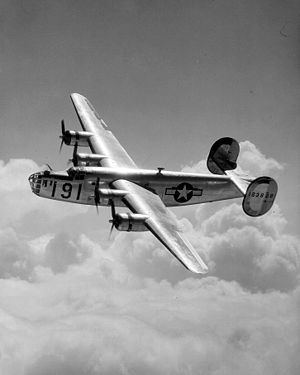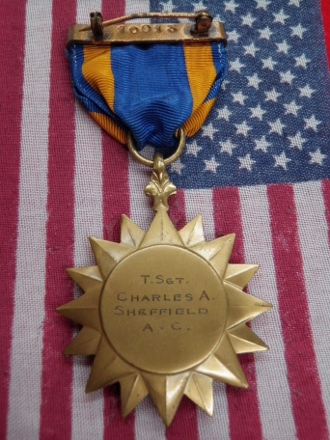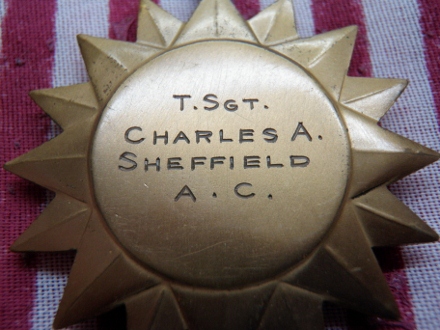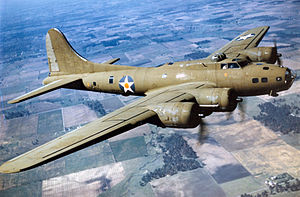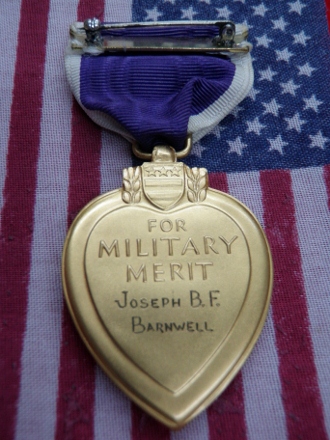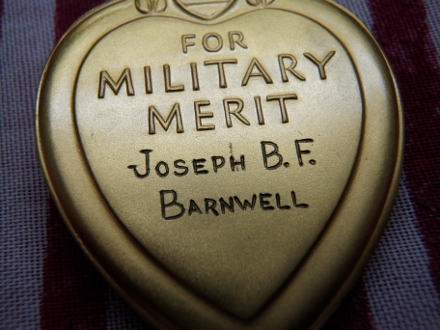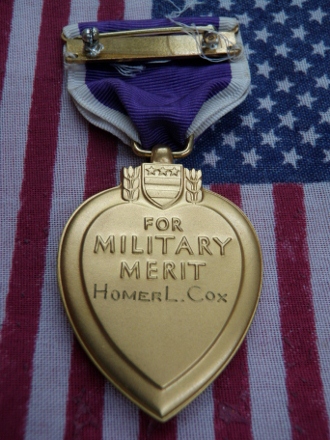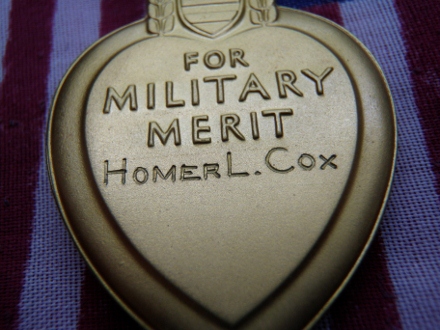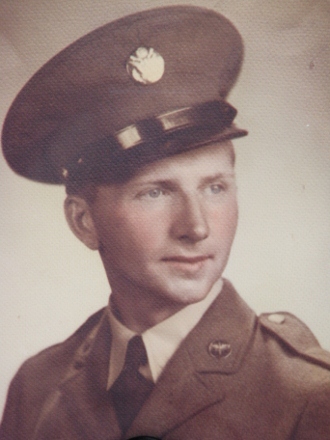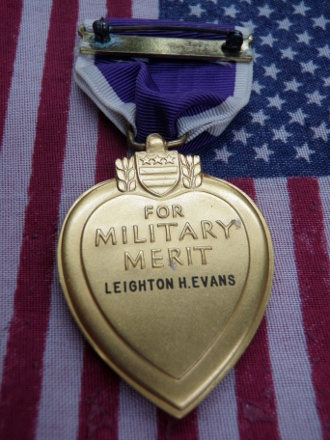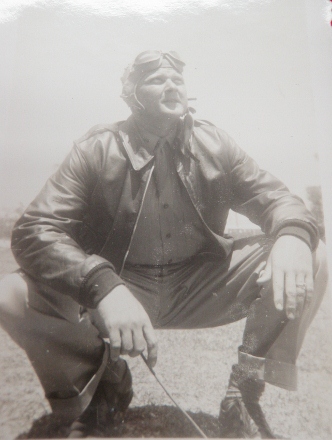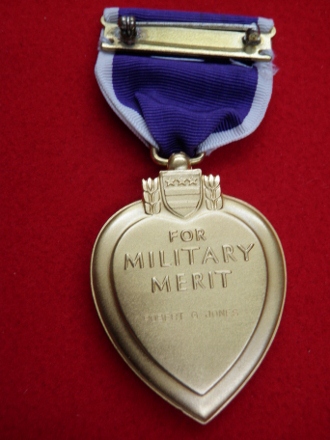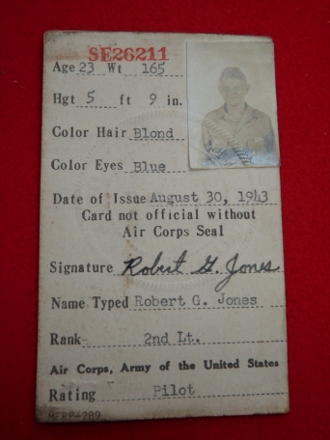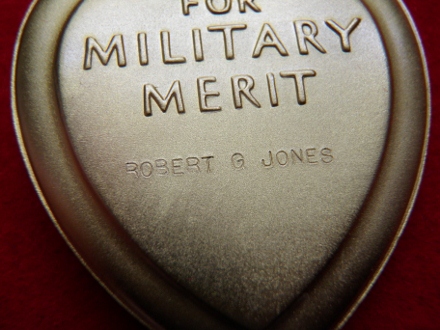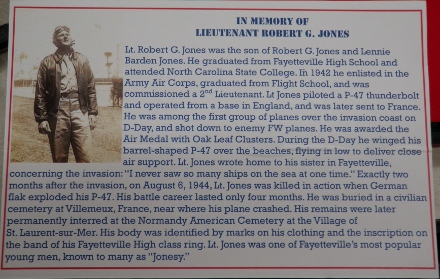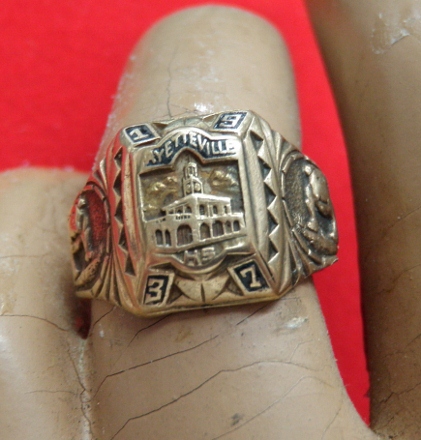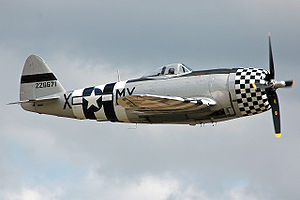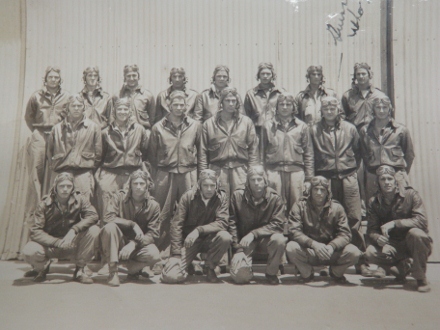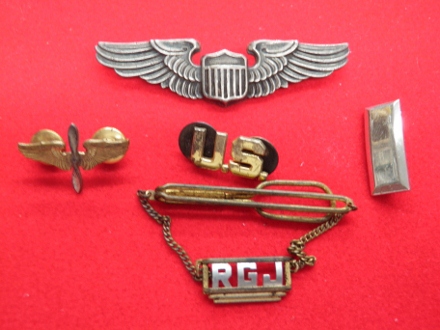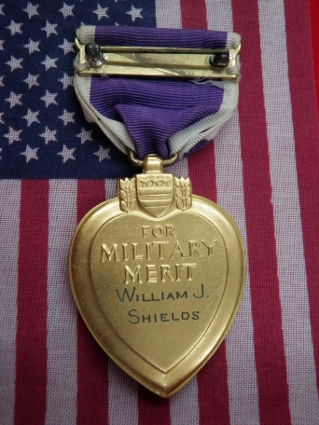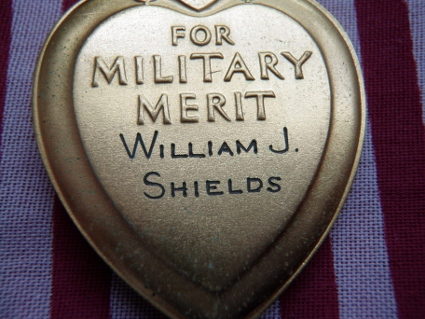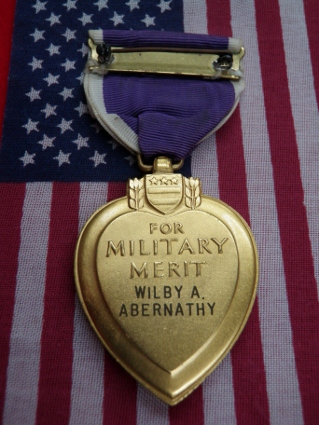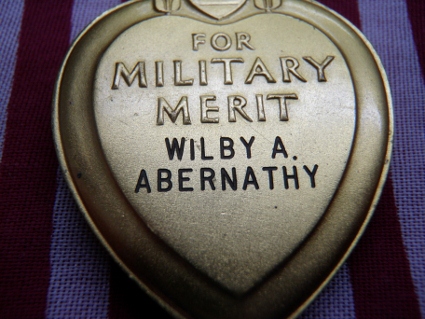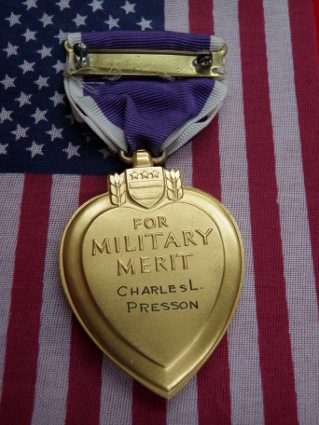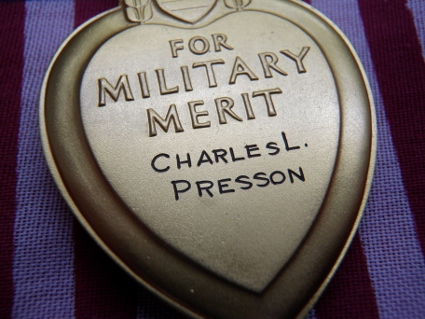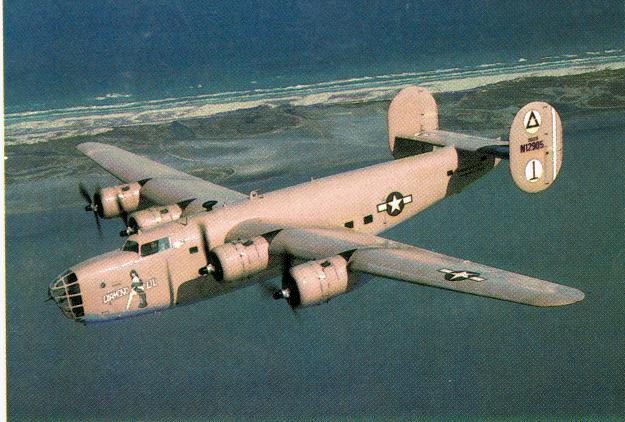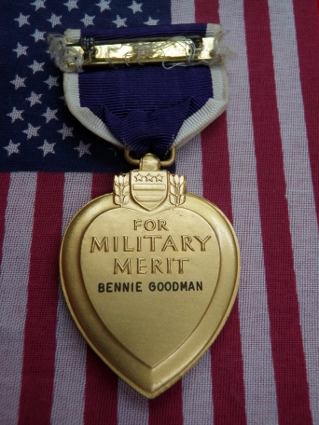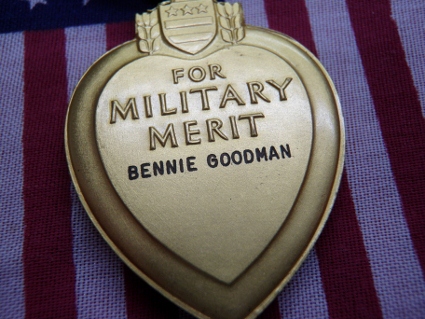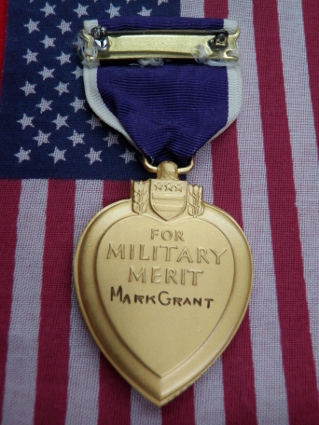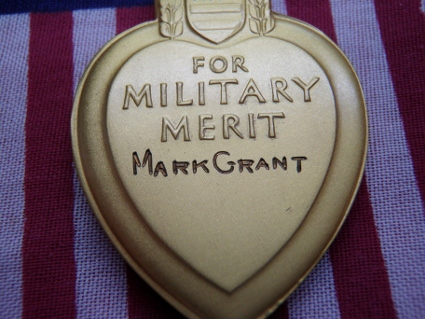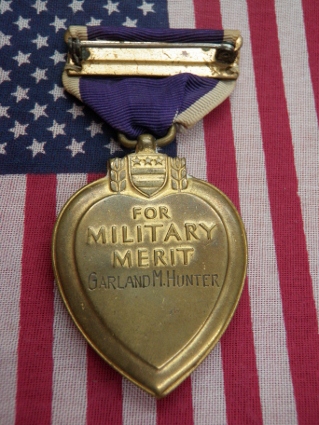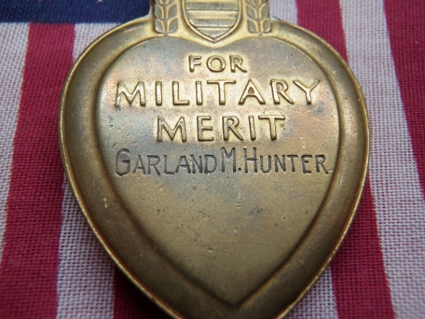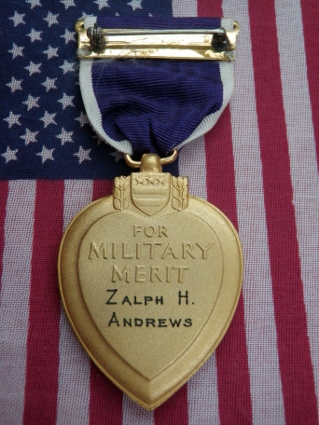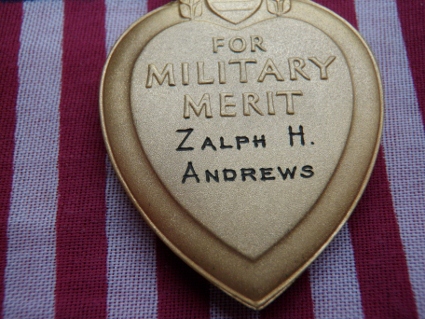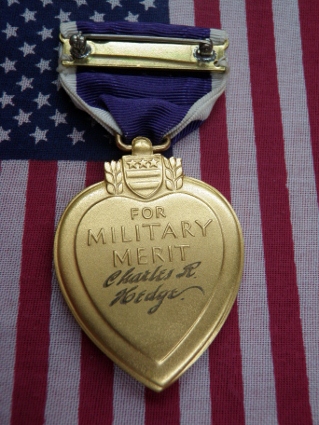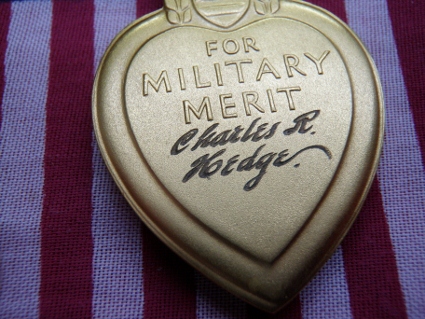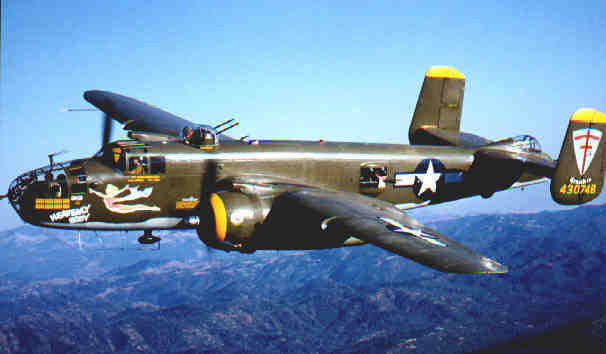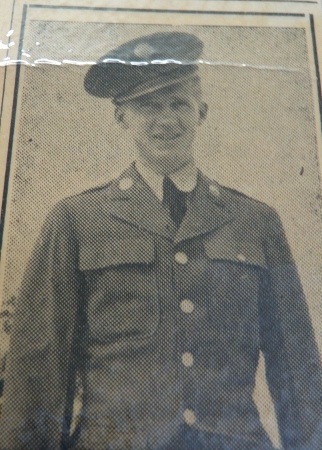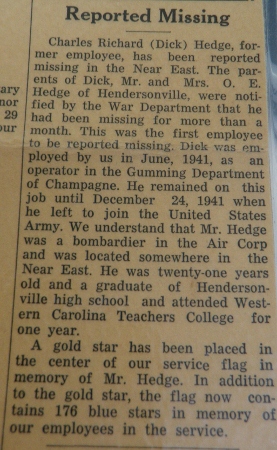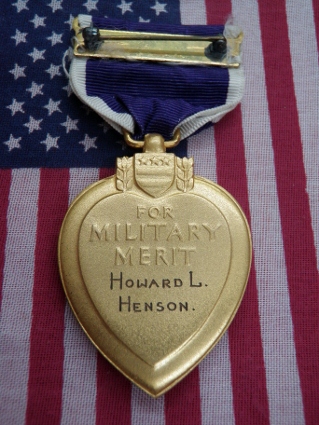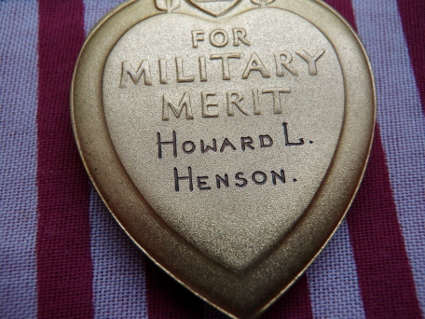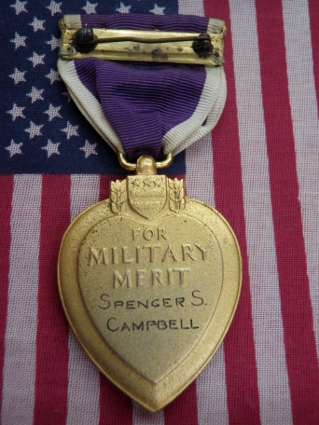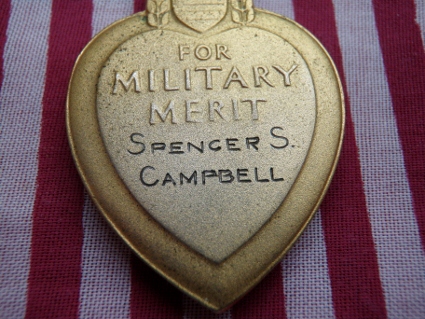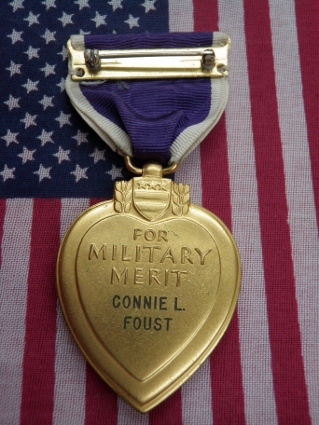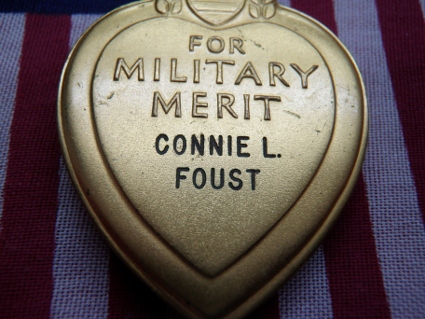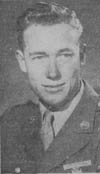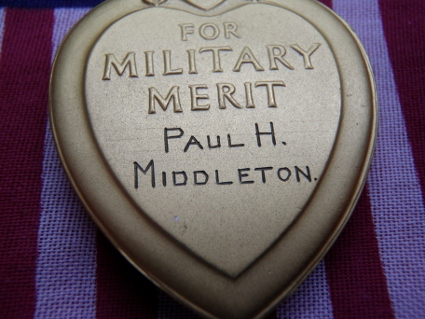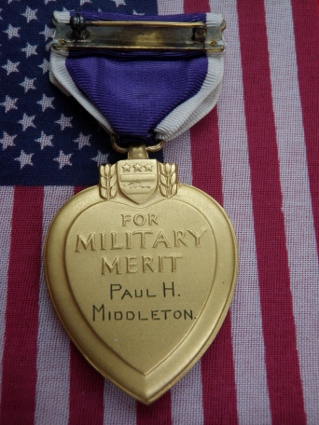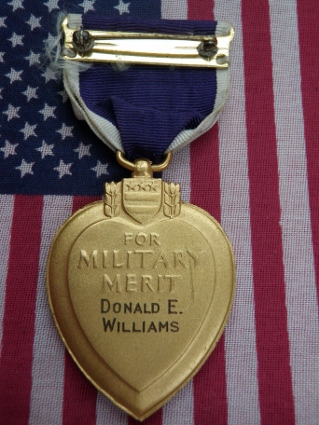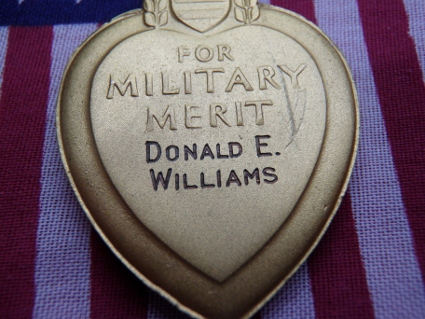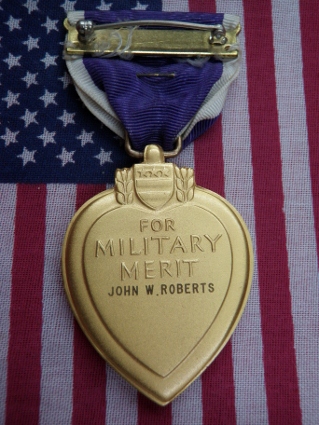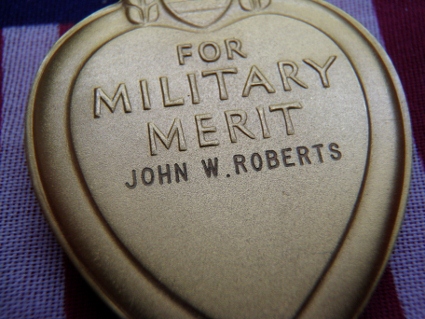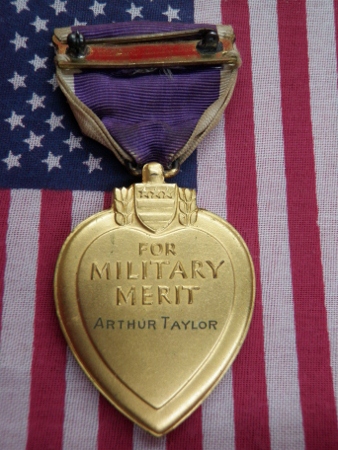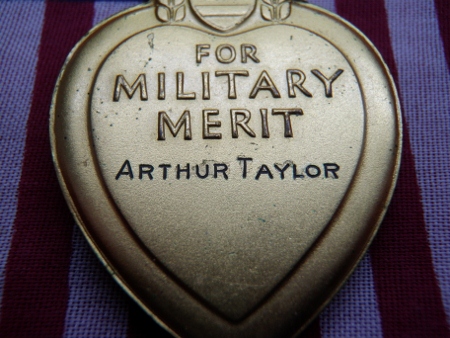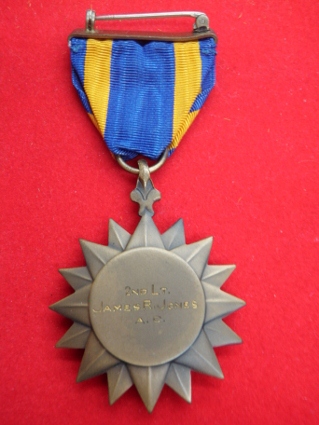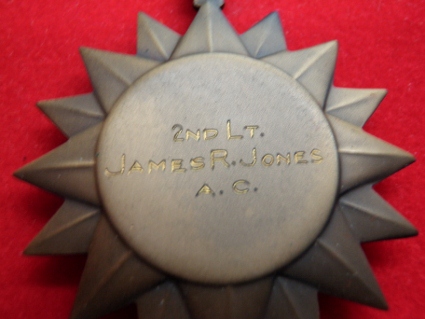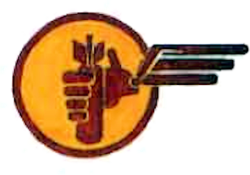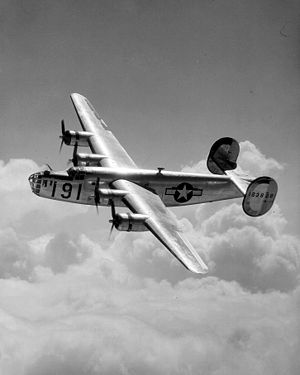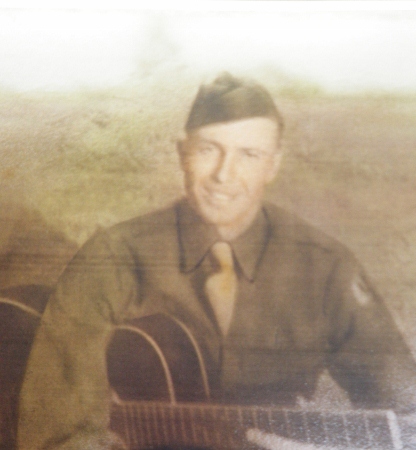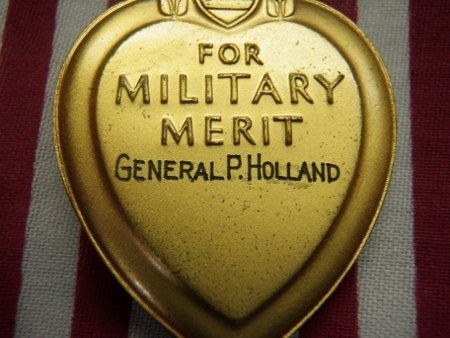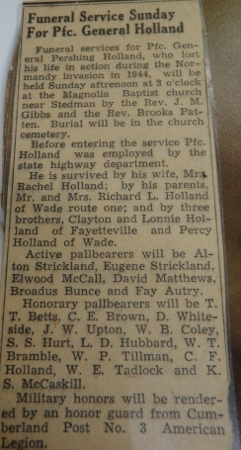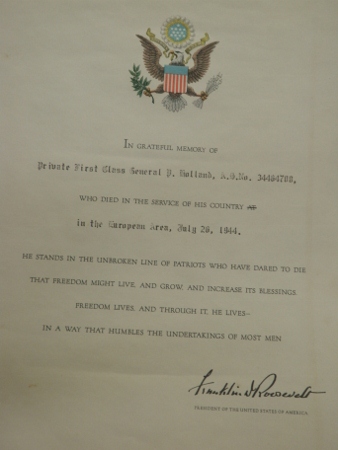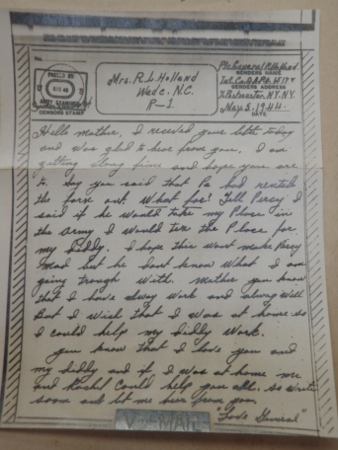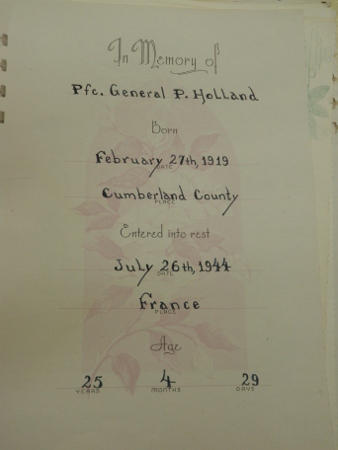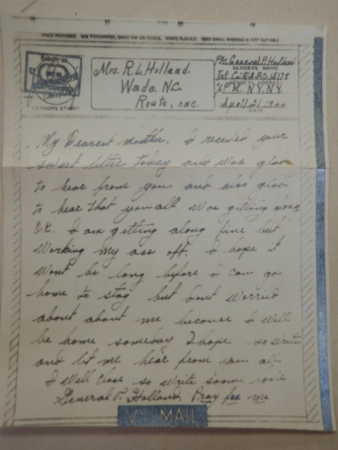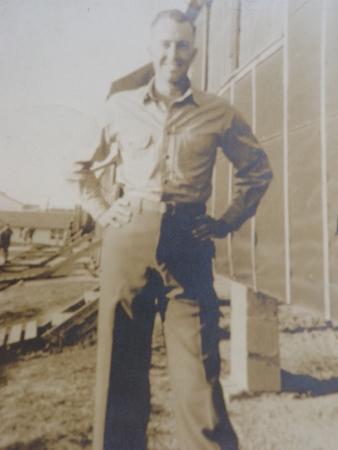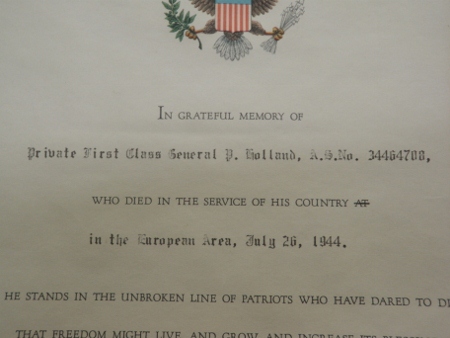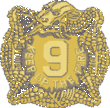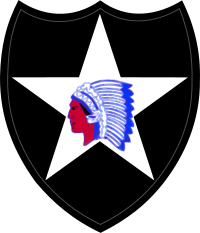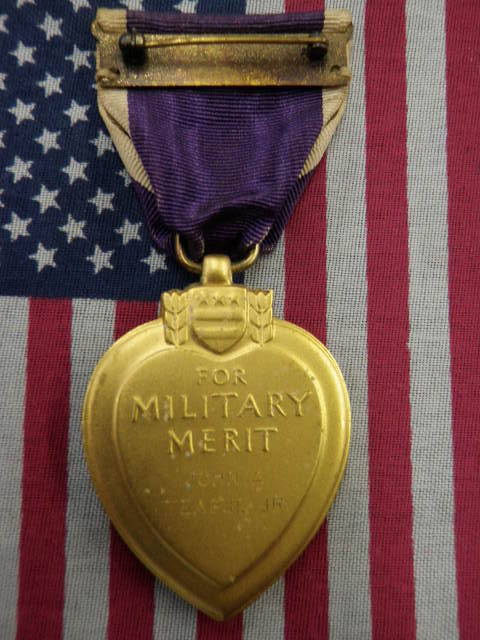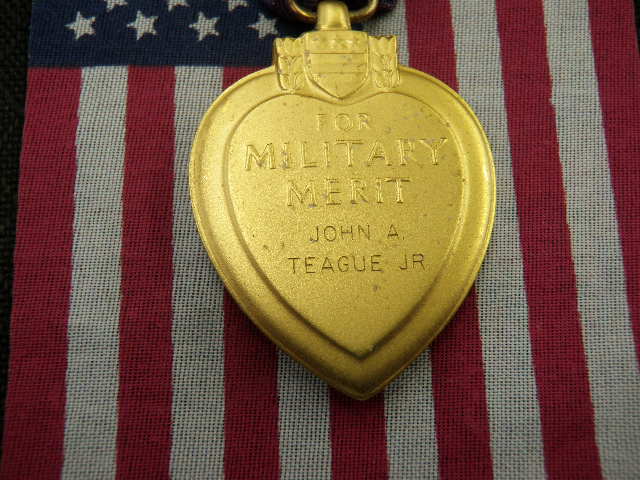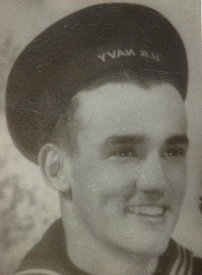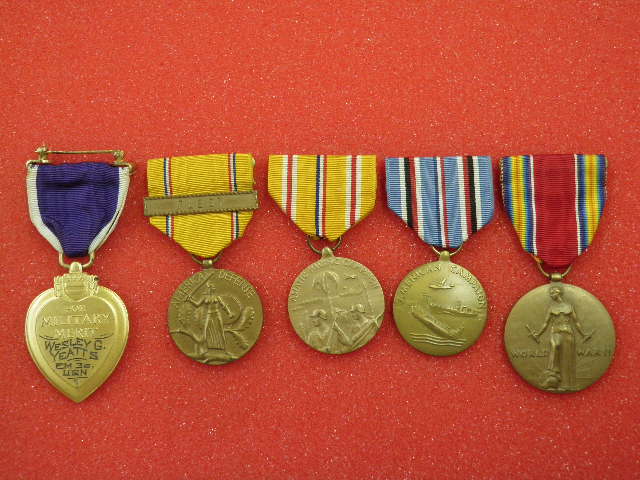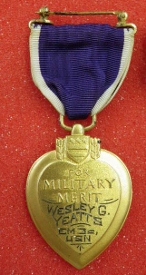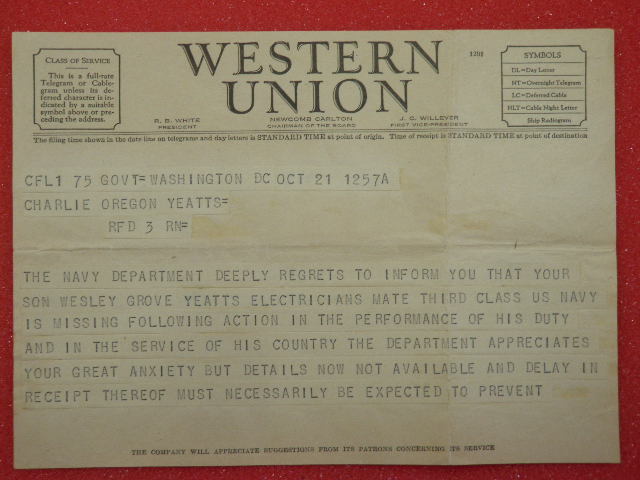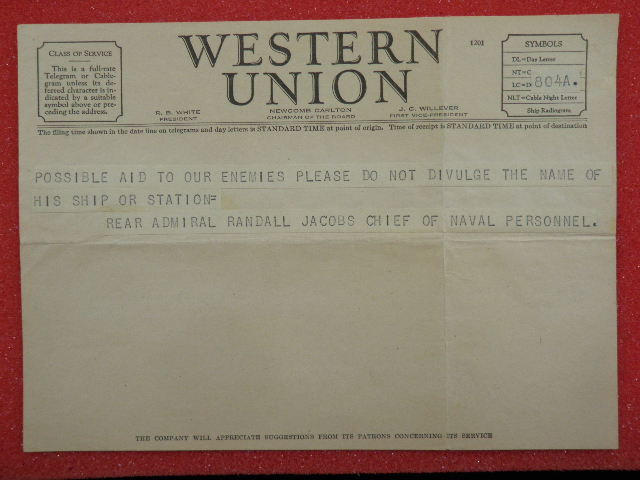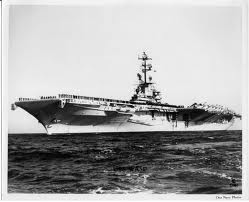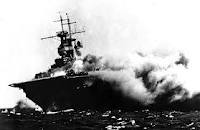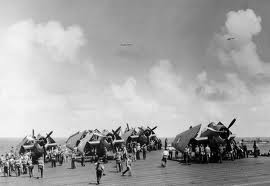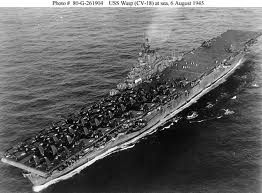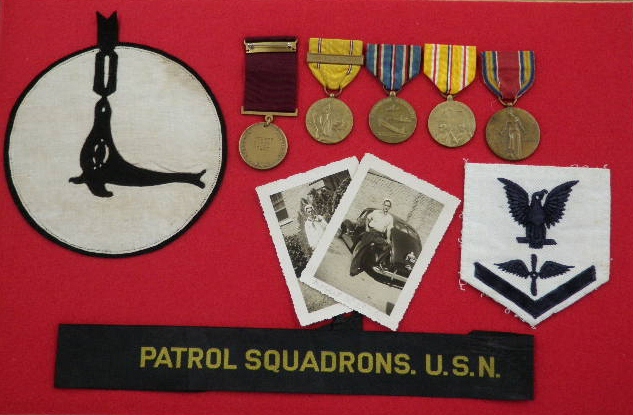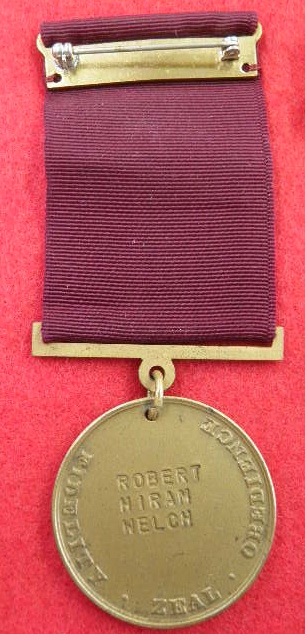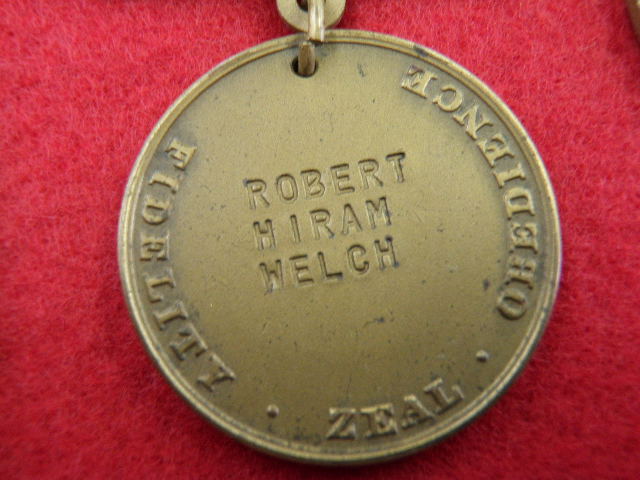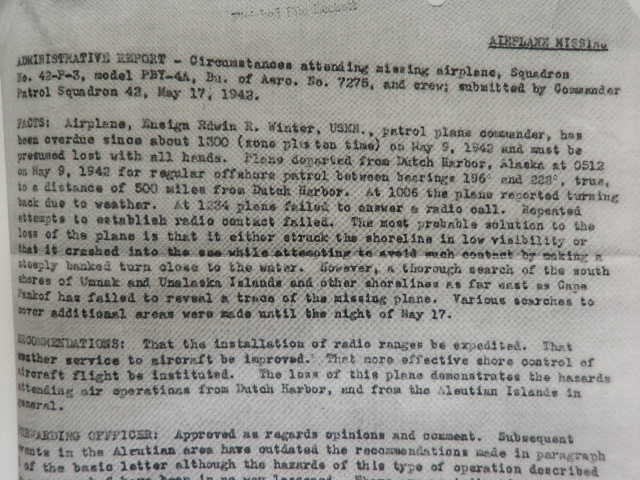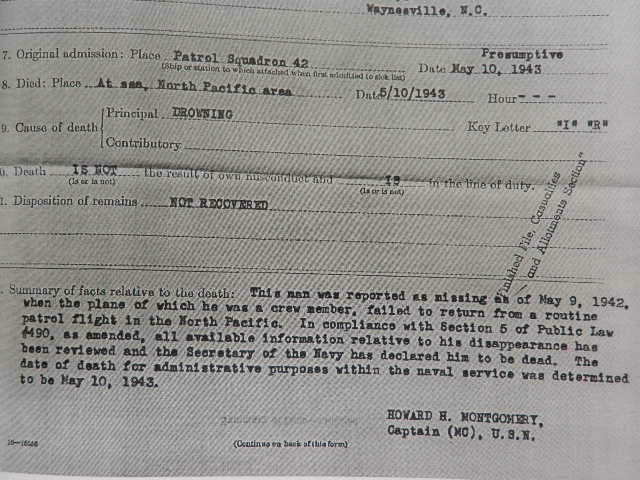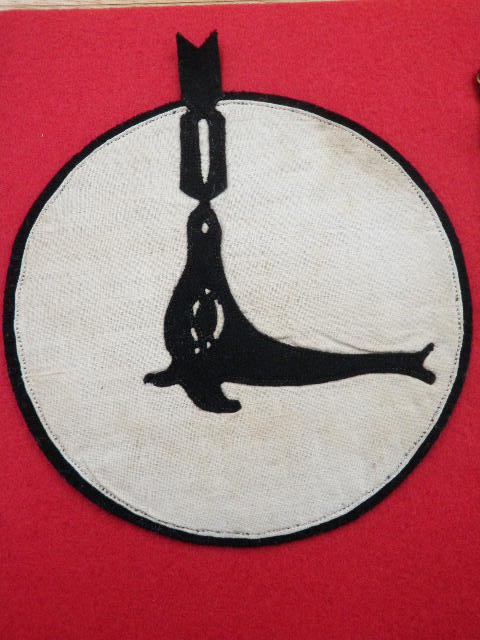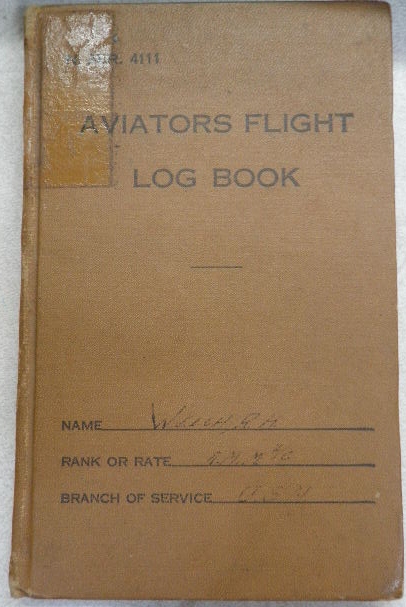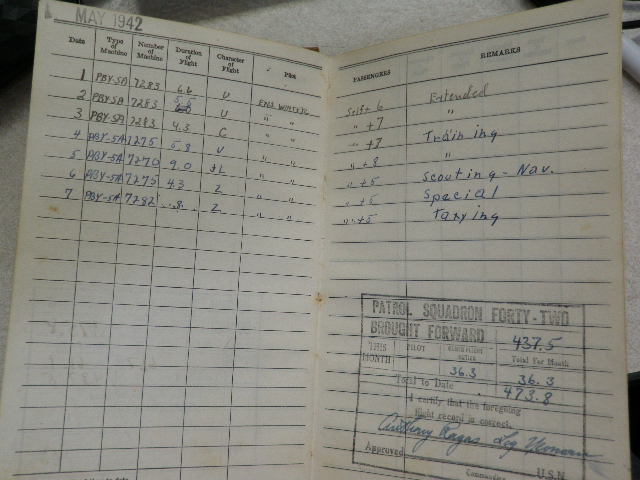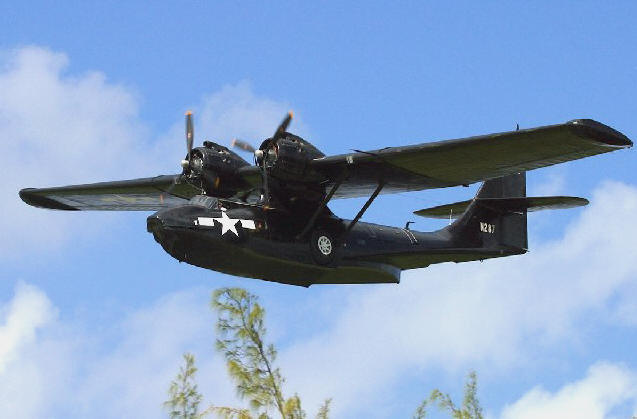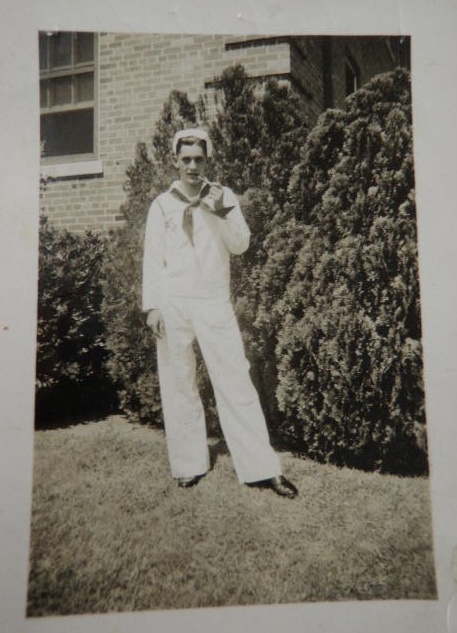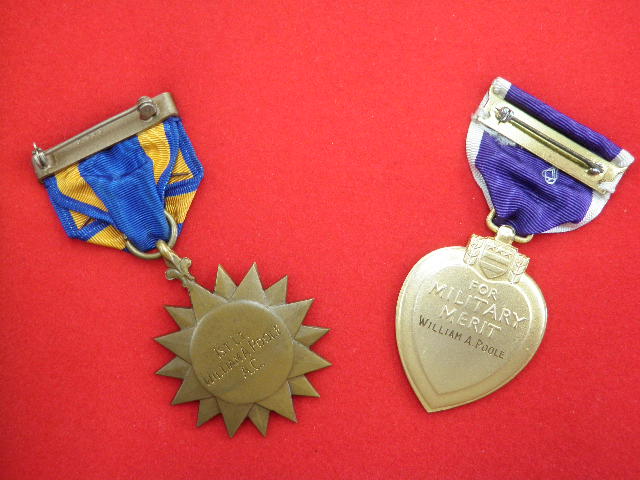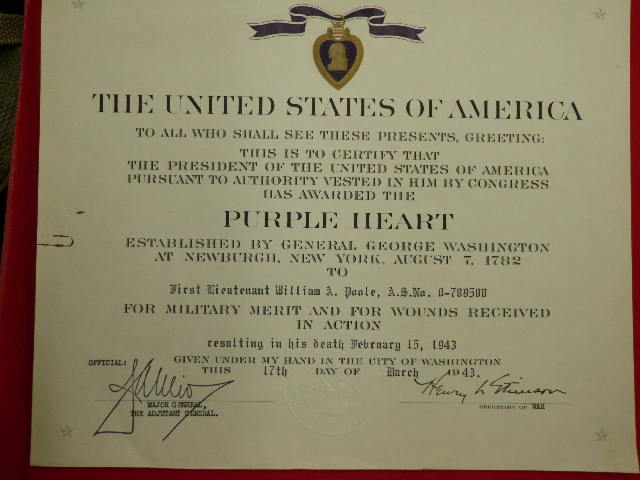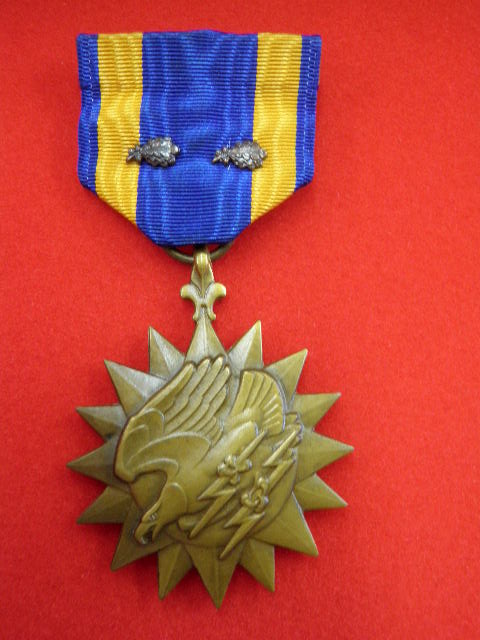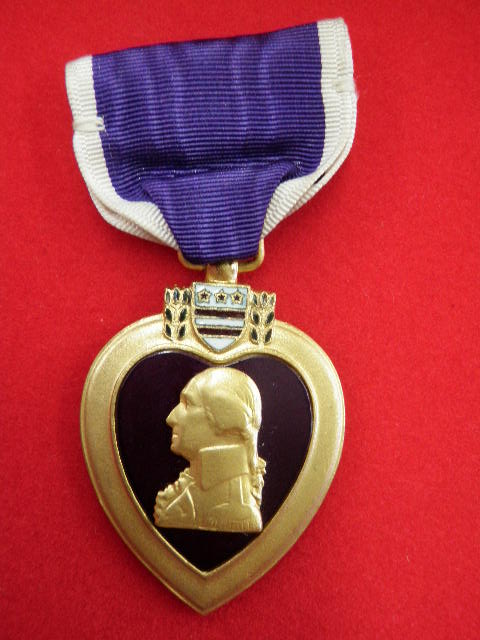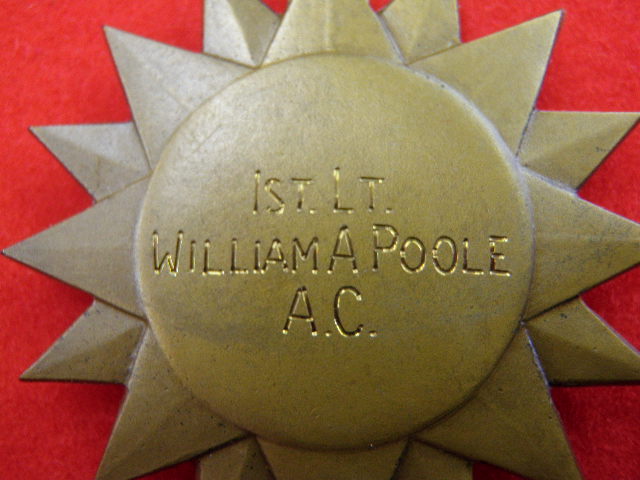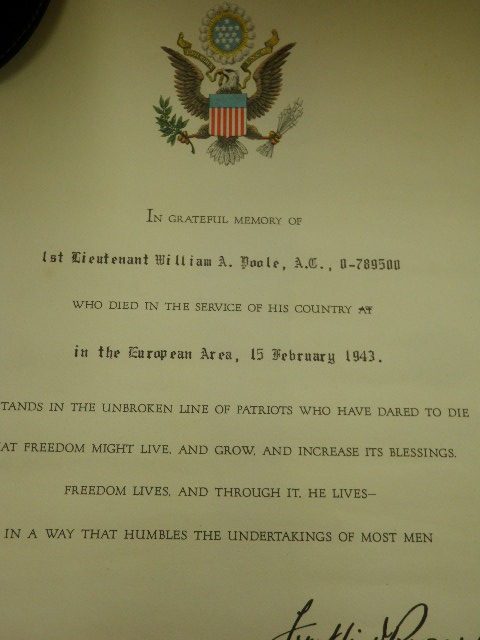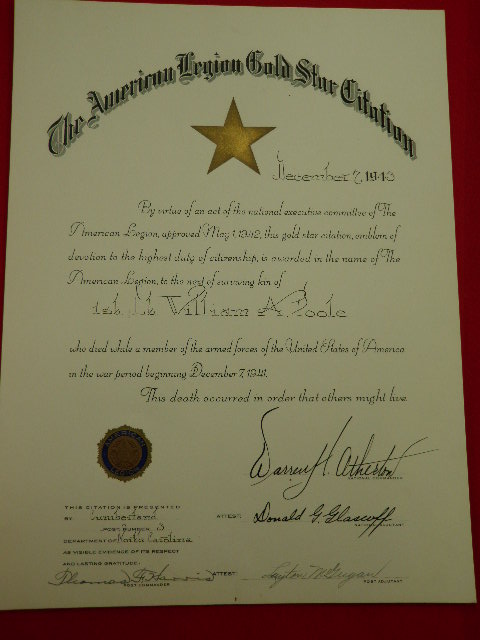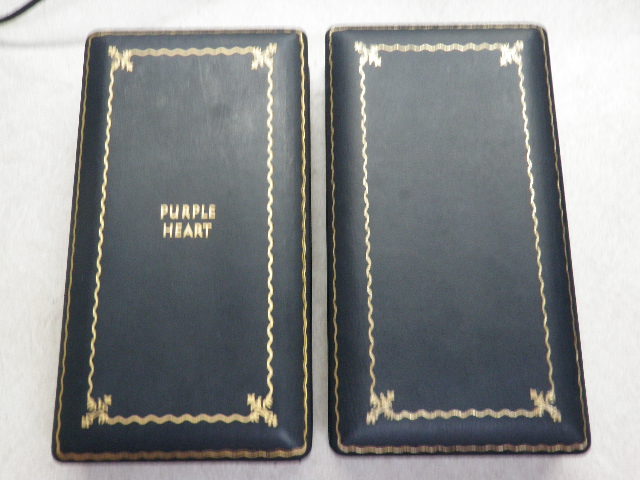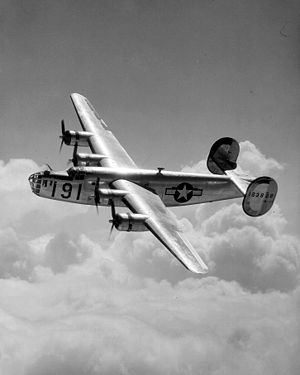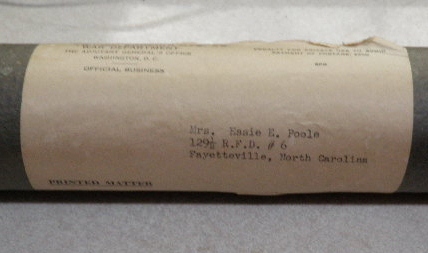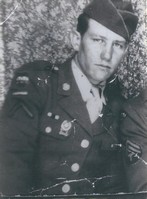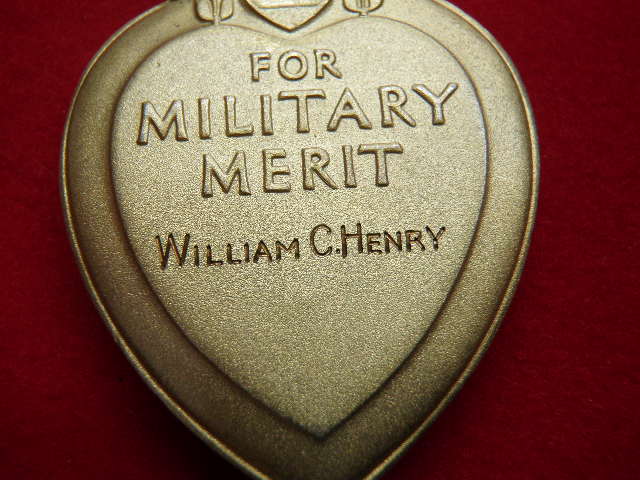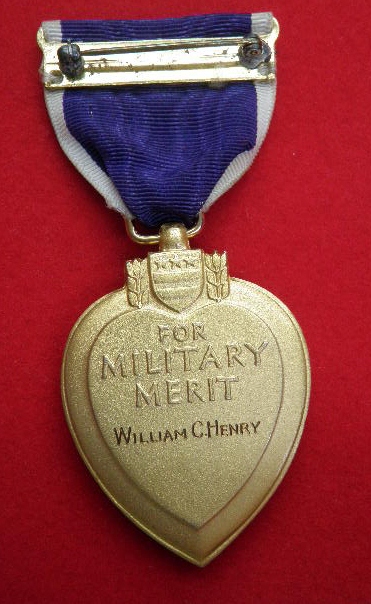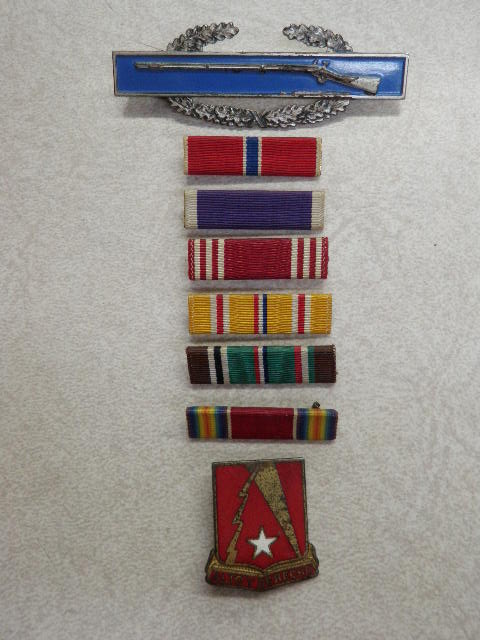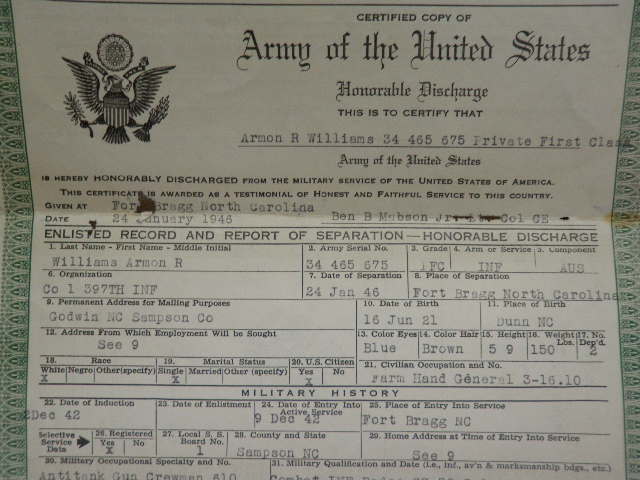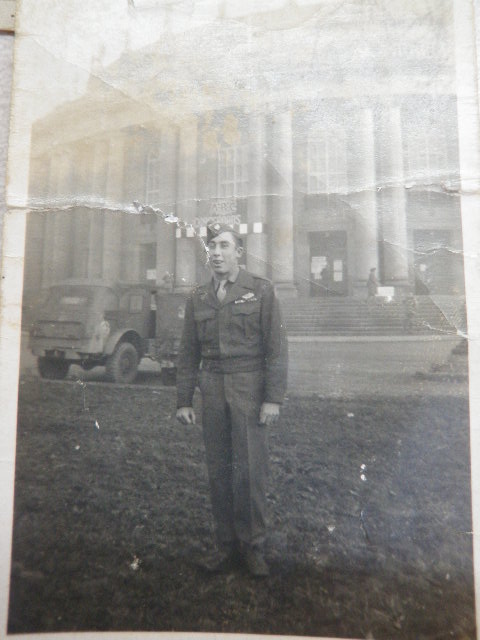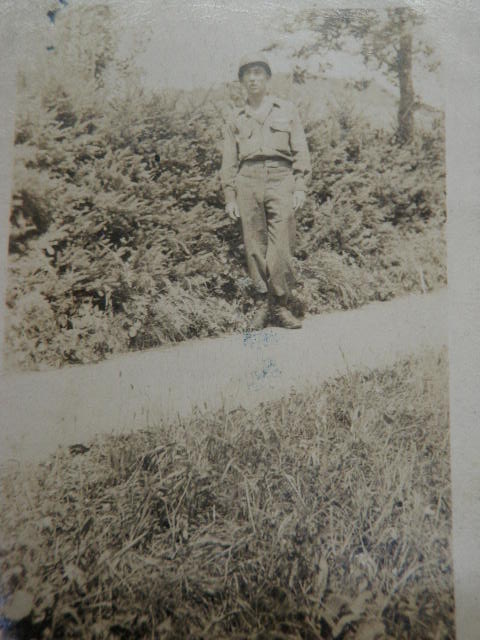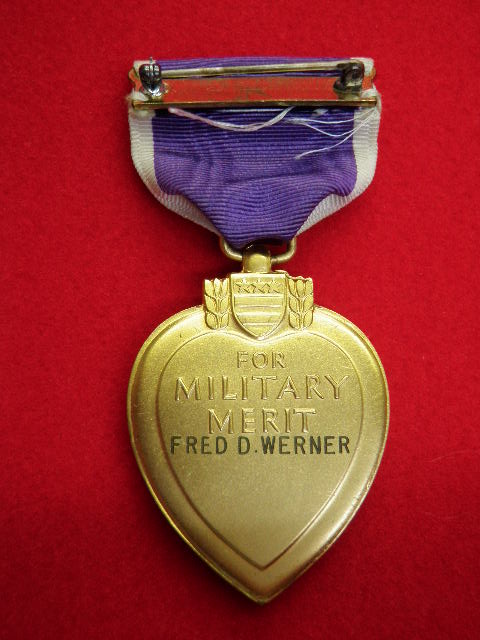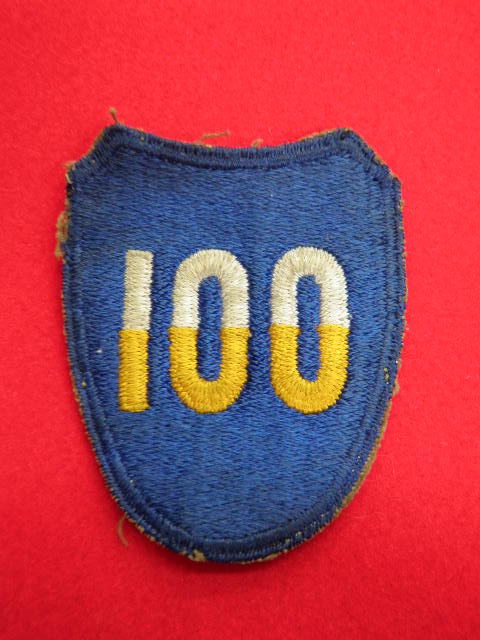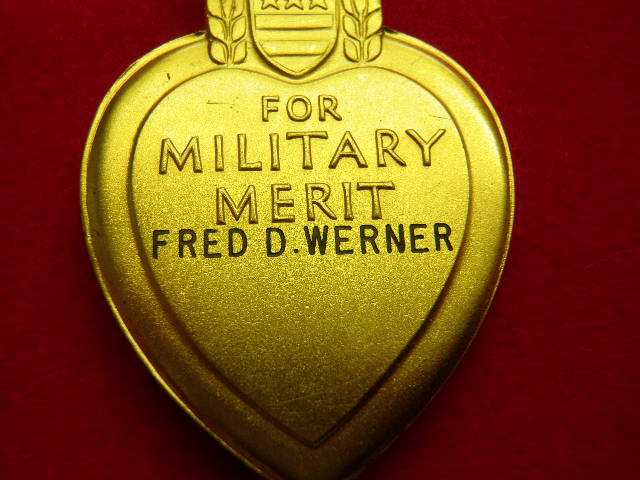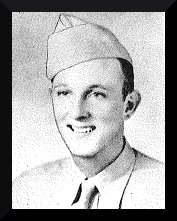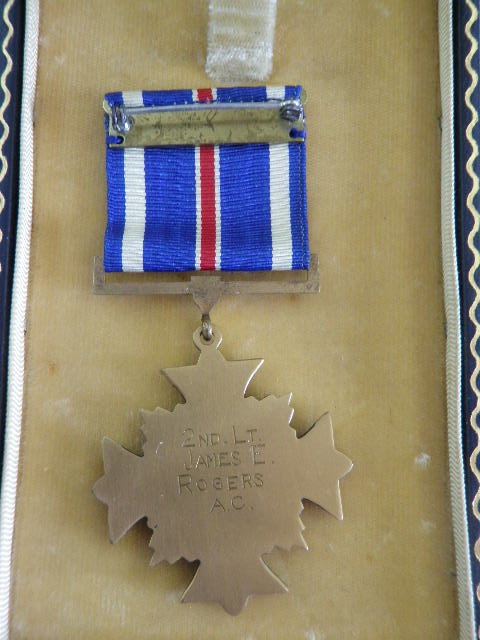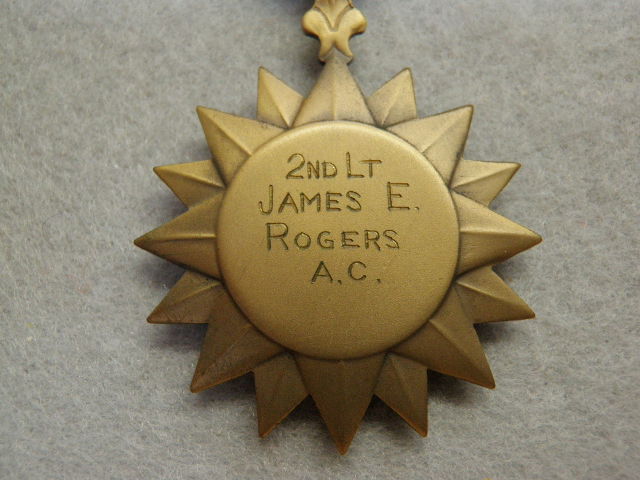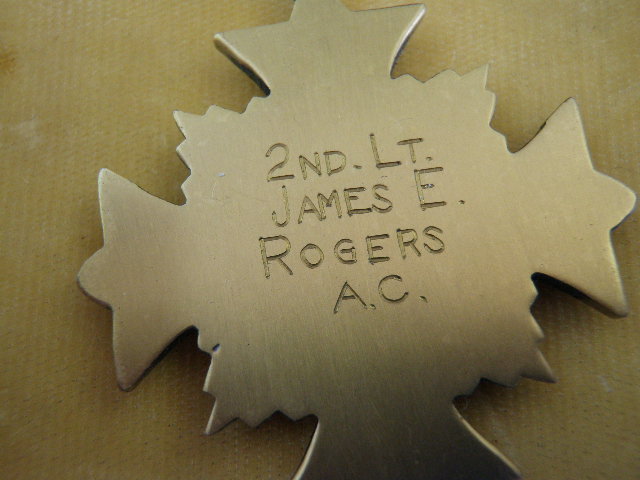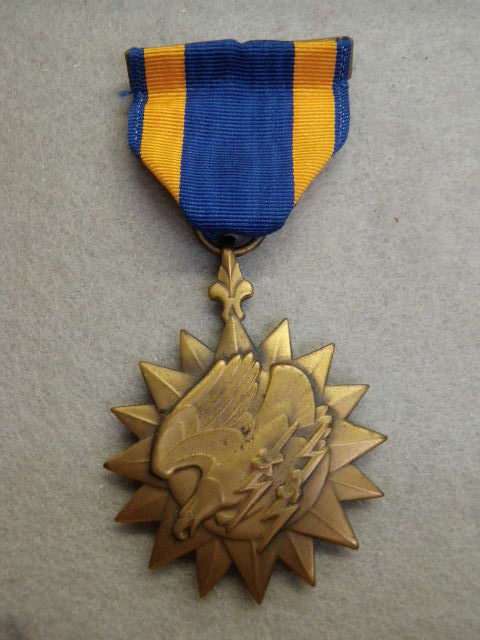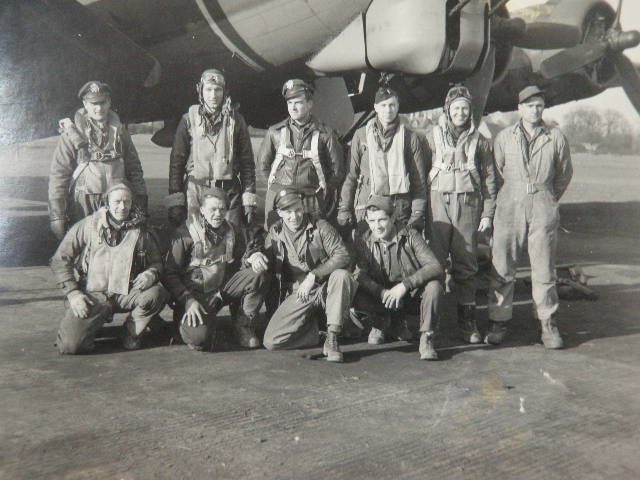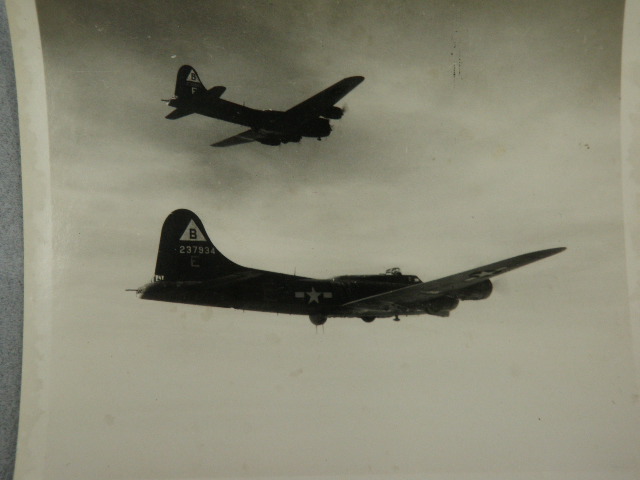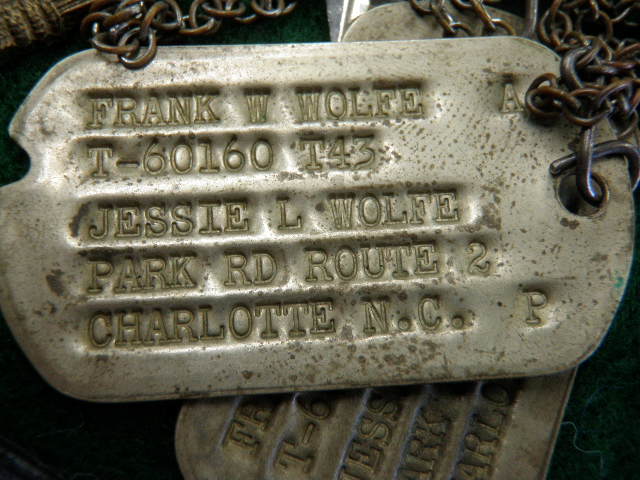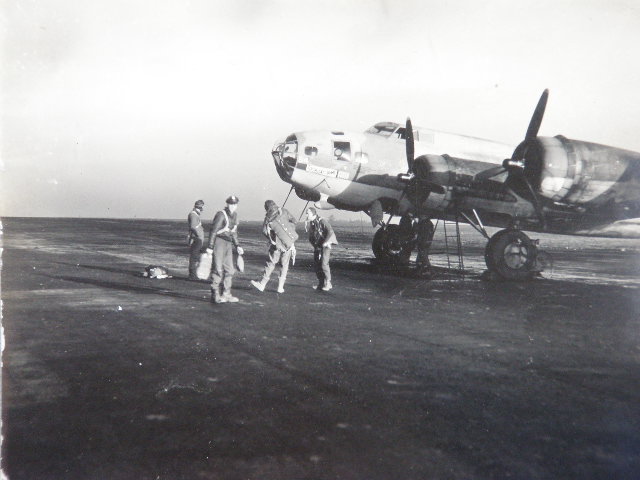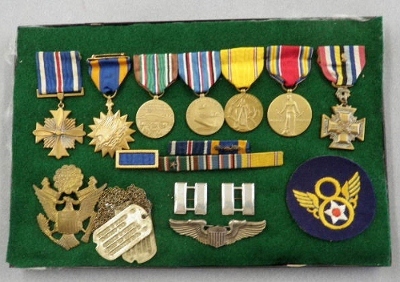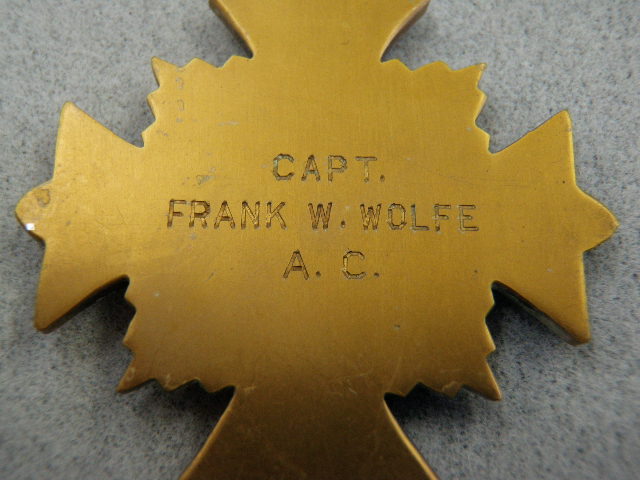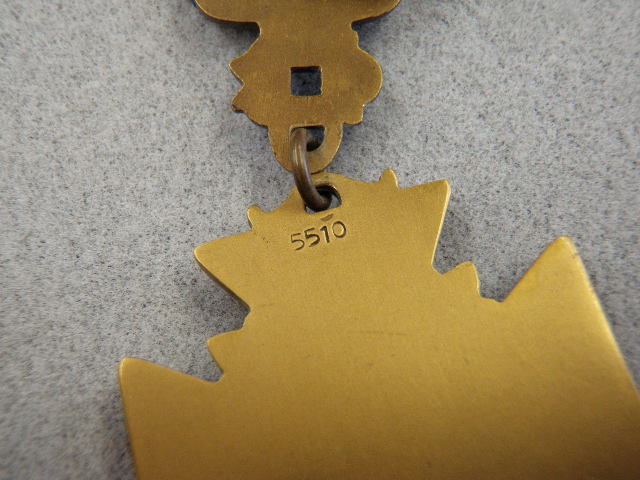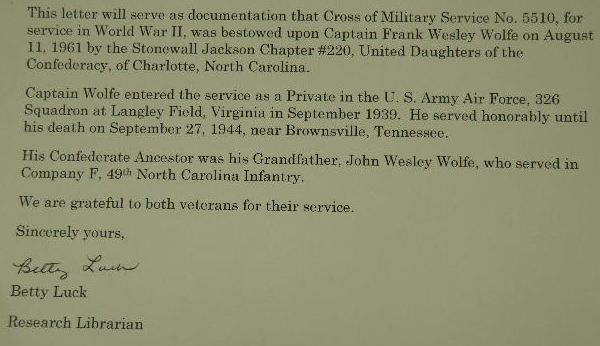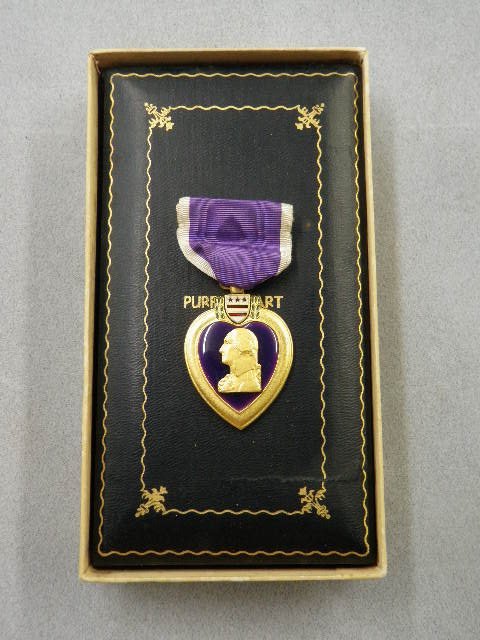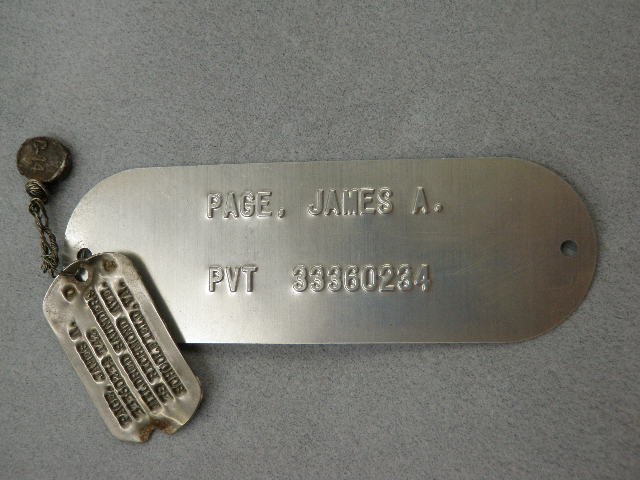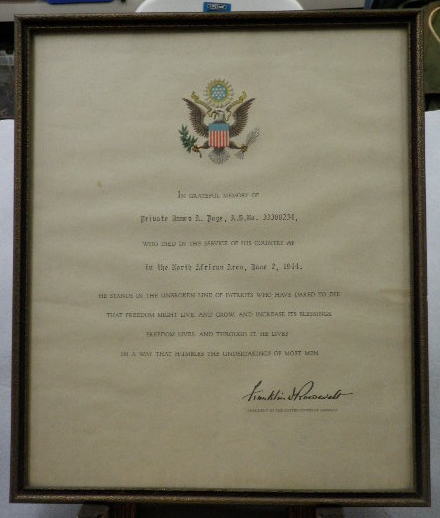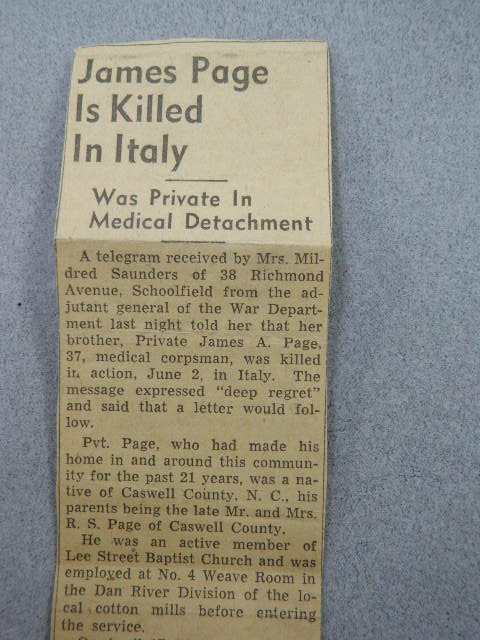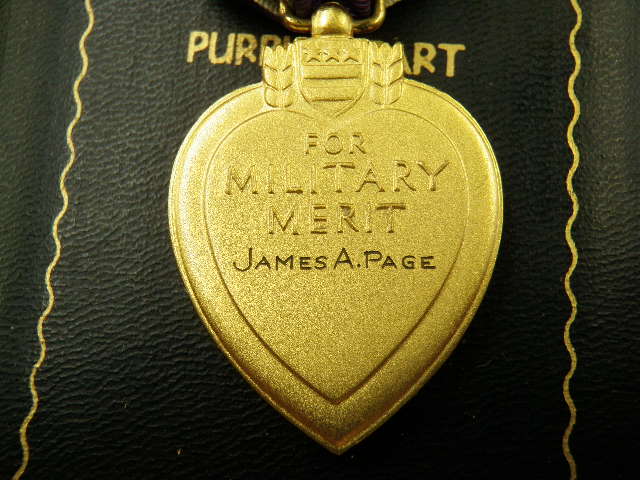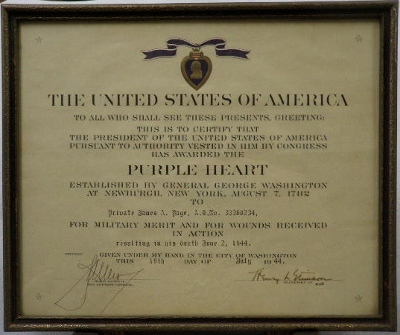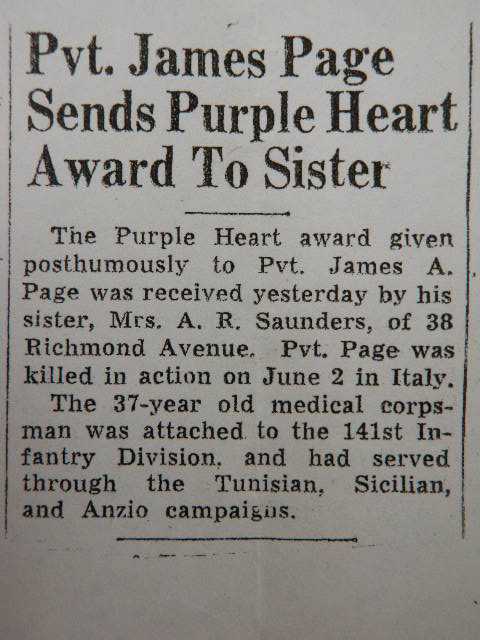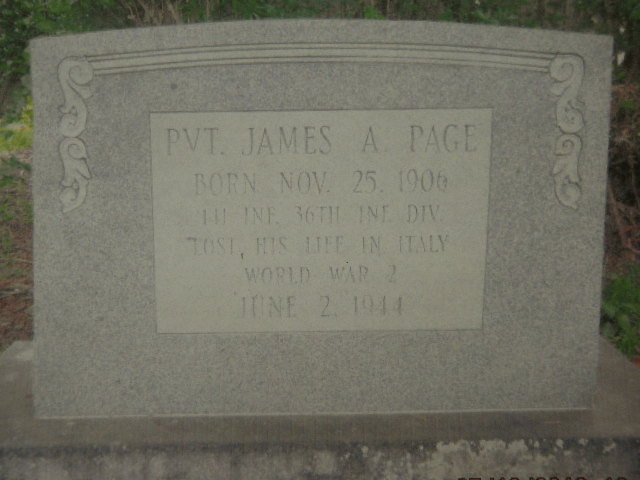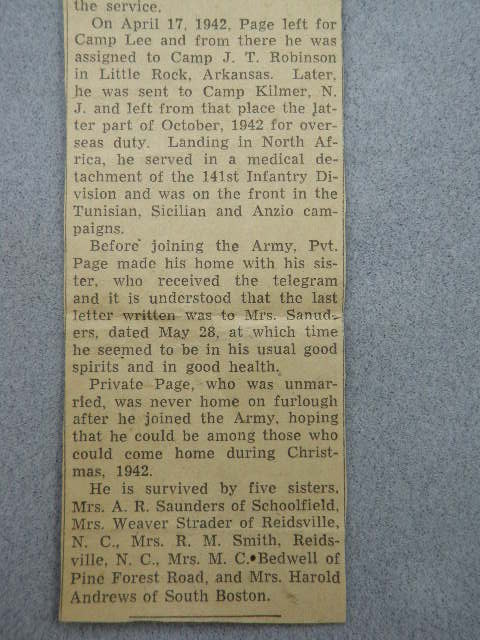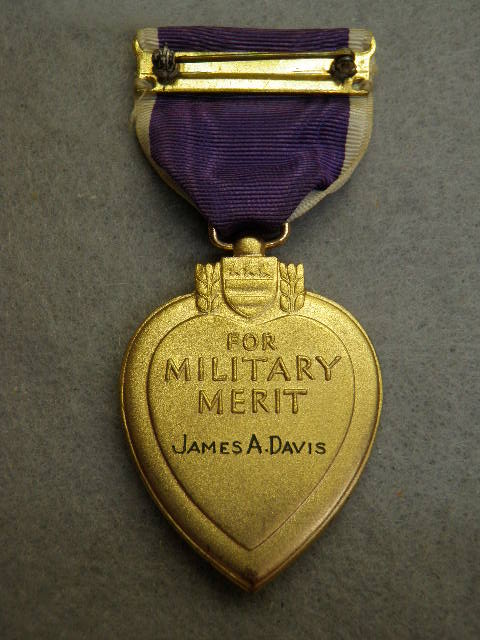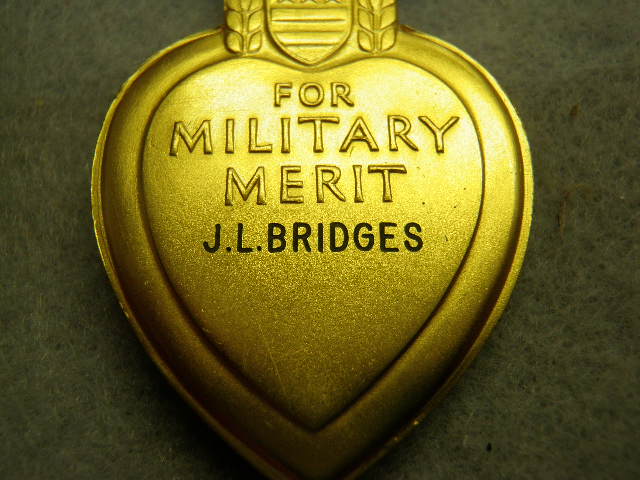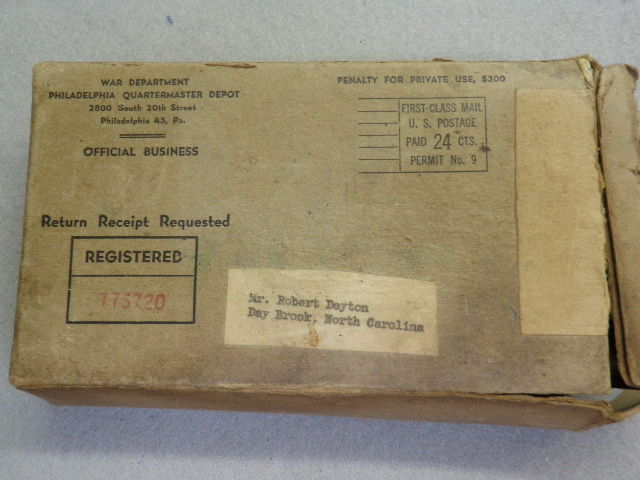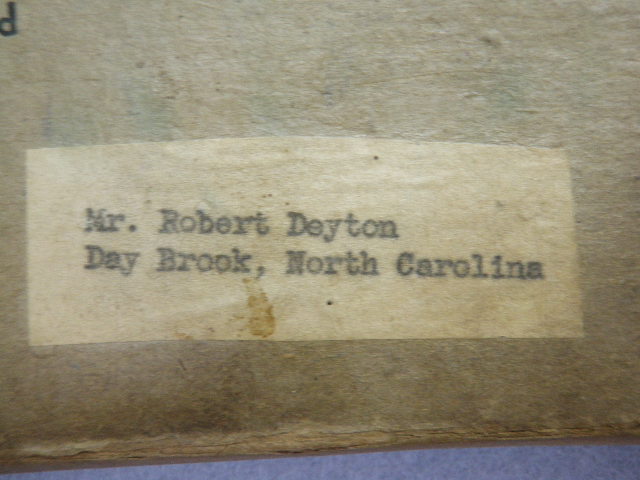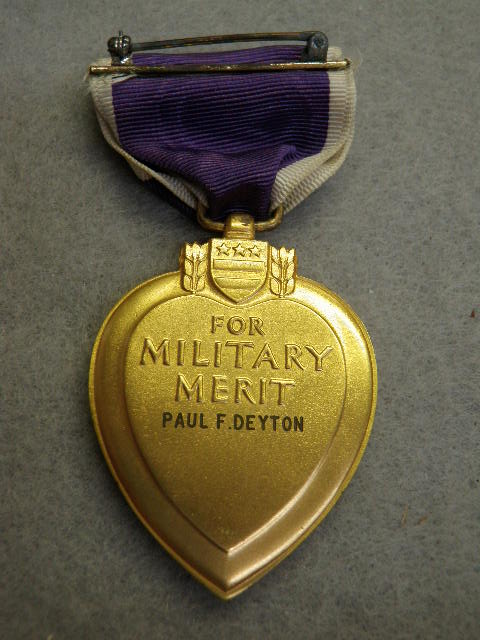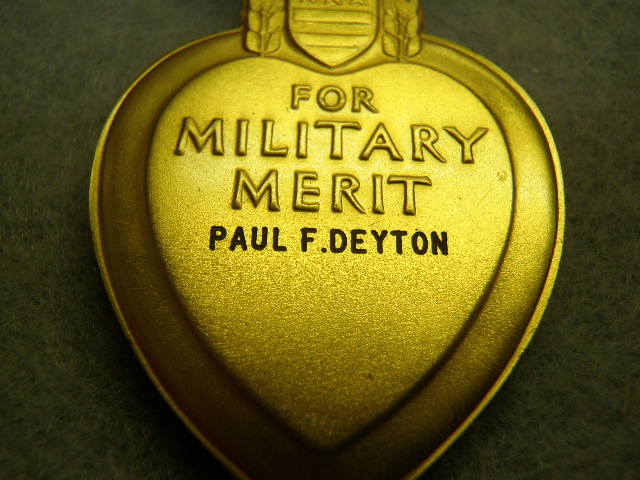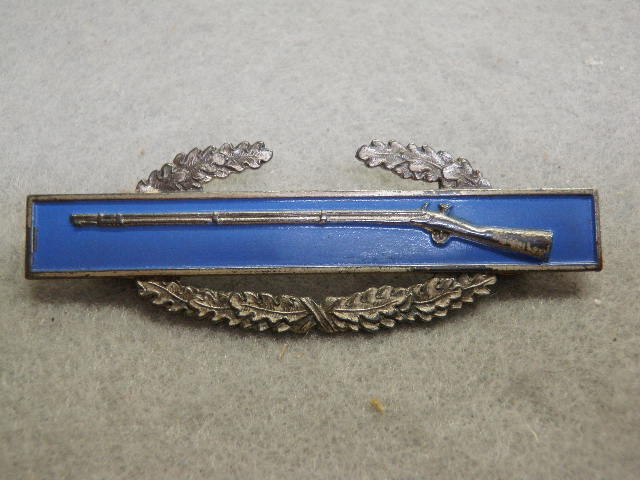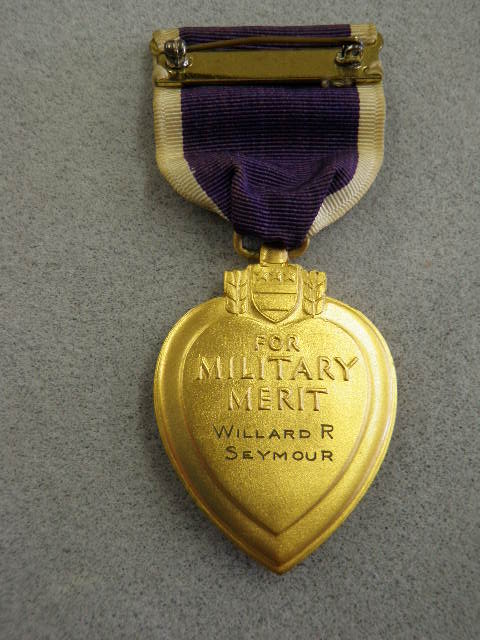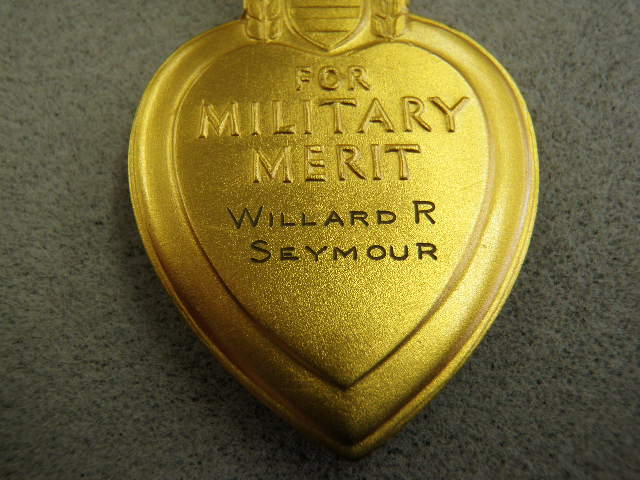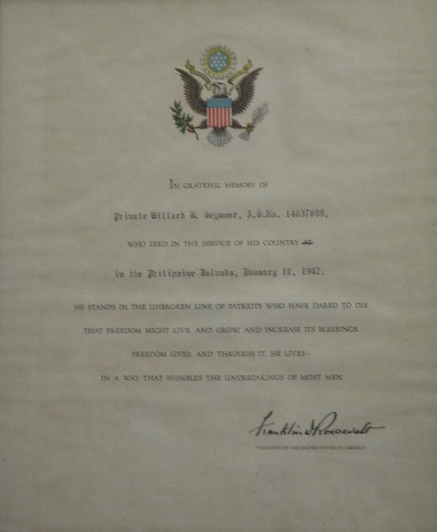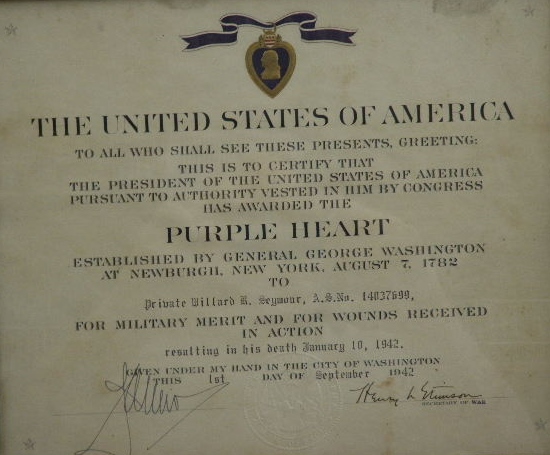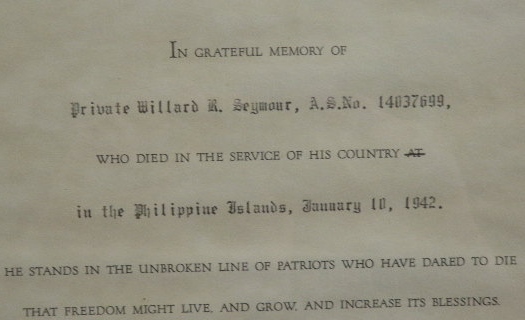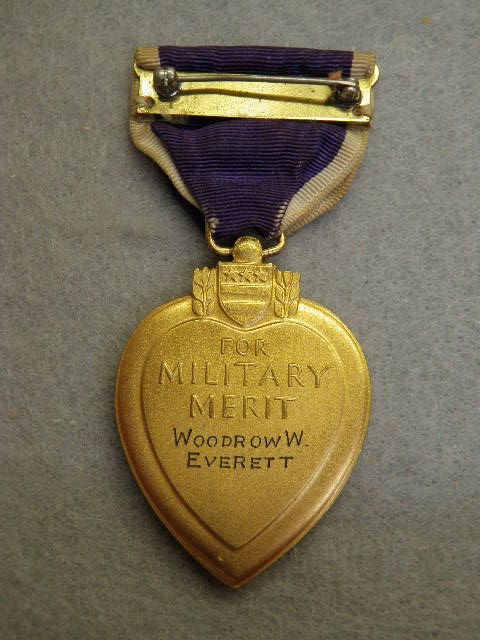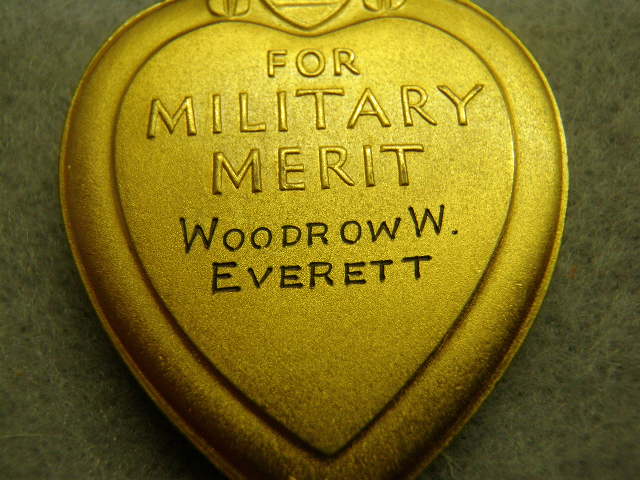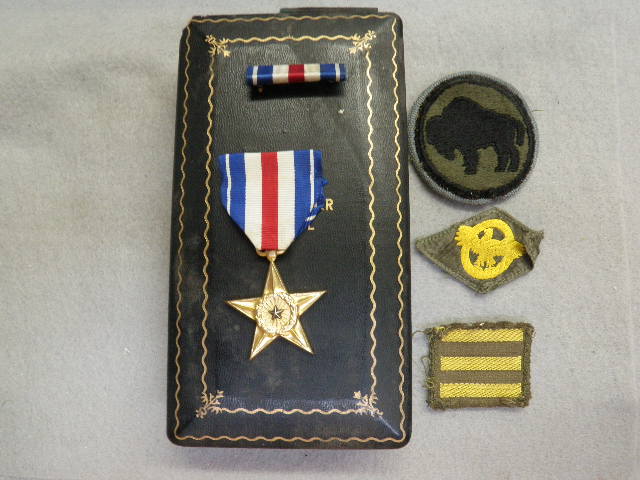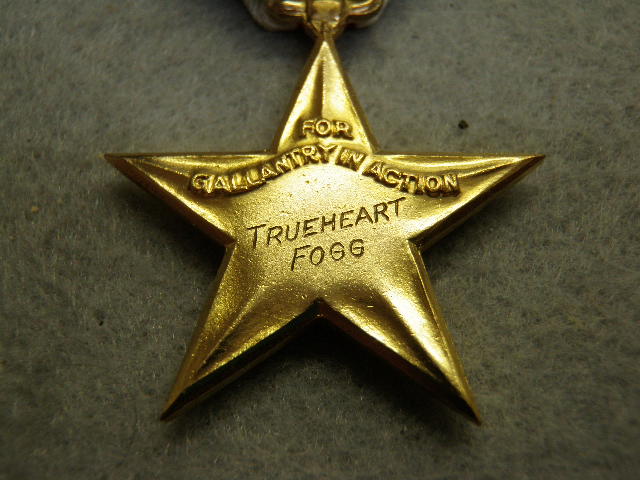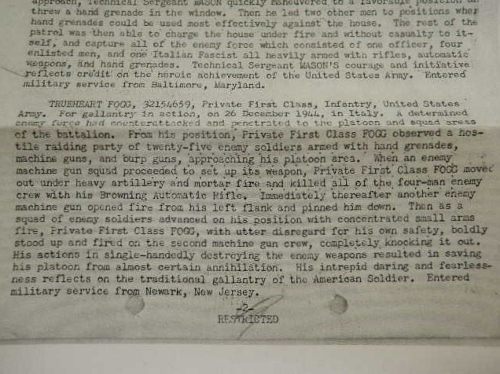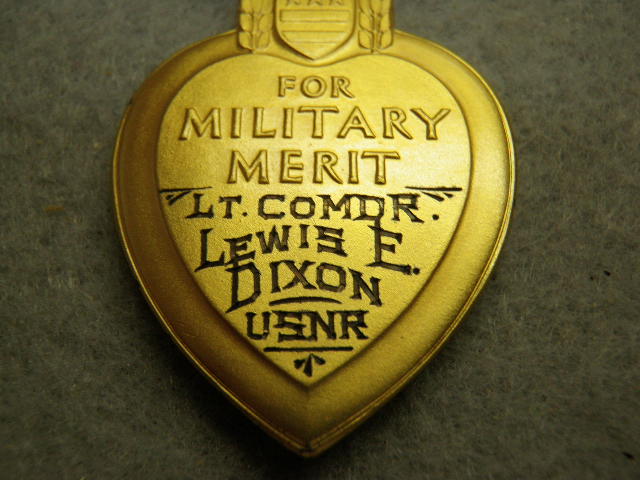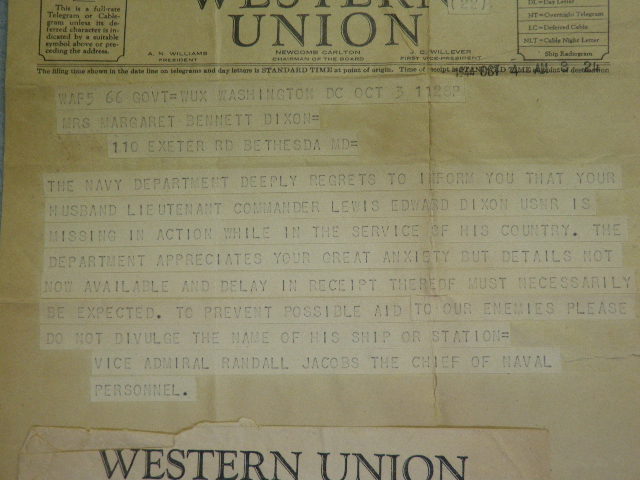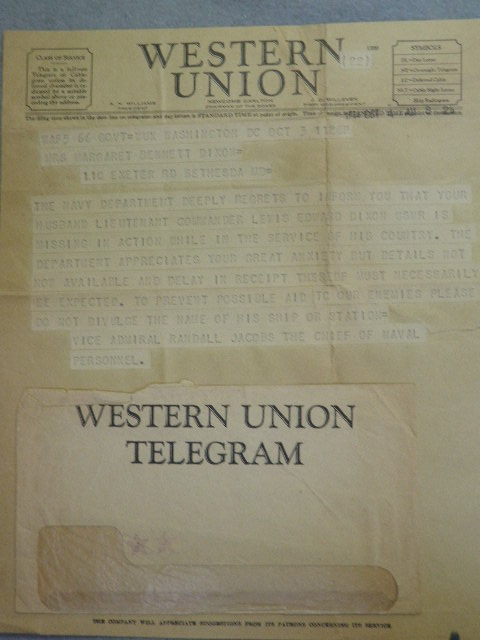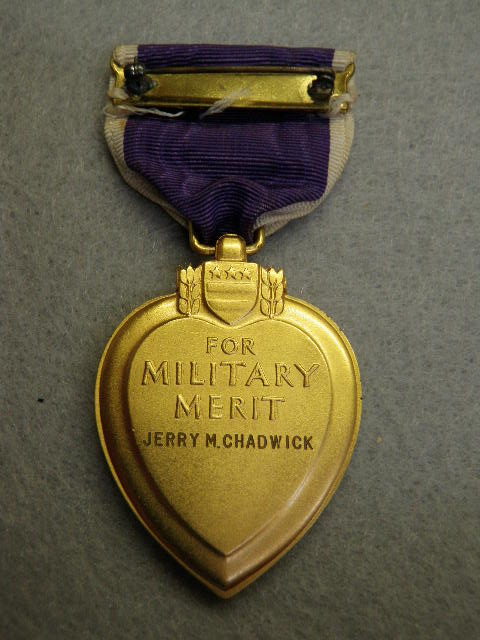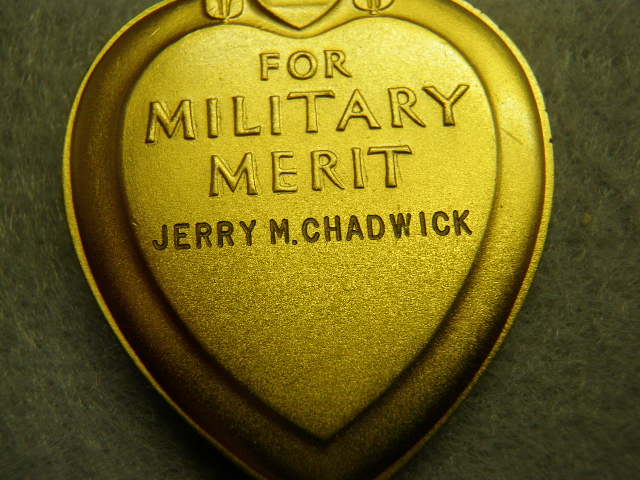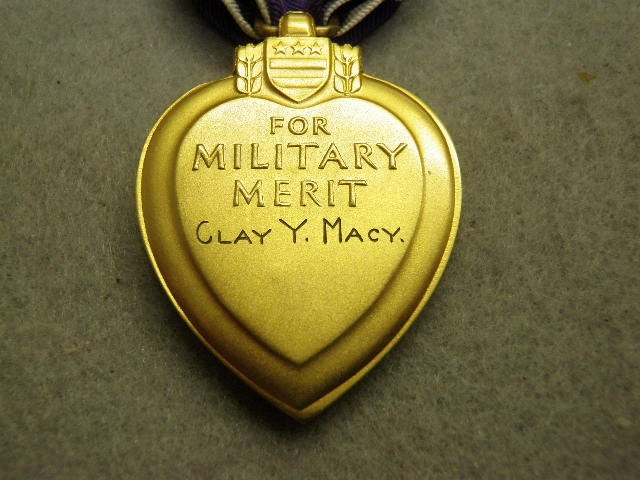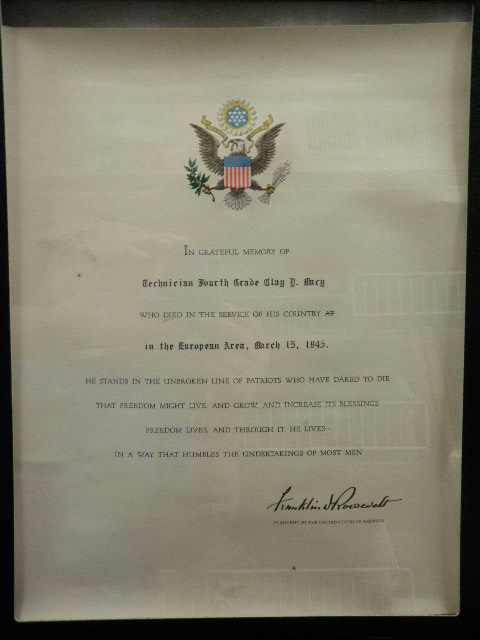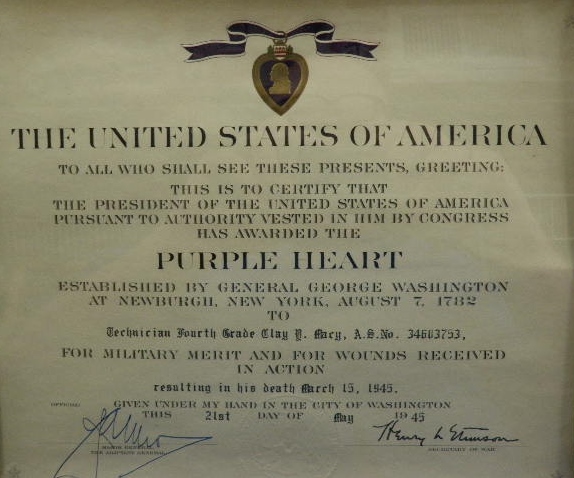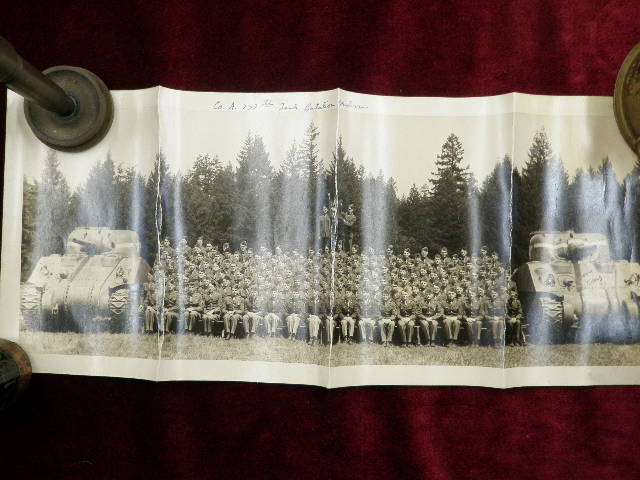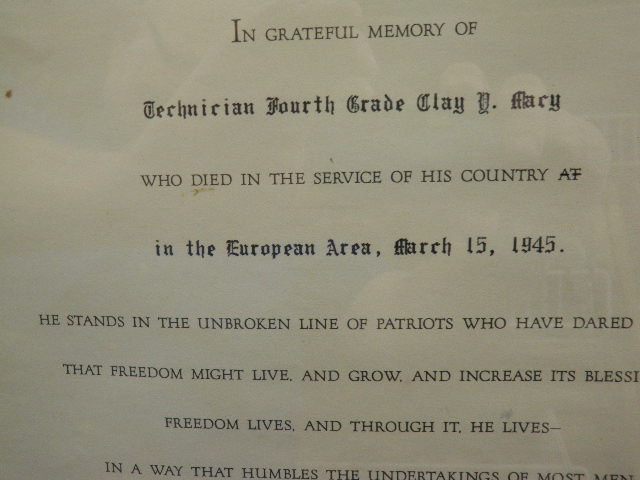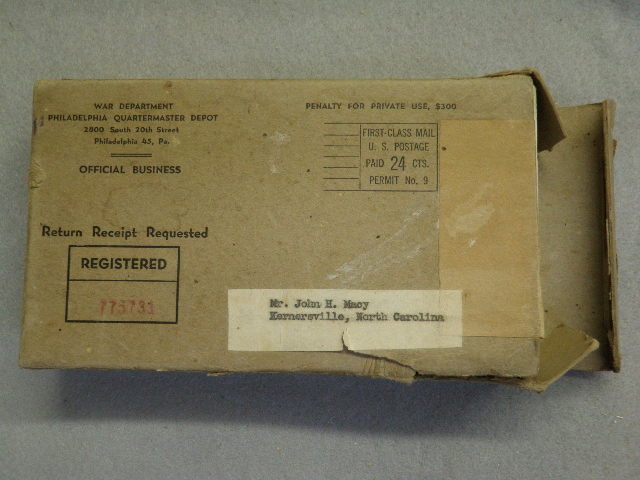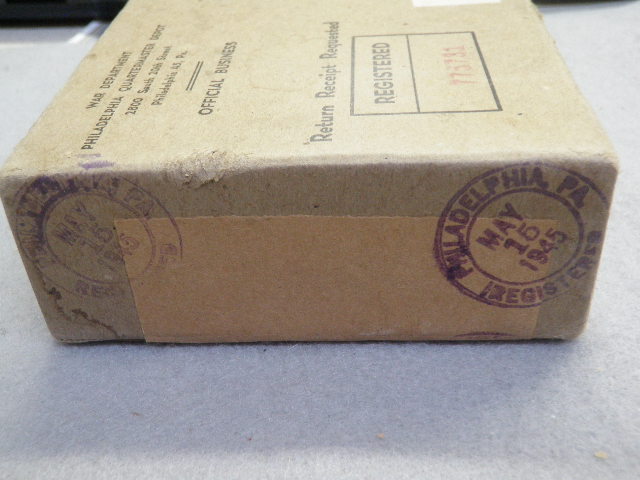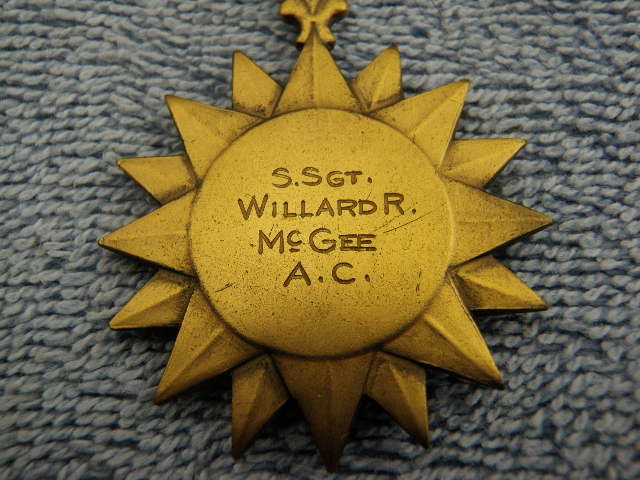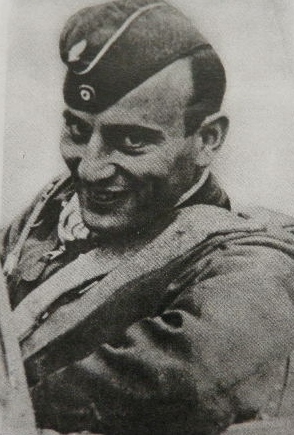" The Greatest Generation"
Corporal Lacy John Jr.,USMC
serial #307800
Co.B,1st Bn.,25th Marines,4th Marine Div.
KIA:25 July,1944,Tinian Island
From: Red Springs,North Carolina
Silver Star Awardee
Pfc.Alvin W.Pearson,USMCR
Co.K,24th Marines,4th Marine Div.
KIA:2 March,1945,Iwo Jima,Volcanic Islands
From:Millers Creek,North Carolina
1st.Sgt.Willis G.Peele
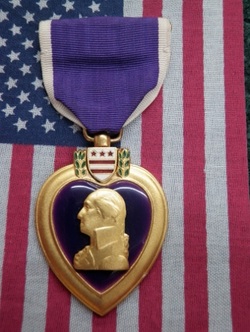
1st.Sgt.Willis G.Peele
serial #34030988
enlisted:3 March,1941
4454th Quartermaster
KIA:21 March,1945
From:Alamance County,North Carolina
serial #34030988
enlisted:3 March,1941
4454th Quartermaster
KIA:21 March,1945
From:Alamance County,North Carolina
Pfc.Grover C.St.John
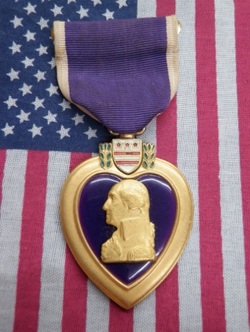
Pfc.Grover C.St.John
168thChemical Smoke Generating Company
3rd.Inf.Div.
Wounded in Action
From:Lenoir,North Carolina
168thChemical Smoke Generating Company
3rd.Inf.Div.
Wounded in Action
From:Lenoir,North Carolina
Corp.Ray E.Thompson
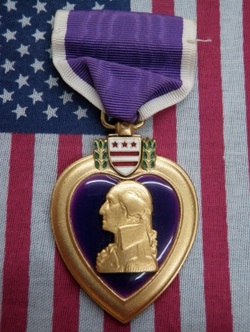
Corp.Ray E.Thompson
Co.L,119th inf.regt.
30th Div.
KIA:St.Lo.22,Oct.1944
From:Parkton,North Carolina
Co.L,119th inf.regt.
30th Div.
KIA:St.Lo.22,Oct.1944
From:Parkton,North Carolina
Tec.5 William P.Long
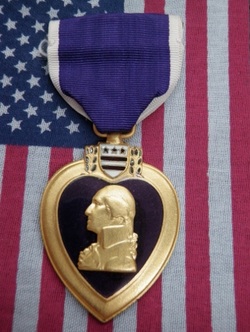
Tec.5 William P.Long
44th Armored Inf.Bn.
6th Armored Div.
KIA:16 Nov.1944
From:Lincolnton,North Carolina
*My Father also served in the 44th Armored Inf.Bn in WWII.
44th Armored Inf.Bn.
6th Armored Div.
KIA:16 Nov.1944
From:Lincolnton,North Carolina
*My Father also served in the 44th Armored Inf.Bn in WWII.
S/Sgt. Charles W.Willet
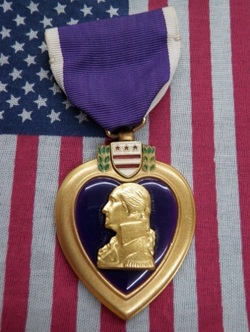
S/Sgt.Charles W.Willet
96thBomb Group,2nd Bomb Squadron
B-17
15th Air Force
KIA:22 August,1944
From:Kinston,North Carolina
96thBomb Group,2nd Bomb Squadron
B-17
15th Air Force
KIA:22 August,1944
From:Kinston,North Carolina
Pvt.Cecil G.Pugh
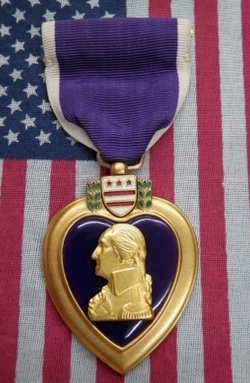
Pvt.Cecil G.Pugh
serial#34679167
Birth:20 May 1919
116th inf.regt.
29th.Div.
KIA:25 August,1944
From:Pleasant Garden,North Carolina
serial#34679167
Birth:20 May 1919
116th inf.regt.
29th.Div.
KIA:25 August,1944
From:Pleasant Garden,North Carolina
ARM3c Ralph T.Robinette USNR
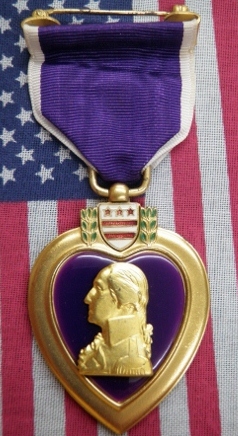
ARM3c Ralph T.Robinette USNR
TBM Avenger radio man-gunner
Torpedo Squadron 13
USS Franklin
KIA: 5 August,1944 Chichi Jima Harbor in Aerial Combat
From:Mt.Pleasant,North Carolina
TBM Avenger radio man-gunner
Torpedo Squadron 13
USS Franklin
KIA: 5 August,1944 Chichi Jima Harbor in Aerial Combat
From:Mt.Pleasant,North Carolina
Col.George W.Gillette
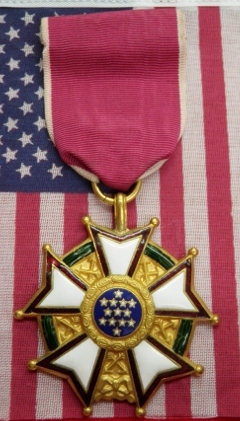
Col.George W.Gillette
Silver Star Awardee for WWI
with Co.A Corps of Engineers
North Carolina National Guard
Assigned To Washington,DC WWII
From:North Carolina
CMM Neil McKeller USN
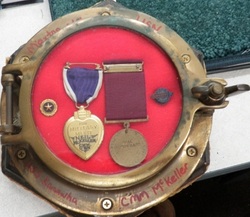
Chief Machinist Mate Neil McKeller USN
USS Kanawha AO-1
KIA:8 April 1944 Tulagi Harbor
From:Maxton,North Carolina
Pfc.David M.Sikes USMCR
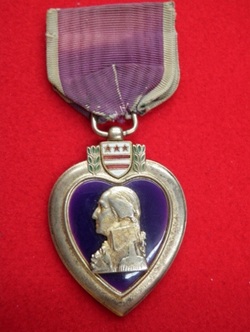
Pfc.David M.Sikes USMCR
Co.E 25th Marines
4th Marine Div.
KIA:6-7 July 1944 Saipan
Born: Asheville,North Carolina
Flight Officer Louis N.McGranahan
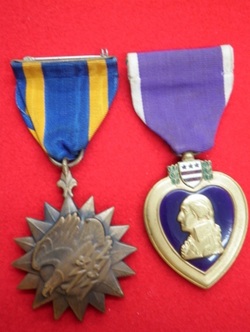
Flight Officer Louis N.McGranahan
Co-Pilot B-17
750th Bomb Group
447th Bomb Squadron
KIA: 14 June 1944
From:Durham,North Carolina
S2c Junior R Carrick USNR
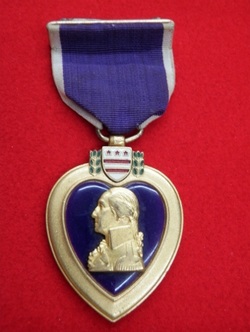
S2c Junior R.Carrick USNR
USS Aaron Ward
KIA: 3 May 1945 off Florida Island
From: High Point,North Carolina
Pfc.L.J.Martin USMC
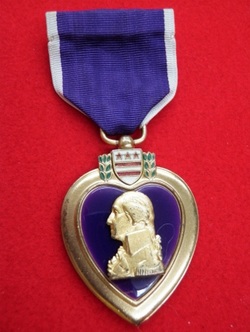
Pfc.L.J.Martin USMC
Hq.Co.2nd Bn.25th Marines
4th Marine Div.
KIA: 9 July 1944 Saipan
From:Winston-Salem,North Carolina
CY Leon H.Goforth USNR
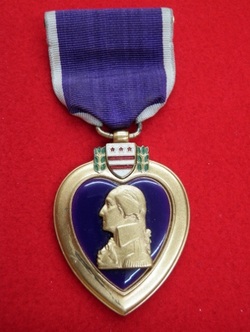
Chief Yeoman Leon H.Goforth
USS Barbel(SS-316) Submarine
KIA: 4 Feb.1945 sank off southwest of Palawan Island
FOD: 19 Feb.1946
From:Winston-Salem,North Carolina
Pfc.Morris E.Whitfield USMCR
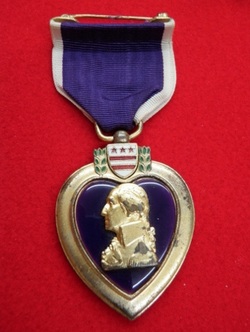
Pfc.Morris E.Whitfield USMCR
31st.Replacement Draft.
5th Marine Div.
KIA: 19 Feb.1945 D-Day on Iwo Jima,Volcanic Islands
From:Greensboro,North Carolina
The Jones Brothers from Wilmington,North Carolina
Oscar and Aubrey
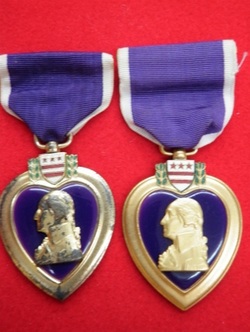
Coxswain Oscar R.Jones USNR
LST-921
KIA: 14 August 1944 sank off Falmouth United Kingdom
From:Wilmington,North Carolina
Brother of Aubrey A.Jones
S/Sgt.Aubrey A.Jones
120th inf regt 30th Div.
KIA: 11 July 1944 France
From:Wilmington,North Carolina
Brother of Oscar R.Jones
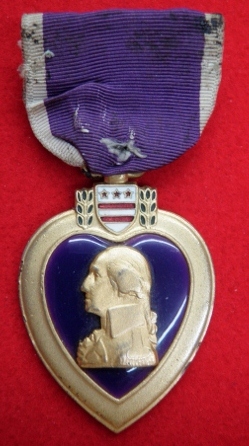
Pvt.William E.Everett
Btry.B 602nd Field Artillery Bn.(PK) Glider
1st ABN.Task Force
Operation Dragoon-Glider Assault
KIA:29 September 1944 in the vincinity of Cabrelles France
From:Gates,North Carolina
Btry.B 602nd Field Artillery Bn.(PK) Glider
1st ABN.Task Force
Operation Dragoon-Glider Assault
KIA:29 September 1944 in the vincinity of Cabrelles France
From:Gates,North Carolina
"Day of Infamy" December 7,1941 Pearl Harbor
GM1c Wilson Woodrow Hilton USN
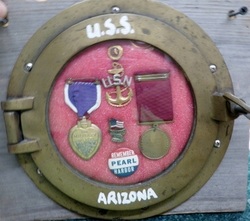
Gunners Mate 1c Wilson W.Hilton USN
USS Arizona Pearl Harbor
KIA: 7 December 7 1941
From:Vale,North Carolina
T/SGT.Howard T.Hart
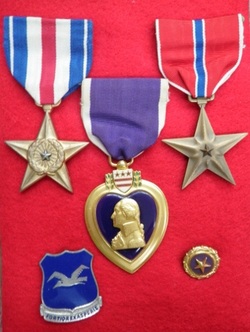
T/SGT.Howard T.Hart
413th inf.regt.
104th Div.
KIA: 24-25 Feb.1945
Pvt.Jack D.McKinney
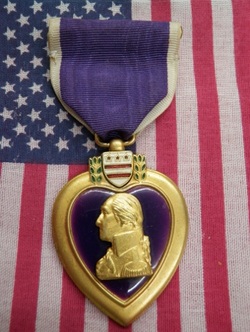
Pvt.Jack D.McKinney
3rd Signal Co.
3rd Inf Div
KIA:22 Dec.1943
Birth 10 Sept.1920 Mitchell Co.,North Carolina
Cpl.James T.Coe
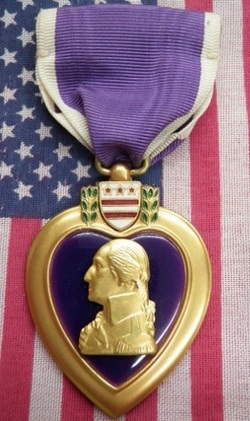
Cpl.James T.Coe
18th inf regt
1st inf Div
KIA: 3 August 1943 Battle for Troina,Italy
From:Surry Co.,North Carolina
Corp.Jimmy l.Colagerakis USMCR
Silver Star Awardee
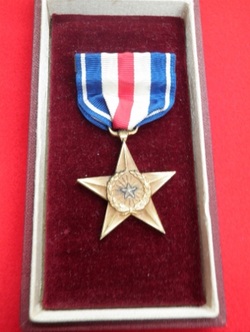
Corp.Jimmy L.Colagerakis
Co.F 2ndBn 24thMarines
4th Marine Div.
Born: 17 Nov.1924 Asheville,North Carolina
KIA: 9 July 1944 Saipan
Siver Star awardee 15 June-9 July 1944 Saipan
"This Silver Star was rescued from a trash pile
after being thrown away."
Purple Heart location unknown
2nd.Lt.Harvey L.Eakes
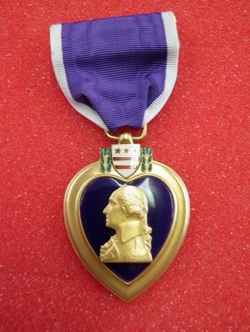
2nd.Lt.Harvey L.Eakes
serial# 0-886250
Pilot P-47D Fighter
82nd Fighter Squadron-78th.Fighter Group
KIA: hit by Flak near St.Valery
From: Oxford,North Carolina
Pvt.John H.Hutchins
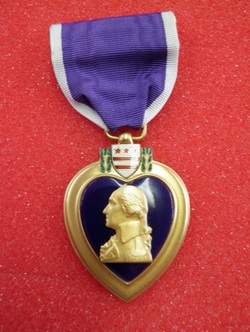
Pvt.John H.Hutchins
1st.Bn. 117th. inf regt
30th Inf.Div.
KIA: 7 August 1944 Northern France
Born: 13 September 1917 Mocksville,North Carolina
Pvt.Clyde P.Hayes
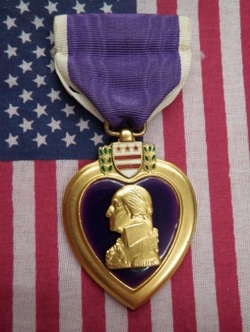
Pvt.Clyde P.Hayes
Co.B
509th Parachute Bn.
KIA: 29 Feburary 1944
Anzio,Italy
Born:Fairmont,North Carolina
S/Sgt.Paul J.Icard
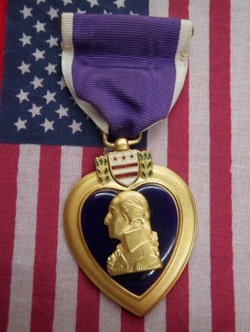
S/Sgt.Paul J.Icard
20th Armored Inf.Bn.
10th Armored Div.
KIA: 6 March 1945
Born: 6 May 1913 Newton,North Carolina
Pvt.Mack D.Morrow
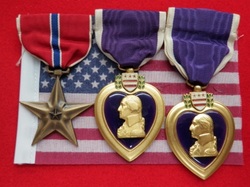
Pvt.Mack D.Morrow
serial# 34897852
7th Inf Regt
3rd Inf.Div.
KIA: 8 January 1945
From:Burke Co.North Carolina
Pvt.Lawrence P.Burkett
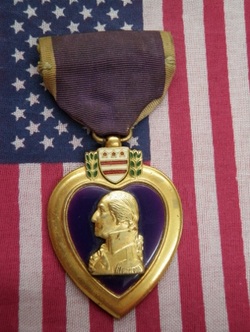
Pvt.Lawrence P.Burkett
Co.A 357th inf regt
90th Inf Div.
KIA: 11 December 1944 Dellingen Forest Saar Valley
Born: Ashe County,North Carolina
Tec 3 Joseph W.Hutton
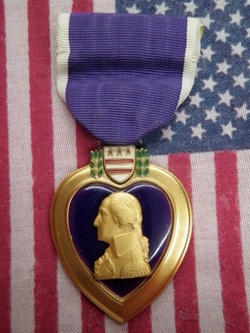
Tec 3 Joseph W.Hutton
Medical Department
Captured 9 August 1944 France
Released: 2 May 1945 Germany
From: Greensboro,North Carolina
Raymond S.Ward
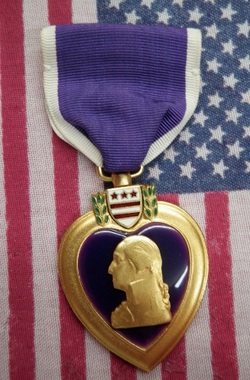
Raymond S.Ward
89th Chemical Mortar Bn. Recon
WIA
From:Edenton,North Carolina
Pvt.Gilmer E.Chilton
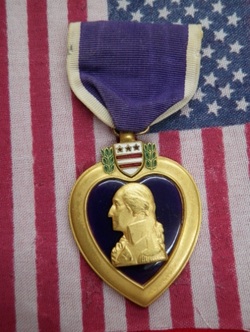
Pvt.Gilmer E.Chilton
141st inf regt
36th Inf Div anti-tank unit
Captured:9 Sept.1944 France
POW Camp Stalag 7A Moosberg,Bavaria
From:Draper,North Carolina
After Action Report
Three (3) officers, incl C.O. of this Org with
four (4) Em went forward on a reconn patrol for the 3rd Plat which was to emplace forward. Patrol last seen in the vicinity of Piery, France at 1000. A patrol was formed from the 3rd Plat & went forward but no trace or clue to the fate of the reconn party could be found. AT co moved thru Besencon, France at 1045 & reached are near Pelansey France at 1215. 1st, 2nd Mine Plat, jd1st Plat & is now in the vicinity of Pelansey. 2nd Pat is atchd to 3rd Bn & 3rd Plat is with 1st Bn this regt.
(Cross, Harry E 0-1288010
1st) (661 N. Ross St. Waynesburg, Pa.)
(Reed, John C 0-1306469 1st) (HQ
1st Battalion) (1018 S 11th Place, Birminghan, Ala)
(Davis, Glenn M
0-1299703) (920 Elison Ave, Louisville Ky.)
Above three (3) offices fr
dy to MIA as of 9 Sept 1944
(James, Charlie C 38036273 S/Sgt)
(Route 1, Box 3, Vernon Tx.)
(Caudill, Ross 35268019 Pfc) (Dony,
Ky.)
(Chilton, Gilmer E. 34592295Pfc.) (Box 325, Draper
N.C.)
(Ryan, Walter R. 20848534 Pfc.) (Box 97, Gonzales,
Tx)
Above four (4) EM fr dy to MIA as 9 Sept 1944
Sgt.Raymond C.Thornburg
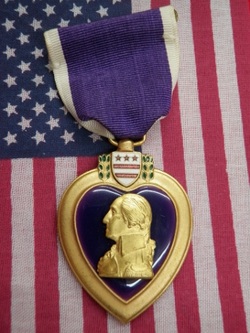
Sgt.Raymond C.Thornburg
Tail Gunner/Engineer B-24
847th Bomb Squadron
392nd Bomb Group
KIA: 2 June 1944
From: Gaston Co.North Carolina
S/Sgt.William H.McBryde
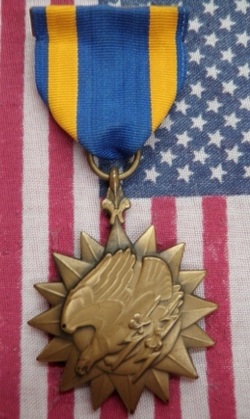
S/Sgt.William H.McBryde
Left Waist Gunner B-24
506th Bomb Squadron "The Flying Eight Balls"
44th Bomb Group
KIA: 2 Dec.1944 on Bombing Run to Bingen Marshalling yards
From: Red Springs,North Carolina
Purple Heart location unknown
Sgt.Leon E.Kelly
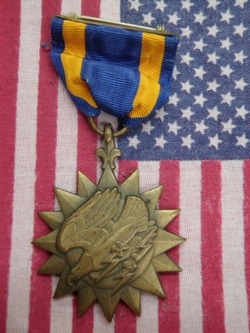
Sgt.Leon E.Kelly
Top Turrent Gunner/Engineer B-24 "Little Jo"
448th Bomb Group
KIA: 21-22 Nov.1944 near German Coast shot down by a
ME 262
From: Richmond Co.,North Carolina
Purple Heart location unknown
S/Sgt.Hulon O.Briggs
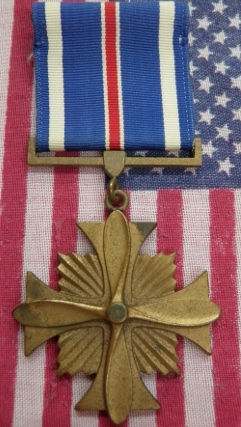
S/Sgt.Hulon O.Briggs
Top Turrent Gunner B-24
453rd Bomb Group
8th Air Force
30 Missions Completed
From:Graham,North Carolina
T/Sgt.Charles A.Sheffield
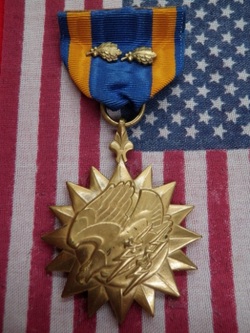
T/Sgt.Charles A.Sheffield
B-17
306th Bomb Group
Prisoner of War
Stalag 17B
From:North Carolina
Pvt.Joseph B.F.Barnwell
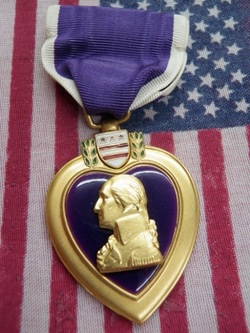
Pvt.Joseph B.F.Barnwell
Co.L 39th inf regt
9th Inf Div
KIA: 21 June 1944 Cherbourg France
From: Burlington,North Carolina
Pvt. Homer L.Cox
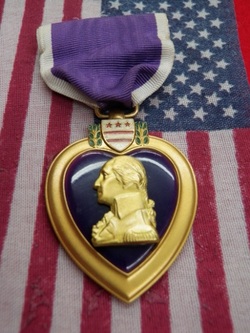
Pvt.Homer L.Cox
31st Inf Div
KIA: 6 May 1945 Philippine Islands
From: Ramsuer North Carolina
Cpl.Leighton H.Evans
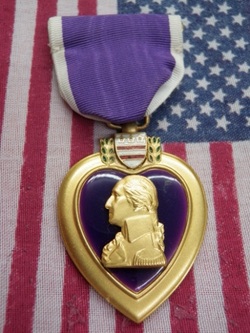
Cpl.Leighton H.Evans
60th Armored Inf Bn
Medic
KIA: 16 March 1945
From: Graham North Carolina
2Lt.Robert G.Jones "Jonesy"
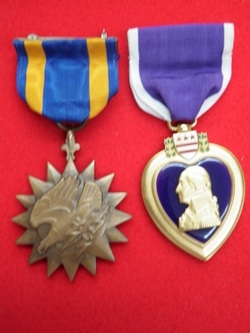
2Lt.Robert G.Jones "Jonesy"
serial# 0-810382
Fighter Pilot P-47 Thunderbolt
512th Fighter Squadron
406th Fighter Group
KIA: 6 August 1944 over France
"Jonesy" had two confirmed Kills
From: Fayetteville,North Carolina
Pvt.William J.Shields
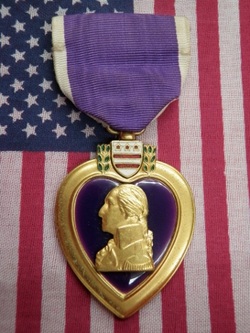
Pvt.William J.Shields
16th inf regt
1st Inf Div
KIA:22 March 1945
From:Tryon,North Carolina
Pfc Wilby A Abernathy
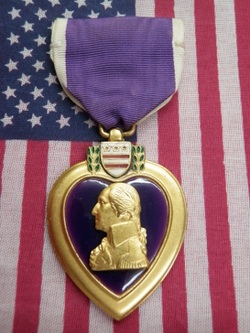
Pfc Wilby A Abernathy
Ordnance Department
interned at Davao POW camp Philippines
and died on the Japanese Hellship Shinyo Maru
on 7 September 1944
From: Wilson,North Carolina
2Lt.Charles L Presson
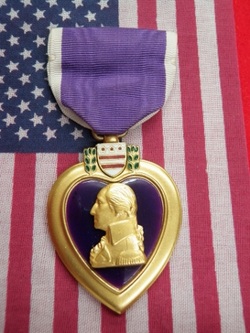
2 Lt.Charles L Presson
Pilot B-24
328th Bomb Squadron
93 Bomb Group
KIA: 3 Feburary 1944 Hit during raid on Wilhelmshayen Germany,He nursed the plane back to England but died in the crash landing
Born: 1916 Mecklenburg Co.North Carolina
Pvt.Bennie Goodman
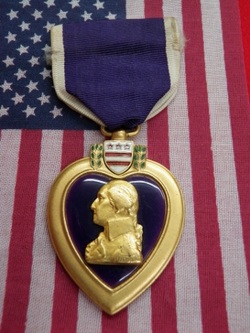
Pvt.Bennie Goodman
Co.C 820th Tank Destroyer Batt.
KIA: 23 December 1944 Belgium
From: Monroe North Carolina
Pfc Mark Grant
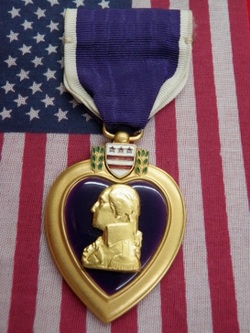
Pfc Mark Grant
Co.K 382nd inf regt
96th Div
KIA: 20 October 1944 Manilla Philippines
From: Richmond Co. North Carolina
Pfc Garland M Hunter
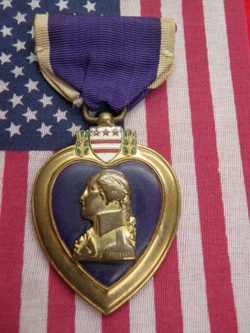
Pfc Garland M Hunter
363rd inf regt
91st Inf Div
KIA: 12 June 1944 Italy
From: Mt.Airy,North Carolina
Tech 5 Zalph H Andrews
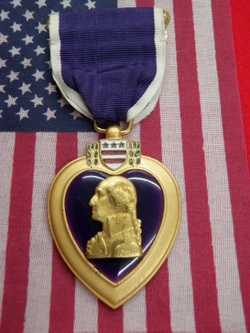
Tech 5 Zalph H Andrews
329th inf regt
83rd Div
KIA: 5 July 1944 France
From: Durham Co.North Carolina
Sgt Charles R Hedge
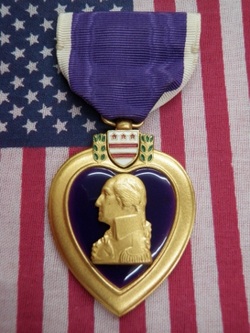
Sgt Charles R Hedge
11th Bombardment Squadron
7th Bombardment Group
B-25
KIA: 3 January 1942 Secret mission to Bomb Lashio,Burma retuning from raid
and crashed into mountain side on way to bomb Kunming,China
From: Henderson North Carolina
S/sgt Howard L Henson
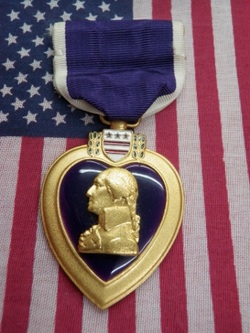
S/sgt Howard L Henson
362 inf regt
91st inf div
KIA: 14 September 1944
From: North Carolina
Pvt Spencer Campbell
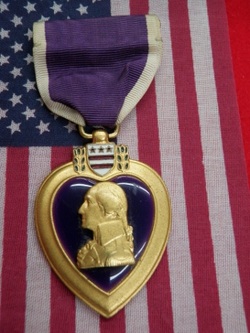
Pvt Spencer Campbell
351st inf regt
88th Div
KIA: 10 July 1944 Laiatico Italy
From: Lowgap North Carolina
Pvt Connie L Foust
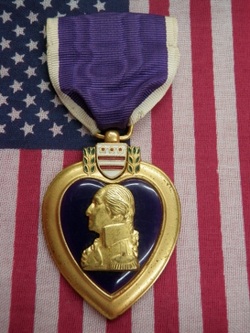
Pvt Connie L Foust
330th inf regt
83rd Div
KIA: 28 June 1944 France
From: Alamance Co.North Carolina
Sgt Paul H Middleton
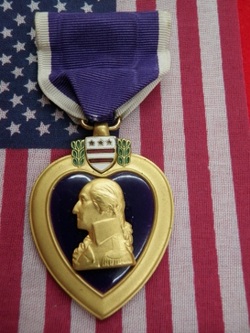
Sgt Paul H Middleton
381st inf regt
96th Inf Div
KIA: 12 April 1945 Okinawa
From:Mecklenburg Co.North Carolina
Sgt Donald E Williams
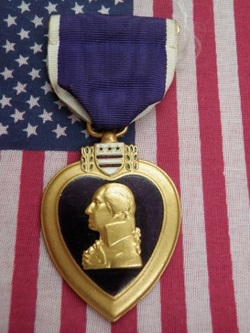
Sgt Donald E Williams
115th inf regt
29th Div
KIA: 27 August 1944
From: Wake Co North Carolina
Sgt John W Roberts
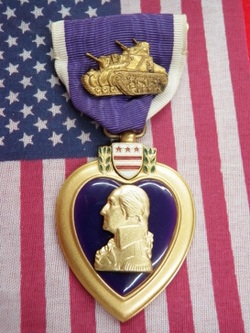
Sgt John W Roberts
48th Tank Battalion
14th Armored Div
KIA: 11 January 1945
From: Pasquotank Co.North Carolina
Pvt Arthur Taylor
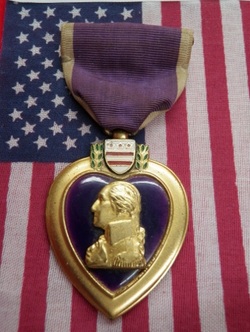
Pvt Arthur Taylor
serial# 34430650
Coastal Artillery Corps
Birth: 30 June 1923 Burnsville, Yancey Co.North Carolina
KIA: 30 December 1943
2nd Lt.James R.Jones
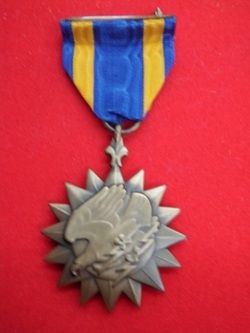
2nd Lt.James R.Jones
B-24 Co-Pilot "My Aching Back"
serial# 0-811091
735th Bomb Squadron
453th Bomb Group
KIA: 8 April,1944 shot down near Henningen,Germany
From: Skyland,North Carolina
Purple Heart location unknown
Pfc.General Pershing Holland
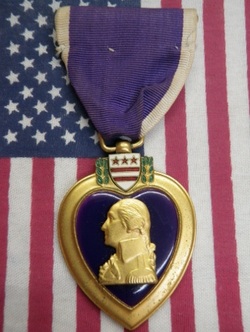
Pfc.General Pershing Holland
Birth: 27 Feb.1919 Wade,North Carolina
Co.G,9th inf regt,2nd Inf.Div.
KIA: 26 July 1944 St.Lo,France
After training in Northern Ireland and Wales from October 1943 to June 1944, the 2nd Infantry Division crossed the channel to land on Omaha Beach on D plus 1, 7 June 1944, near St. Laurent-sur-Mer. Attacking across the Aure River, the Division liberated Trévières, 10 June, and proceeded to assault and secure Hill 192 which was repelled the key enemy strongpoint on the road to Saint-Lô. After three weeks of fortifying the position and by order of Commanding General Walter M. Robertson the order was given to take HILL 192. On 11 July under Command of Col. Ralph W.Zwicker 38th INF with the 9th and the 23rd by his side the battle started at 5:45 am. Using an artillery concept used in World War I (Rolling Thunder) which was the only time during World War II it was used and after 25,000 rounds of HE/WP the hill was taken. The Division went on the defensive until the 26th.
Birth: 27 Feb.1919 Wade,North Carolina
Co.G,9th inf regt,2nd Inf.Div.
KIA: 26 July 1944 St.Lo,France
After training in Northern Ireland and Wales from October 1943 to June 1944, the 2nd Infantry Division crossed the channel to land on Omaha Beach on D plus 1, 7 June 1944, near St. Laurent-sur-Mer. Attacking across the Aure River, the Division liberated Trévières, 10 June, and proceeded to assault and secure Hill 192 which was repelled the key enemy strongpoint on the road to Saint-Lô. After three weeks of fortifying the position and by order of Commanding General Walter M. Robertson the order was given to take HILL 192. On 11 July under Command of Col. Ralph W.Zwicker 38th INF with the 9th and the 23rd by his side the battle started at 5:45 am. Using an artillery concept used in World War I (Rolling Thunder) which was the only time during World War II it was used and after 25,000 rounds of HE/WP the hill was taken. The Division went on the defensive until the 26th.
Pvt.John A.Teague,Jr.
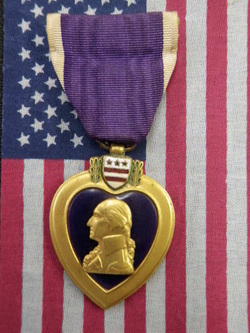
Pvt.John A.Teague
service# 14068620
From: Reidsville,N.C.
433rd Anti-Aircraft Arty
Automatic Weapons Battalion
Died of Wounds: 7 Feb.,1944 Italy
service# 14068620
From: Reidsville,N.C.
433rd Anti-Aircraft Arty
Automatic Weapons Battalion
Died of Wounds: 7 Feb.,1944 Italy
EM3c Wesley Grove Yeatts
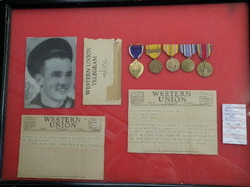
EM3c Wesley Grove Yeatts
service# 2627822 USN
KIA: 15 September 1942 on the USS Wasp
From: Reidsville,North Carolina
This is a New North Carolina grouping I picked to one of her Gallant Sailors.I got this group thru the generosity of the family
now letting me care for EM3c Yeatts.
On Tuesday, 15 September 1942, the carriers Wasp and Hornet and the North Carolina—with 10 other warships—were escorting the transports carrying the 7th Marine Regiment to Guadalcanal as reinforcements. Wasp had drawn the job of ready-duty carrier and was operating some 150 nmi (170 mi; 280 km) southeast of San Cristobal Island. Her gasoline system was in use, as planes were being refueled and rearmed for antisubmarine patrol missions; and Wasp had been at general quarters from an hour before sunrise until the time when the morning search returned to the ship at 10:00. Thereafter, the ship was in condition 2, with the air department at flight quarters. There was no contact with the Japanese during the day, with the exception of a Japanese four-engined flying boat downed by a Wasp Wildcat at 12:15.
About 14:20, the carrier turned into the wind to launch eight Wildcats and 18 Dauntlesses and to recover eight Wildcats and three Dauntlesses that had been airborne since before noon. Lt. (jg) Roland H. Kenton, USNR, flying a F4F3 of VF-71 was the last aircraft off the deck of the Wasp. The ship rapidly completed the recovery of the 11 planes, she then turned easily to starboard, the ship heeling slightly as the course change was made. At 14:44 a lookout reported "three torpedoes ... three points forward of the starboard beam".
A spread of six Type 95 torpedoes were fired at Wasp at about 14:44 from the tubes of the B1 Type Japanese submarine I-19. Wasp put over her rudder hard to starboard, but it was too late. Three torpedoes struck in quick succession about 14:45; one actually broached, left the water, and struck the ship slightly above the waterline. All hit in the vicinity of gasoline tanks and magazines. Two of the spread of torpedoes passed ahead of Wasp and were observed passing astern of Helena before sO'Brien was hit by one at 14:51 while maneuvering to avoid the other. The sixth torpedo passed either astern or under Wasp, narrowly missed Lansdowne in Wasp's screen about 14:48, was seen by Mustin in North Carolina's screen about 14:50, and struck North Carolina about 14:52.[2]
There was a rapid succession of explosions in the forward part of the ship. Aircraft on the flight and hangar decks were thrown about and dropped on the deck with such force that landing gears snapped. Planes suspended in the hangar overheads fell and landed upon those on the hangar deck; fires broke out almost simultaneously in the hangar and below decks. Soon, the heat of the intense gasoline fires detonated the ready ammunition at the forward anti-aircraft guns on the starboard side, and fragments showered the forward part of the ship. The number two 1.1 in (28 mm) mount was blown overboard.
Water mains in the forward part of the ship had been rendered inoperable: there was no water available to fight the fire forward, and the fires continued to set off ammunition, bombs, and gasoline. As the ship listed between 10 and 15 degrees to starboard, oil and gasoline, released from the tanks by the torpedo hit, caught fire on the water.
Captain Sherman slowed to 10 kn (12 mph; 19 km/h), ordering the rudder put to port to try to get the wind on the starboard bow; he then went astern with right rudder until the wind was on the starboard quarter, in an attempt to keep the fire forward. At that point, flames made the central station unusable, and communication circuits went dead. Soon, a serious gasoline fire broke out in the forward portion of the hangar; within 24 minutes of the initial attack, there were three additional major gasoline vapor explosions. Ten minutes later Captain Sherman decided to abandon ship, as all fire-fighting was proving ineffectual. The survivors would have to be disembarked quickly to minimise loss of life.
After consulting with Rear Admiral Leigh Noyes, Captain Sherman ordered "abandon ship" at 15:20. All badly injured men were lowered into rafts or rubber boats. Many unwounded men had to abandon from aft because the forward fires were burning with such intensity. The departure, as Captain Sherman observed it, looked "orderly"[citation needed], and there was no panic. The only delays occurred when many men showed reluctance to leave until all the wounded had been taken off. The abandonment took nearly 40 minutes, and at 16:00—satisfied that no one was left on board—Captain Sherman abandoned the ship.
Although the submarine hazard caused the accompanying destroyers to lie well clear or to shift position, they carried out rescue operations until Laffey, Lansdowne, Helena, and Salt Lake City had 1,946 men embarked. The fires on Wasp, drifting, traveled aft and there were four violent explosions at nightfall. Lansdowne was ordered to torpedo the carrier and stand by until she was sunk. Lansdowne's Mark 15 torpedoes had the same unrecognized flaws reported for the Mark 14 torpedo. The first two torpedoes were fired perfectly, but did not explode, leaving Lansdowne with only three more. The magnetic influence exploders on these were disabled and the depth set at 10 ft (3.0 m). All three detonated, but Wasp remained afloat for some time, sinking at 21:00.[3] 193 men had died during the attack
service# 2627822 USN
KIA: 15 September 1942 on the USS Wasp
From: Reidsville,North Carolina
This is a New North Carolina grouping I picked to one of her Gallant Sailors.I got this group thru the generosity of the family
now letting me care for EM3c Yeatts.
On Tuesday, 15 September 1942, the carriers Wasp and Hornet and the North Carolina—with 10 other warships—were escorting the transports carrying the 7th Marine Regiment to Guadalcanal as reinforcements. Wasp had drawn the job of ready-duty carrier and was operating some 150 nmi (170 mi; 280 km) southeast of San Cristobal Island. Her gasoline system was in use, as planes were being refueled and rearmed for antisubmarine patrol missions; and Wasp had been at general quarters from an hour before sunrise until the time when the morning search returned to the ship at 10:00. Thereafter, the ship was in condition 2, with the air department at flight quarters. There was no contact with the Japanese during the day, with the exception of a Japanese four-engined flying boat downed by a Wasp Wildcat at 12:15.
About 14:20, the carrier turned into the wind to launch eight Wildcats and 18 Dauntlesses and to recover eight Wildcats and three Dauntlesses that had been airborne since before noon. Lt. (jg) Roland H. Kenton, USNR, flying a F4F3 of VF-71 was the last aircraft off the deck of the Wasp. The ship rapidly completed the recovery of the 11 planes, she then turned easily to starboard, the ship heeling slightly as the course change was made. At 14:44 a lookout reported "three torpedoes ... three points forward of the starboard beam".
A spread of six Type 95 torpedoes were fired at Wasp at about 14:44 from the tubes of the B1 Type Japanese submarine I-19. Wasp put over her rudder hard to starboard, but it was too late. Three torpedoes struck in quick succession about 14:45; one actually broached, left the water, and struck the ship slightly above the waterline. All hit in the vicinity of gasoline tanks and magazines. Two of the spread of torpedoes passed ahead of Wasp and were observed passing astern of Helena before sO'Brien was hit by one at 14:51 while maneuvering to avoid the other. The sixth torpedo passed either astern or under Wasp, narrowly missed Lansdowne in Wasp's screen about 14:48, was seen by Mustin in North Carolina's screen about 14:50, and struck North Carolina about 14:52.[2]
There was a rapid succession of explosions in the forward part of the ship. Aircraft on the flight and hangar decks were thrown about and dropped on the deck with such force that landing gears snapped. Planes suspended in the hangar overheads fell and landed upon those on the hangar deck; fires broke out almost simultaneously in the hangar and below decks. Soon, the heat of the intense gasoline fires detonated the ready ammunition at the forward anti-aircraft guns on the starboard side, and fragments showered the forward part of the ship. The number two 1.1 in (28 mm) mount was blown overboard.
Water mains in the forward part of the ship had been rendered inoperable: there was no water available to fight the fire forward, and the fires continued to set off ammunition, bombs, and gasoline. As the ship listed between 10 and 15 degrees to starboard, oil and gasoline, released from the tanks by the torpedo hit, caught fire on the water.
Captain Sherman slowed to 10 kn (12 mph; 19 km/h), ordering the rudder put to port to try to get the wind on the starboard bow; he then went astern with right rudder until the wind was on the starboard quarter, in an attempt to keep the fire forward. At that point, flames made the central station unusable, and communication circuits went dead. Soon, a serious gasoline fire broke out in the forward portion of the hangar; within 24 minutes of the initial attack, there were three additional major gasoline vapor explosions. Ten minutes later Captain Sherman decided to abandon ship, as all fire-fighting was proving ineffectual. The survivors would have to be disembarked quickly to minimise loss of life.
After consulting with Rear Admiral Leigh Noyes, Captain Sherman ordered "abandon ship" at 15:20. All badly injured men were lowered into rafts or rubber boats. Many unwounded men had to abandon from aft because the forward fires were burning with such intensity. The departure, as Captain Sherman observed it, looked "orderly"[citation needed], and there was no panic. The only delays occurred when many men showed reluctance to leave until all the wounded had been taken off. The abandonment took nearly 40 minutes, and at 16:00—satisfied that no one was left on board—Captain Sherman abandoned the ship.
Although the submarine hazard caused the accompanying destroyers to lie well clear or to shift position, they carried out rescue operations until Laffey, Lansdowne, Helena, and Salt Lake City had 1,946 men embarked. The fires on Wasp, drifting, traveled aft and there were four violent explosions at nightfall. Lansdowne was ordered to torpedo the carrier and stand by until she was sunk. Lansdowne's Mark 15 torpedoes had the same unrecognized flaws reported for the Mark 14 torpedo. The first two torpedoes were fired perfectly, but did not explode, leaving Lansdowne with only three more. The magnetic influence exploders on these were disabled and the depth set at 10 ft (3.0 m). All three detonated, but Wasp remained afloat for some time, sinking at 21:00.[3] 193 men had died during the attack
AMM2c Robert H.Welch
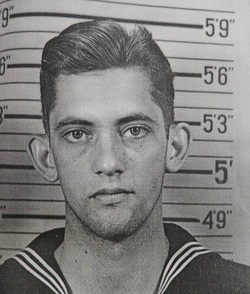
AMM2c Robert H.Welch USN
Born:16 April 1920 Waynesville,N.C.
Patrol Squdaron 42
MIA: 9 May 1942 On a Patrol out of Dutch Harbour Alaska
Crew on a PBY-5A
Born:16 April 1920 Waynesville,N.C.
Patrol Squdaron 42
MIA: 9 May 1942 On a Patrol out of Dutch Harbour Alaska
Crew on a PBY-5A
1st lt.William A.Poole
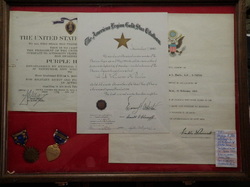
1st Lt.William A.Poole
Born:16 January 1920
Fayetteville,North Carolina
Navigator B-17 "The Captain and his
Kids"
68th Bomb Group/ 44th Bomb Squadron
KIA: 16 Febuary 1943 attack on
the German "Raider"Ship Togo Dunkirk,France
The target for this hurried afternoon mission was a German Raider thought to be the Togo, which was
found on the morning reconnaissance flight. It was thought that the ship was ready to slip
out at any time to raid Allied shipping. Crews were hurriedly called and briefed, with 17 planes
of the 44th BG soon airborne. They rendezvoused with aircraft of the 329th Squadron, 93rd BG,
and were led by the 67th Squadron's Captain Cullen and the C.O. of the 67th Squadron, Major
Donald W. MacDonald, as the formation's Command Pilot. Two aircraft were lost. A third
crash-landed on the beach south of Ramsgate.
The following comments were filed by Major H. M. Light, "The airplane that I was on
did not get any major flak damage and the pilot, Lt. John H. Diehl, spotted Lt. Oliphant and slowed
up for him, as well as another ship piloted by Capt. Thomas Cramer, who a few minutes latermanaged to crash-land his plane
on the British beach. Lt. Oliphant was slowly losing altitude when coming off the target. Then all of a sudden several
FW 190s came out of the sun and started in on us. The sun blinded and hindered our gunners from firing. I operated my nose gun
and only got about three bursts at them. My navigator, Lt. George Kelley, only got off about the same number of shots with his side nose gun. The Jerries did a good job because they had us completely bewildered. On the first pass they got one of Cramer's engines; on the second pass they got another of his engines and set fire to one of Oliphant's. Then, on subsequent passes, the enemy fighters got a
third engine on Cramer's and another on Oliphant's. At about half way between France and England, while still over the Channel, I
noticed the engines afire on the left side of Oliphant's aircraft, and I also saw the nose of that ship filled with swirling flames. Then
it looked like the fire swept back to the cockpit. Next thing I saw was the ship going down towards the sea. I did not see the plane strike the water but our tail gunner, Sgt. Milford Spears,stated over the interphone that the plane exploded as it hit the water. I did not see any chutes.
"We protected Capt. Cramer on in to the beach so he could crash-land, and he did a magnificent job of it. Before he got to shore he told his crew that anyone could bail out that wanted to, so Lt.Robert Flynn, Lt. Poole and the engineer, Sgt. John Crump, did so, but at too-low an altitude,and all three were killed. (See below.) Our ship had gotten through the battle with only a few flak and bullet holes when all "heck" broke loose as the British shore guns opened fire on us and we were almost shot down over the English coast. We had fair fighter protection some of the way, but they didn't help very much because of the brillant sun.
68th
Sq., #41-23800 Y, Cramer THE CAPTAIN AND THE KIDS
Crash-landed
68th Squadron Crewmen Who Remained in the Aircraft
CRAMER, THOMAS R. Pilot Capt. ASN 0-23925
HUGHES, W. D. Co-pilot 2nd Lt.
HOGAN, HARRY C. Radio Oper. T/Sgt.
GATES, W. J. RW Gunner S/Sgt.
MacCAMMOND, JAMES A. LW Gunner Sgt. Slightly wounded
CASTILLO, RICHARD M. Tail Turret S/Sgt.
LAWSON, GERALD G. Gunner Sgt.
McMACKIN, CHARLES Gunner Sgt.
68th
Squadron Crewmen Who Bailed Out: All KIA
POOLE, WILLIAM A. Navigator 1st Lt. Fayetteville,ASN 0-789500 KIA North Carolina
FLYNN, ROBERT K. Bombardier lst Lt.
ASN 0-727327 KIA Blair, Nebraska
CRUMP, JOHN W. Engineer T/Sgt. Nashville,TN. ASN 36318179 KIA, WOM Cambridge
Note:
Three of the surviving crewmembers were later killed in action: Capt. Thomas Cramer (2 July 1943
T/Sgt. Harry Hogan (15 June 1943), and Sgt. Charles McMackin (1 August 1943).
This aircraft, too, was damaged by the flak over Dunkirk at approximately 1540 hours, being hit in #4 engine, which
was feathered immediately. The same hit also crippled the bomb release mechanism, the hydraulic system and portions of the
oxygen system. Three FW 190s, reported aspainted gray with yellow noses, attacked in a line from astern, from near nine o'clock. One of these enemy aircraft was claimed as destroyed by right waist gunner, Sgt. McMackin. During these attacks, some small holes, either from 20-mm shells or machine guns bullets, developed in the intake manifold of #2 engine. Too, about this same time, a 20-mm shell entered the cockpit,bursting just aft of the pilot, Captain T. R. Cramer, who was protected by the armor plated seat.
Two more 20-mm shells entered the waist position, one of which slightly wounded Sgt.MacCammond.A subsequent attack started a fire in #1 engine but this was extinguished temporarily, and #2 engine was feathered. About mid-channel, near 8,000 feet altitude, the third attack by three FW190s, also gray with yellow noses, occurred from 9 o'clock, level. The left waist gunner returned fire at about 1,000 yards but the enemy aircraft continued to close until near 300 yards, and then broke off. These three fighters had just attempted to finish off Lt. Oliphant's ship, which had been yawing badly. (This attack was not seen by Diehl's crew.) A few moments later #1 engine again caught fire and began to burn. At this same time Lt. Flynn, the bombardier, went out on the catwalk in the bomb bay and manually jettisoned the bombs.Then Lt. Flynn, Lt. Poole, and T/Sgt. Crump also bailed out by way of the open bomb bay. This sequence was observed by crewmembers in Lt. Diehl's aircraft.At 1615 hours, it became apparent to Capt. Cramer that his ship could not make base so he headed for the beach area. He succeeded in crash-landing on the beach 10 to 15 yards from thewater's edge. The landing was made without flaps or landing gear, but those on board were not injured seriously, and they soon managed to extinguish the fire in #1 engine.
Site of crash wasapproximately one mile south of Ramsgate.
Two bodies (Poole and Flynn) were recovered
immediately. Crump's body was never
found
Born:16 January 1920
Fayetteville,North Carolina
Navigator B-17 "The Captain and his
Kids"
68th Bomb Group/ 44th Bomb Squadron
KIA: 16 Febuary 1943 attack on
the German "Raider"Ship Togo Dunkirk,France
The target for this hurried afternoon mission was a German Raider thought to be the Togo, which was
found on the morning reconnaissance flight. It was thought that the ship was ready to slip
out at any time to raid Allied shipping. Crews were hurriedly called and briefed, with 17 planes
of the 44th BG soon airborne. They rendezvoused with aircraft of the 329th Squadron, 93rd BG,
and were led by the 67th Squadron's Captain Cullen and the C.O. of the 67th Squadron, Major
Donald W. MacDonald, as the formation's Command Pilot. Two aircraft were lost. A third
crash-landed on the beach south of Ramsgate.
The following comments were filed by Major H. M. Light, "The airplane that I was on
did not get any major flak damage and the pilot, Lt. John H. Diehl, spotted Lt. Oliphant and slowed
up for him, as well as another ship piloted by Capt. Thomas Cramer, who a few minutes latermanaged to crash-land his plane
on the British beach. Lt. Oliphant was slowly losing altitude when coming off the target. Then all of a sudden several
FW 190s came out of the sun and started in on us. The sun blinded and hindered our gunners from firing. I operated my nose gun
and only got about three bursts at them. My navigator, Lt. George Kelley, only got off about the same number of shots with his side nose gun. The Jerries did a good job because they had us completely bewildered. On the first pass they got one of Cramer's engines; on the second pass they got another of his engines and set fire to one of Oliphant's. Then, on subsequent passes, the enemy fighters got a
third engine on Cramer's and another on Oliphant's. At about half way between France and England, while still over the Channel, I
noticed the engines afire on the left side of Oliphant's aircraft, and I also saw the nose of that ship filled with swirling flames. Then
it looked like the fire swept back to the cockpit. Next thing I saw was the ship going down towards the sea. I did not see the plane strike the water but our tail gunner, Sgt. Milford Spears,stated over the interphone that the plane exploded as it hit the water. I did not see any chutes.
"We protected Capt. Cramer on in to the beach so he could crash-land, and he did a magnificent job of it. Before he got to shore he told his crew that anyone could bail out that wanted to, so Lt.Robert Flynn, Lt. Poole and the engineer, Sgt. John Crump, did so, but at too-low an altitude,and all three were killed. (See below.) Our ship had gotten through the battle with only a few flak and bullet holes when all "heck" broke loose as the British shore guns opened fire on us and we were almost shot down over the English coast. We had fair fighter protection some of the way, but they didn't help very much because of the brillant sun.
68th
Sq., #41-23800 Y, Cramer THE CAPTAIN AND THE KIDS
Crash-landed
68th Squadron Crewmen Who Remained in the Aircraft
CRAMER, THOMAS R. Pilot Capt. ASN 0-23925
HUGHES, W. D. Co-pilot 2nd Lt.
HOGAN, HARRY C. Radio Oper. T/Sgt.
GATES, W. J. RW Gunner S/Sgt.
MacCAMMOND, JAMES A. LW Gunner Sgt. Slightly wounded
CASTILLO, RICHARD M. Tail Turret S/Sgt.
LAWSON, GERALD G. Gunner Sgt.
McMACKIN, CHARLES Gunner Sgt.
68th
Squadron Crewmen Who Bailed Out: All KIA
POOLE, WILLIAM A. Navigator 1st Lt. Fayetteville,ASN 0-789500 KIA North Carolina
FLYNN, ROBERT K. Bombardier lst Lt.
ASN 0-727327 KIA Blair, Nebraska
CRUMP, JOHN W. Engineer T/Sgt. Nashville,TN. ASN 36318179 KIA, WOM Cambridge
Note:
Three of the surviving crewmembers were later killed in action: Capt. Thomas Cramer (2 July 1943
T/Sgt. Harry Hogan (15 June 1943), and Sgt. Charles McMackin (1 August 1943).
This aircraft, too, was damaged by the flak over Dunkirk at approximately 1540 hours, being hit in #4 engine, which
was feathered immediately. The same hit also crippled the bomb release mechanism, the hydraulic system and portions of the
oxygen system. Three FW 190s, reported aspainted gray with yellow noses, attacked in a line from astern, from near nine o'clock. One of these enemy aircraft was claimed as destroyed by right waist gunner, Sgt. McMackin. During these attacks, some small holes, either from 20-mm shells or machine guns bullets, developed in the intake manifold of #2 engine. Too, about this same time, a 20-mm shell entered the cockpit,bursting just aft of the pilot, Captain T. R. Cramer, who was protected by the armor plated seat.
Two more 20-mm shells entered the waist position, one of which slightly wounded Sgt.MacCammond.A subsequent attack started a fire in #1 engine but this was extinguished temporarily, and #2 engine was feathered. About mid-channel, near 8,000 feet altitude, the third attack by three FW190s, also gray with yellow noses, occurred from 9 o'clock, level. The left waist gunner returned fire at about 1,000 yards but the enemy aircraft continued to close until near 300 yards, and then broke off. These three fighters had just attempted to finish off Lt. Oliphant's ship, which had been yawing badly. (This attack was not seen by Diehl's crew.) A few moments later #1 engine again caught fire and began to burn. At this same time Lt. Flynn, the bombardier, went out on the catwalk in the bomb bay and manually jettisoned the bombs.Then Lt. Flynn, Lt. Poole, and T/Sgt. Crump also bailed out by way of the open bomb bay. This sequence was observed by crewmembers in Lt. Diehl's aircraft.At 1615 hours, it became apparent to Capt. Cramer that his ship could not make base so he headed for the beach area. He succeeded in crash-landing on the beach 10 to 15 yards from thewater's edge. The landing was made without flaps or landing gear, but those on board were not injured seriously, and they soon managed to extinguish the fire in #1 engine.
Site of crash wasapproximately one mile south of Ramsgate.
Two bodies (Poole and Flynn) were recovered
immediately. Crump's body was never
found
Private William C. Henry
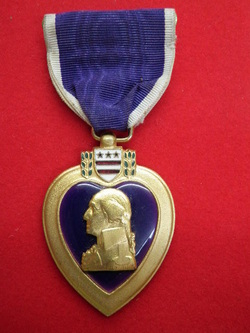
William C.Henry
Service#34591394
325th Combat Engineers
100th Inf.Div.
KIA: 10 January 1945 Epinal,France
Born: Murphy,Cherokee Co.North Carolina
Service#34591394
325th Combat Engineers
100th Inf.Div.
KIA: 10 January 1945 Epinal,France
Born: Murphy,Cherokee Co.North Carolina
Pfc.Armon R Williams
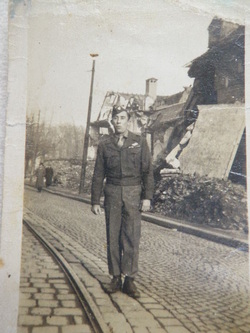
Pfc.Armon R.Williams
DOB: 16 June 1921 Dunn,North Carolina
Co.L,397th Inf Regt 100th Div.
Served in WWII
DOB: 16 June 1921 Dunn,North Carolina
Co.L,397th Inf Regt 100th Div.
Served in WWII
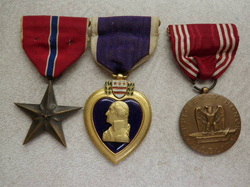
Pvt Fred D Werner
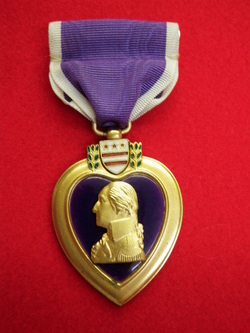
Pvt.Fred D Werner
Birth: 1925 Cabarrus County,North Carolina
KIA: 15 November 1944 France
Co.L,397th Inf Regt
100th Inf Division
Birth: 1925 Cabarrus County,North Carolina
KIA: 15 November 1944 France
Co.L,397th Inf Regt
100th Inf Division
2nd Lt.James E.Rogers
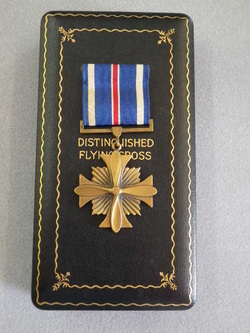
2nd Lt.James E.Rogers Navigator B-24 #42-73194
493rd Squadron 7th Bomb Group 10th Air Force
KIA: 14 November,1943 Burma
They were part of a six plane formation on the way to bomb the town of Pakokku when they were attacked by fifteen to twenty Japanese fighters.Rogers' and two others were shot down.There were no survivors.The crew was buried at Zachary Taylor National Cemetery Section E163-164 on 27 September,1949.2nd Lt.Rogers hailed from Cabarrus Co.,North Carolina.
493rd Squadron 7th Bomb Group 10th Air Force
KIA: 14 November,1943 Burma
They were part of a six plane formation on the way to bomb the town of Pakokku when they were attacked by fifteen to twenty Japanese fighters.Rogers' and two others were shot down.There were no survivors.The crew was buried at Zachary Taylor National Cemetery Section E163-164 on 27 September,1949.2nd Lt.Rogers hailed from Cabarrus Co.,North Carolina.
Captain Frank W Wolfe
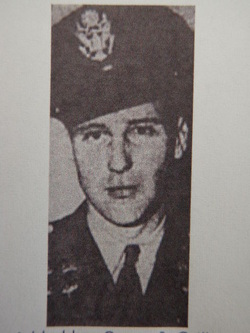
Captain Frank W Wolfe
92nd Bomb Group 326th Bomb Squadron
Birth: 12 May 1921 Mecklenburg Co. North Carolina
KIA: 27 September 1944 Plane Crash over Arkansas when a Plane flying above him crashed into his plane.
He was a B-17 Pilot with over 25 combat missions.Participated in the Schweinfurt raids of "Black Thursday" fame.He had survived three crash landings in Flying Fortresses and walked away from each one.
92nd Bomb Group 326th Bomb Squadron
Birth: 12 May 1921 Mecklenburg Co. North Carolina
KIA: 27 September 1944 Plane Crash over Arkansas when a Plane flying above him crashed into his plane.
He was a B-17 Pilot with over 25 combat missions.Participated in the Schweinfurt raids of "Black Thursday" fame.He had survived three crash landings in Flying Fortresses and walked away from each one.
Pfc James A Page
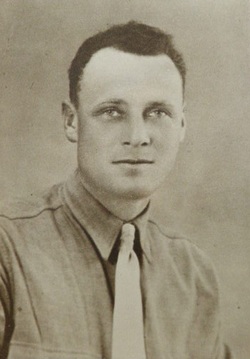
Pfc James A Page
DOB: 25 November 1906
Caswell County,North Carolina
141st Inf Regt Medical Detachment
36th Inf Div.
KIA: 2 June 1944 Italy
WORLD WAR II :
The Regiment was
inducted into federal service on 25 November 1940 and was assigned to the 36th
Infantry Division. The 141st moved to Camp Bowie, Brownwood, Texas, the second
location for the camp of that name, on 27 December, 1940. Training continued in
Florida and North Carolina in 1942 and the regiment moved to Camp Edwards,
Massachusetts, in August, 1942. The regiment sailed from New York on April 1,
1943, arriving in North Africa on 13 April.
Bloody Salerno:
The first World War II amphibious assault in Europe
by any American division was by the 36th Division near Salerno (Paestum area),
Italy, on 9 September, 1943. Chaos on the beach led to terrible casualties to
the 141st. Coordination with naval gunfire was poor, allowing German artillery
and tanks to dominate the battlefield for the first hours. By September 18, the
Germans had abandoned their positions and the 141st was put in reserve. But the
fighting had been horrific.
San Pietro:
In the fighting for Highway Six - the Road to Rome
- in November, the 141st spent November and December, 1943, fighting to clear
the Mignano Gap. The Regiment assaulted San Pietro on December 15th . The old
Italian village was located on the slopes of a mountain, and, after three
attempts at assault, the 141st finally took the village when the 142d outflanked
the position. Soon they followed the First Special Service Force up Hill 730
after the capture of that position. The Germans called the 141st "wild men from
Texas, skilled in fieldcraft and Fighting".
Rapido River:
It was foot by foot, yard by yard, in January and
February, 1944, and then the 141st reached the River Rapido, a name that left a
bloody page in the records of the 141st and 143d. Terrible casualties resulted
as the Alamo Regiment attempted to force the stream, lacking boats, bridges and
artillery support. The 48 hours at the Rapido River cost the Regiment dearly.
And there still was fighting ahead, Monte Cassino. By the end of this campaign,
February 27th, platoons were reduced to squads, companies to platoon strength
and battalions to two hundred men.
Anzio and Velletri:
The 141st reinforced
the Fifth Army by landing at Anzio on May 22, 1944. After moving into the line,
the 141st, reinforced as a regimental combat team, began a full scale assault at
Velletri on June 1, 1944. By midnight it was a mop-up operation, but the town -
in a shambles - will live as another hard fought battle in the Regiment's
memory. And the capture of Velletri caused the German line south of Rome to
crumble. The Germans began to retreat, turning into a rout by June 4th and the
Regiment marched in triumph through Rome on the 5th. The Regiment had been in
combat for a total of 137 days, with 3,000 casualties in killed, wounded and
missing
DOB: 25 November 1906
Caswell County,North Carolina
141st Inf Regt Medical Detachment
36th Inf Div.
KIA: 2 June 1944 Italy
WORLD WAR II :
The Regiment was
inducted into federal service on 25 November 1940 and was assigned to the 36th
Infantry Division. The 141st moved to Camp Bowie, Brownwood, Texas, the second
location for the camp of that name, on 27 December, 1940. Training continued in
Florida and North Carolina in 1942 and the regiment moved to Camp Edwards,
Massachusetts, in August, 1942. The regiment sailed from New York on April 1,
1943, arriving in North Africa on 13 April.
Bloody Salerno:
The first World War II amphibious assault in Europe
by any American division was by the 36th Division near Salerno (Paestum area),
Italy, on 9 September, 1943. Chaos on the beach led to terrible casualties to
the 141st. Coordination with naval gunfire was poor, allowing German artillery
and tanks to dominate the battlefield for the first hours. By September 18, the
Germans had abandoned their positions and the 141st was put in reserve. But the
fighting had been horrific.
San Pietro:
In the fighting for Highway Six - the Road to Rome
- in November, the 141st spent November and December, 1943, fighting to clear
the Mignano Gap. The Regiment assaulted San Pietro on December 15th . The old
Italian village was located on the slopes of a mountain, and, after three
attempts at assault, the 141st finally took the village when the 142d outflanked
the position. Soon they followed the First Special Service Force up Hill 730
after the capture of that position. The Germans called the 141st "wild men from
Texas, skilled in fieldcraft and Fighting".
Rapido River:
It was foot by foot, yard by yard, in January and
February, 1944, and then the 141st reached the River Rapido, a name that left a
bloody page in the records of the 141st and 143d. Terrible casualties resulted
as the Alamo Regiment attempted to force the stream, lacking boats, bridges and
artillery support. The 48 hours at the Rapido River cost the Regiment dearly.
And there still was fighting ahead, Monte Cassino. By the end of this campaign,
February 27th, platoons were reduced to squads, companies to platoon strength
and battalions to two hundred men.
Anzio and Velletri:
The 141st reinforced
the Fifth Army by landing at Anzio on May 22, 1944. After moving into the line,
the 141st, reinforced as a regimental combat team, began a full scale assault at
Velletri on June 1, 1944. By midnight it was a mop-up operation, but the town -
in a shambles - will live as another hard fought battle in the Regiment's
memory. And the capture of Velletri caused the German line south of Rome to
crumble. The Germans began to retreat, turning into a rout by June 4th and the
Regiment marched in triumph through Rome on the 5th. The Regiment had been in
combat for a total of 137 days, with 3,000 casualties in killed, wounded and
missing
Pfc James A Davis
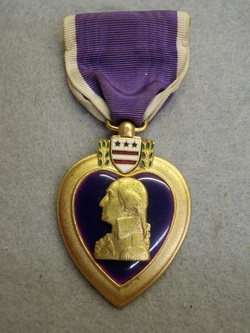
Pfc James A Davis
service # 34129657
DOB 19 October 1921
Gaston Co North Carolina
L Co. 157th inf regt
45th Div
KIA 12 November 1944
in the vicinity of Venafro
service # 34129657
DOB 19 October 1921
Gaston Co North Carolina
L Co. 157th inf regt
45th Div
KIA 12 November 1944
in the vicinity of Venafro
Pfc J L Bridges
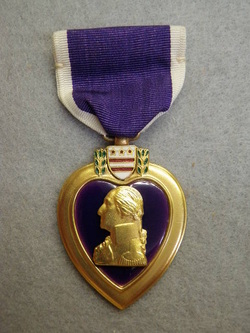
Pfc J L Bridges
service # 14188402
DOB 1923
Cleveland Co North Carolina
253rd inf regt
63rd Div
KIA 24 Feb 1945
service # 14188402
DOB 1923
Cleveland Co North Carolina
253rd inf regt
63rd Div
KIA 24 Feb 1945
Pfc Paul F Deyton

Pfc Paul F Deyton
service # 34898291
DOB 4 November 1945
Yancey Co North Carolina
309th inf regt
78th Div
KIA 12 January 1945
service # 34898291
DOB 4 November 1945
Yancey Co North Carolina
309th inf regt
78th Div
KIA 12 January 1945
Pfc Willard R Seymour
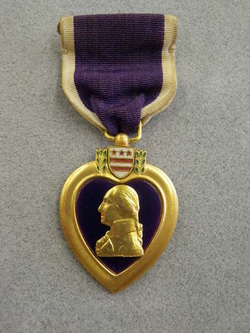
Pfc Willard R Seymour
service # 14037699
Coastal Artillery
From China Grove Rowan Co North Carolina
KIA 10 January 1942 ?? Corregidor Philippine Islands
Newspaper reports that Seymour was KIA while manning a machine gun on 29 Dec.1941 on Corregidor
service # 14037699
Coastal Artillery
From China Grove Rowan Co North Carolina
KIA 10 January 1942 ?? Corregidor Philippine Islands
Newspaper reports that Seymour was KIA while manning a machine gun on 29 Dec.1941 on Corregidor
Pfc Woodrow Wilson Everett
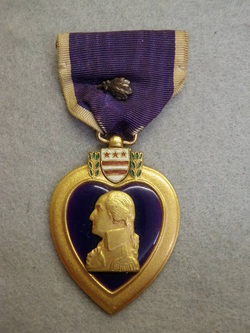
Pfc Woodrow Wilson Everett
Corporal TC
Birth 20 November 1913 North Carolina
Died 30 January 1960
Bronze Star & Purple Heart & OLC
Corporal TC
Birth 20 November 1913 North Carolina
Died 30 January 1960
Bronze Star & Purple Heart & OLC
Pfc Trueheart Fogg
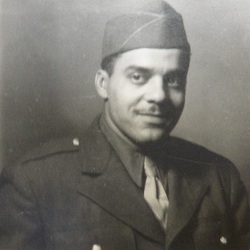
Pfc Trueheart Fogg
DOB 13 July 1916
Hecks Grove North Carolina
Died Sept 1971
Brooklyn New York
Co G 366th inf regt
92nd Inf Div
Awarded the Silver Star for his actions 26 Dec 1944 in Italy
DOB 13 July 1916
Hecks Grove North Carolina
Died Sept 1971
Brooklyn New York
Co G 366th inf regt
92nd Inf Div
Awarded the Silver Star for his actions 26 Dec 1944 in Italy
LCDR Lewis E Dixon
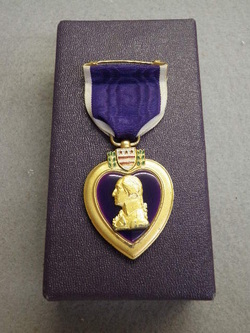
LCDR Lewis E Dixon
USNR
Birth: 26 August 1902
Kingston, North Carolina
USS Miantonomah
CM-10
Sunk by enemy mines off Le Havre France
on 25 September 1944
USS Miantonomah
She was acquired by the United States Navy from her owner, Philadelphia & Norfolk Steamship Co., at Boston, Massachusetts on 5 May 1941; renamed Miantonomah on
14 May 1941; converted for U.S. Navy use as a coastal minelayer by Bethlehem Shipbuilding Co., East Boston, Massachusetts; and commissioned at Boston
on 13 November 1941, Lieutenant Commander Raymond D. Edwards in command.
Invasion of Europe operations
Miantonomah arrived Bristol, England on 16 May and began duty with the 12th Fleet. She
operated out of Bristol until D-Day, 6 June, when she steamed via Cardiff to Plymouth,
England. She continued dispatch and escort duties in British waters until arriving off Grandcamp, France on 25 June. There she embarked Rear Admiral John E. Wilkes
and became flagship for CTF 125. She steamed to Cherbourg on 9 July, and on the 18th Admiral Wilkes hauled down his flag prior to Miantonomah's departure to England.
Arriving Plymouth, later that day, Miantonomah returned to Cherbourg
on the 20th carrying supplies for port clearance operations. For more than two
months, she made runs between English and liberated French ports and
provided valuable support for salvage and clearing operations. On 21 September,
she carried port clearance supplies from Cherbourg to Le Havre, which was liberated by sea and land less than two weeks before.
Sunk by a mine off the French coast
Miantonomah sailed early in the afternoon of the 25th. Because of the
danger of enemy mines, her skipper — Cdr. Austin E. Rowe — ordered "the highest
state of watertight integrity to be set and all personnel not actually on watch
below to be on topside and wear lifejackets" — measures which undoubtedly saved
many lives. With a French harbor pilot at the conn, she skillfully navigated the
inner and outer harbors and cleared the blockships, thence made course for the entrance
to the marked channel. As she steamed about 2,000 yd (1,800 m) out
from the blockships, she was rocked at 14:15 by a tremendous underwater
explosion under the engine room. This blast — possibly followed by a second one
— dazed or injured practically the entire crew. Immediately, the stricken ship
began to sink rapidly by the stern and to starboard.
Damage control efforts proved useless, and as Coast Guard vessels, British motor launches, and a French fishing craft stood by to rescue survivors, her injured skipper ordered Miantonomah to be abandoned. She sank about 20 minutes after the explosion with a loss of some 58 officers and men.
RIP LCDR Lewis E Dixon
USNR
Birth: 26 August 1902
Kingston, North Carolina
USS Miantonomah
CM-10
Sunk by enemy mines off Le Havre France
on 25 September 1944
USS Miantonomah
She was acquired by the United States Navy from her owner, Philadelphia & Norfolk Steamship Co., at Boston, Massachusetts on 5 May 1941; renamed Miantonomah on
14 May 1941; converted for U.S. Navy use as a coastal minelayer by Bethlehem Shipbuilding Co., East Boston, Massachusetts; and commissioned at Boston
on 13 November 1941, Lieutenant Commander Raymond D. Edwards in command.
Invasion of Europe operations
Miantonomah arrived Bristol, England on 16 May and began duty with the 12th Fleet. She
operated out of Bristol until D-Day, 6 June, when she steamed via Cardiff to Plymouth,
England. She continued dispatch and escort duties in British waters until arriving off Grandcamp, France on 25 June. There she embarked Rear Admiral John E. Wilkes
and became flagship for CTF 125. She steamed to Cherbourg on 9 July, and on the 18th Admiral Wilkes hauled down his flag prior to Miantonomah's departure to England.
Arriving Plymouth, later that day, Miantonomah returned to Cherbourg
on the 20th carrying supplies for port clearance operations. For more than two
months, she made runs between English and liberated French ports and
provided valuable support for salvage and clearing operations. On 21 September,
she carried port clearance supplies from Cherbourg to Le Havre, which was liberated by sea and land less than two weeks before.
Sunk by a mine off the French coast
Miantonomah sailed early in the afternoon of the 25th. Because of the
danger of enemy mines, her skipper — Cdr. Austin E. Rowe — ordered "the highest
state of watertight integrity to be set and all personnel not actually on watch
below to be on topside and wear lifejackets" — measures which undoubtedly saved
many lives. With a French harbor pilot at the conn, she skillfully navigated the
inner and outer harbors and cleared the blockships, thence made course for the entrance
to the marked channel. As she steamed about 2,000 yd (1,800 m) out
from the blockships, she was rocked at 14:15 by a tremendous underwater
explosion under the engine room. This blast — possibly followed by a second one
— dazed or injured practically the entire crew. Immediately, the stricken ship
began to sink rapidly by the stern and to starboard.
Damage control efforts proved useless, and as Coast Guard vessels, British motor launches, and a French fishing craft stood by to rescue survivors, her injured skipper ordered Miantonomah to be abandoned. She sank about 20 minutes after the explosion with a loss of some 58 officers and men.
RIP LCDR Lewis E Dixon
Technician 5th Class Jerry M Chadwick
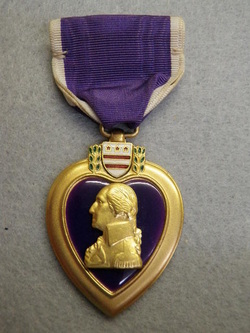
Technician 5th Class US Army
Jerry M Chadwick
service# 34409624
55th Engineer Battalion
10th Armored Division
"The Tiger Division"
KIA 19 December 1944
From Onslow County North Carolina
The division, which served under General George S. Patton's Third Army, was activated on 15 July 1942, at Fort Benning, Georgia. The 10th Armored Division entered France through the port of Cherbourg, 23 September 1944, and put in a month of training at Teurtheville, France, before entering combat. Leaving Teurtheville, 25 October, the Division moved to Mars-la-Tourhere it entered combat, 2 November, in support of the XX Corps, containing enemy troops in the area. Later that month, the 10th participated in the capture of Metz. It was the first time in 1500 years that the ancient fortress at Metz fell. After fierce fighting, the 10th slammed into the vaunted Siegfried Line and led General George S. Patton's Third Army into Germany on 19 November 1944.
On 17 December 1944 the Allied tide of battle came to a halt. In the north, the Germans had launched their Ardennes Offensive later called The Battle of the Bulge. The 10th was the first
division to move north in an attempt to impede the German assault. Combat
Command A moved 75 miles in a single day, directly into the attack. The 10th
assumed responsibility to protect Luxembourg and the Third Army's right flank. Combat Command B was dispatched directly to Bastogne by Patton on 17 December 1944. At that time, the 101st Airborne Division was on respite in France; Combat Command B of the 10th Armored Division was the only combat unit defending Bastogne at the time. For over eight hours CCB held Bastogne alone, against
eight German Divisions. When the 101 Airborne Division arrived both military
outfits were surrounded and trapped. However CCB and the 101 Airborne Division
maintained a defensive posture and held until the German offensive burned out
several days later.
At the Conclusion of the battle, the 10th Armored Division's, 21st Tank
Battalion and Combat Command B were awarded the Presidential Unit
Citation for their extraordinary heroism from 17 to 27 December
1944 Battle of the Bulge. The 101 Airborne Division was also honored with the
Presidential Unit Citation for their actions at Bastogne.
The 10th Armored Tigers played key roles in several of the war's greatest
battles, including Combat Command B's gallant defense of Bastogne. Years after
the war, General Anthony McAuliffe praised the men of the Tiger Division, noting that, "In
my opinion, Combat Command B of the 10th Armored Division was never properly
credited with their important role in the Bastogne battle."
A combat attack force was usually commanded by an Infantry battalion
commander or Tank battalion commander. The platoon leader was the combat
attack force engineer. In each combat attack force, when they moved out
to attack, the point party of the attack was usually set up this
way:
Engineer Squad
Infantry Squad
Medium Tank
Medium Tank
Enemy
In this operation, the infantry and the engineer squad rode in
half-tracks. It was important because the rumble of tanks always brought
artillery fire on it.
This can be described as typical unit operations and combat
methodology of the 55th AEB
Jerry M Chadwick
service# 34409624
55th Engineer Battalion
10th Armored Division
"The Tiger Division"
KIA 19 December 1944
From Onslow County North Carolina
The division, which served under General George S. Patton's Third Army, was activated on 15 July 1942, at Fort Benning, Georgia. The 10th Armored Division entered France through the port of Cherbourg, 23 September 1944, and put in a month of training at Teurtheville, France, before entering combat. Leaving Teurtheville, 25 October, the Division moved to Mars-la-Tourhere it entered combat, 2 November, in support of the XX Corps, containing enemy troops in the area. Later that month, the 10th participated in the capture of Metz. It was the first time in 1500 years that the ancient fortress at Metz fell. After fierce fighting, the 10th slammed into the vaunted Siegfried Line and led General George S. Patton's Third Army into Germany on 19 November 1944.
On 17 December 1944 the Allied tide of battle came to a halt. In the north, the Germans had launched their Ardennes Offensive later called The Battle of the Bulge. The 10th was the first
division to move north in an attempt to impede the German assault. Combat
Command A moved 75 miles in a single day, directly into the attack. The 10th
assumed responsibility to protect Luxembourg and the Third Army's right flank. Combat Command B was dispatched directly to Bastogne by Patton on 17 December 1944. At that time, the 101st Airborne Division was on respite in France; Combat Command B of the 10th Armored Division was the only combat unit defending Bastogne at the time. For over eight hours CCB held Bastogne alone, against
eight German Divisions. When the 101 Airborne Division arrived both military
outfits were surrounded and trapped. However CCB and the 101 Airborne Division
maintained a defensive posture and held until the German offensive burned out
several days later.
At the Conclusion of the battle, the 10th Armored Division's, 21st Tank
Battalion and Combat Command B were awarded the Presidential Unit
Citation for their extraordinary heroism from 17 to 27 December
1944 Battle of the Bulge. The 101 Airborne Division was also honored with the
Presidential Unit Citation for their actions at Bastogne.
The 10th Armored Tigers played key roles in several of the war's greatest
battles, including Combat Command B's gallant defense of Bastogne. Years after
the war, General Anthony McAuliffe praised the men of the Tiger Division, noting that, "In
my opinion, Combat Command B of the 10th Armored Division was never properly
credited with their important role in the Bastogne battle."
A combat attack force was usually commanded by an Infantry battalion
commander or Tank battalion commander. The platoon leader was the combat
attack force engineer. In each combat attack force, when they moved out
to attack, the point party of the attack was usually set up this
way:
Engineer Squad
Infantry Squad
Medium Tank
Medium Tank
Enemy
In this operation, the infantry and the engineer squad rode in
half-tracks. It was important because the rumble of tanks always brought
artillery fire on it.
This can be described as typical unit operations and combat
methodology of the 55th AEB
Tech 4 Clay Y Macy
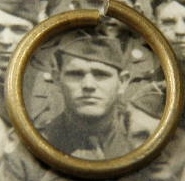
Tech 4 Clay Y Macy
serial# 34603753
Birth: Kernersville, North Carolina
Co A 737th Tank Battalion
"Patton's Spearheaders"
KIA: 15 March 1945
737th Tank Battalion
Info below taken from the 737th
website.
Battalion History
Our unit
ranked high among the most decorated separate tank battalions fighting in Europe
during World War II. It received the Presidential Unit Citation from Harry
Truman, and the Croix de Guerre with Silver Star from the French Government, for
its action at Mortain France during August 10 - 13, 1944 -- and 22 commendations
from higher headquarters for excellent performance in other
battles.
"737" participated in all of the five major battles
(Normandy, Northern France, Ardennes-Alsace, Rhineland, and Central Europe).
During 299 days of actual combat members of the unit were awarded 2
Distinguished Service Crosses, 22 Silver Stars, 188 Bronze Stars, more than 400
purple hearts, and two Croix de Guerre's. Three enlisted men received
battlefield commissions.
The unit landed at Omaha Beach on July 12 and 13,
1944, assigned to the First Army. After the capture of Saint Lo in France, "737"
was transferred to the Third Army on August 6, 1944. Although it fought most of
the war with the Third Army, our battalion was briefly loaned to the First Army
again in April 1945 to help clean up the Ruhr Pocket that contained 317,000
German soldiers. This campaign started at Brilon and ended in Menden on the Ruhr
River. In five days "737" cleared 42 towns. One of our reconnaissance patrols
killed Lieutenant General Joachim Von Kortzfleisch, second in command to Field
Marshal Walter Model, when he tried to escape.
At times the battalion was badly mauled by some of
the best soldiers in the German Army. The Krauts destroyed 66 medium and 8 light
tanks. (A tank battalion has an initial strength of 59 medium tanks, 17 light
tanks, and 751 men.)
Combat took a heavy toll in manpower. Our unit had
6 officers and 58 enlisted men killed in action. One officer and 20 enlisted men
were reported missing. The names of one officer and two enlisted men are listed
on the wall in the Luxembourg Cemetery as soldiers "who sleep in unknown
graves".
These losses were not without glory. When General
Patton was observing our troops at the Moselle River crossing he said "that's
the way tanks should fight."
General Patton sent a letter on 17 Nov 45 to the
officers and men of the 5th Infantry Division, to whom we were attached. He
wrote "To my mind history does not record incidents of greater valor than your
assault crossings of the Sauer and the Rhine. You crossed so many rivers I am
persuaded many of you have web feet ..."
"737" was the first tank battalion of the Third
Army to cross the Moselle and Meurthe Rivers, the first armored unit in XII
Corps to touch German soil, and the first armored unit of the Third Army to
cross the Rhine River and enter Frankfurt. It ended the war in Czechoslovakia
(Sudetenland) after capturing Houzina, Volary and Winterberg.
One platoon of Company "C", commanded by your
webmaster, liberated 118 Jewish girls in Volary on May 5, 1945. These young
ladies, with an average weight of 82 pounds, survived the 700 - kilometer Death
March that began in Poland on January 29 and lasted 97 days. The Death March
story has been dramatized on national
television.
Another historical incident occurred in Volary --
the last official casualty in the ETO. A Czech-American citizen, Pfc Charles
Havlat of the 803rd Tank Destroyer Battalion, was killed when elements of the
11th Panzer Division ambushed his reconnaissance platoon 4 km northeast of the
town. This event took place at 0820 hours on May 7, about 10 minutes before the
"cease-fire" orders became effective. Your webmaster was at the
scene.
German occupation in Kreis Vilshofen was soon
interrupted by a reorganization into the 737th Amphibian Tractor Battalion. Our
unit moved to Camp Lucky Strike, France, and sailed from La Havre on the liberty
ship Timothy H. Dwight. Operation Olympic (invasion of the island of Kyushu) was
scrapped by the A-bomb, but the 737 went to Ford Ord, California, and trained
until deactivated on 15 Nov 1945.
Our Battalion was attached to three hard-fighting
outfits during and after the war:
France
35th Infantry
Division
Luxembourg,
Germany, Czechoslovakia
5th Infantry
Division German
Occupation 83rd
Infantry Division
serial# 34603753
Birth: Kernersville, North Carolina
Co A 737th Tank Battalion
"Patton's Spearheaders"
KIA: 15 March 1945
737th Tank Battalion
Info below taken from the 737th
website.
Battalion History
Our unit
ranked high among the most decorated separate tank battalions fighting in Europe
during World War II. It received the Presidential Unit Citation from Harry
Truman, and the Croix de Guerre with Silver Star from the French Government, for
its action at Mortain France during August 10 - 13, 1944 -- and 22 commendations
from higher headquarters for excellent performance in other
battles.
"737" participated in all of the five major battles
(Normandy, Northern France, Ardennes-Alsace, Rhineland, and Central Europe).
During 299 days of actual combat members of the unit were awarded 2
Distinguished Service Crosses, 22 Silver Stars, 188 Bronze Stars, more than 400
purple hearts, and two Croix de Guerre's. Three enlisted men received
battlefield commissions.
The unit landed at Omaha Beach on July 12 and 13,
1944, assigned to the First Army. After the capture of Saint Lo in France, "737"
was transferred to the Third Army on August 6, 1944. Although it fought most of
the war with the Third Army, our battalion was briefly loaned to the First Army
again in April 1945 to help clean up the Ruhr Pocket that contained 317,000
German soldiers. This campaign started at Brilon and ended in Menden on the Ruhr
River. In five days "737" cleared 42 towns. One of our reconnaissance patrols
killed Lieutenant General Joachim Von Kortzfleisch, second in command to Field
Marshal Walter Model, when he tried to escape.
At times the battalion was badly mauled by some of
the best soldiers in the German Army. The Krauts destroyed 66 medium and 8 light
tanks. (A tank battalion has an initial strength of 59 medium tanks, 17 light
tanks, and 751 men.)
Combat took a heavy toll in manpower. Our unit had
6 officers and 58 enlisted men killed in action. One officer and 20 enlisted men
were reported missing. The names of one officer and two enlisted men are listed
on the wall in the Luxembourg Cemetery as soldiers "who sleep in unknown
graves".
These losses were not without glory. When General
Patton was observing our troops at the Moselle River crossing he said "that's
the way tanks should fight."
General Patton sent a letter on 17 Nov 45 to the
officers and men of the 5th Infantry Division, to whom we were attached. He
wrote "To my mind history does not record incidents of greater valor than your
assault crossings of the Sauer and the Rhine. You crossed so many rivers I am
persuaded many of you have web feet ..."
"737" was the first tank battalion of the Third
Army to cross the Moselle and Meurthe Rivers, the first armored unit in XII
Corps to touch German soil, and the first armored unit of the Third Army to
cross the Rhine River and enter Frankfurt. It ended the war in Czechoslovakia
(Sudetenland) after capturing Houzina, Volary and Winterberg.
One platoon of Company "C", commanded by your
webmaster, liberated 118 Jewish girls in Volary on May 5, 1945. These young
ladies, with an average weight of 82 pounds, survived the 700 - kilometer Death
March that began in Poland on January 29 and lasted 97 days. The Death March
story has been dramatized on national
television.
Another historical incident occurred in Volary --
the last official casualty in the ETO. A Czech-American citizen, Pfc Charles
Havlat of the 803rd Tank Destroyer Battalion, was killed when elements of the
11th Panzer Division ambushed his reconnaissance platoon 4 km northeast of the
town. This event took place at 0820 hours on May 7, about 10 minutes before the
"cease-fire" orders became effective. Your webmaster was at the
scene.
German occupation in Kreis Vilshofen was soon
interrupted by a reorganization into the 737th Amphibian Tractor Battalion. Our
unit moved to Camp Lucky Strike, France, and sailed from La Havre on the liberty
ship Timothy H. Dwight. Operation Olympic (invasion of the island of Kyushu) was
scrapped by the A-bomb, but the 737 went to Ford Ord, California, and trained
until deactivated on 15 Nov 1945.
Our Battalion was attached to three hard-fighting
outfits during and after the war:
France
35th Infantry
Division
Luxembourg,
Germany, Czechoslovakia
5th Infantry
Division German
Occupation 83rd
Infantry Division
S/sgt Willard G McGee
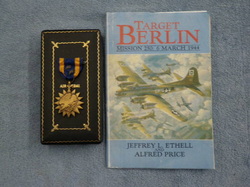
S/sgt Willard R McGee From: North Carolina
service # 14164976
562nd Bomb Squadron
388th Bomb Group
KIA: Mission to Berlin 6 March 1944
B-17 waist gunner on the "Suzy Sagtitz" 42-31135
The B-17 was knocked down and both right engines were on fire,
the crew began to abandon and were successful except McGee
They had been shot down by Hauptmann Hugo Frey who flew in the 2./JG
1and from April 1943 as Staffelkapitan 7./JG 11. Frey had a total of 32
victories and was KIA himself on 3 June 1944 when his aircraft was
hit.
service # 14164976
562nd Bomb Squadron
388th Bomb Group
KIA: Mission to Berlin 6 March 1944
B-17 waist gunner on the "Suzy Sagtitz" 42-31135
The B-17 was knocked down and both right engines were on fire,
the crew began to abandon and were successful except McGee
They had been shot down by Hauptmann Hugo Frey who flew in the 2./JG
1and from April 1943 as Staffelkapitan 7./JG 11. Frey had a total of 32
victories and was KIA himself on 3 June 1944 when his aircraft was
hit.
